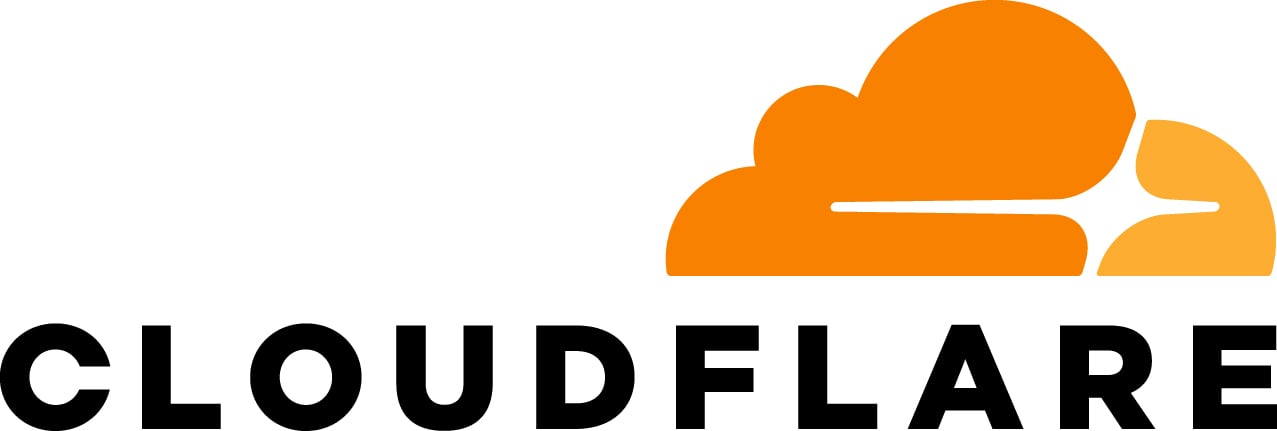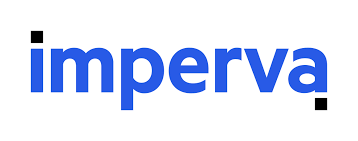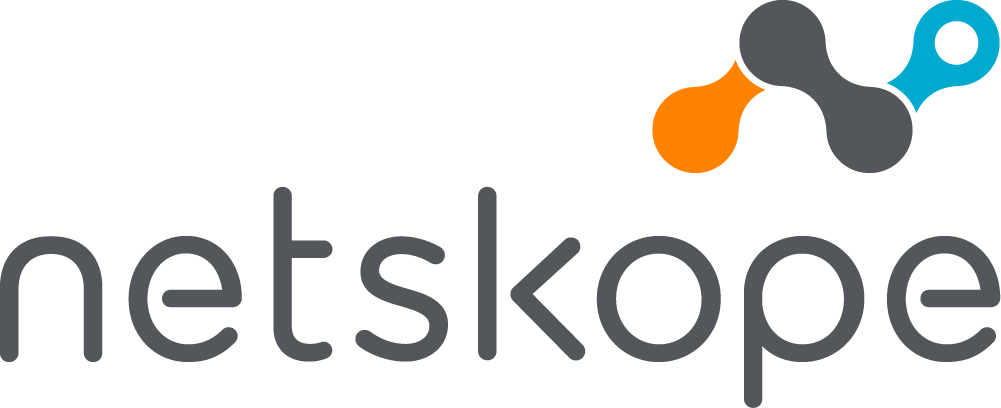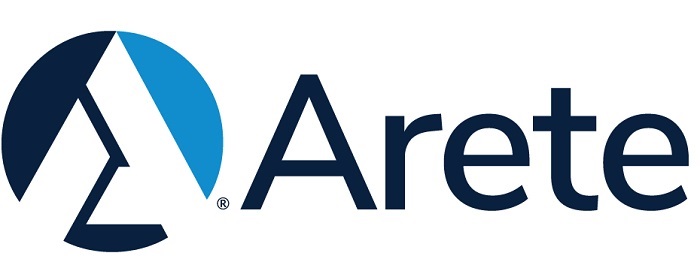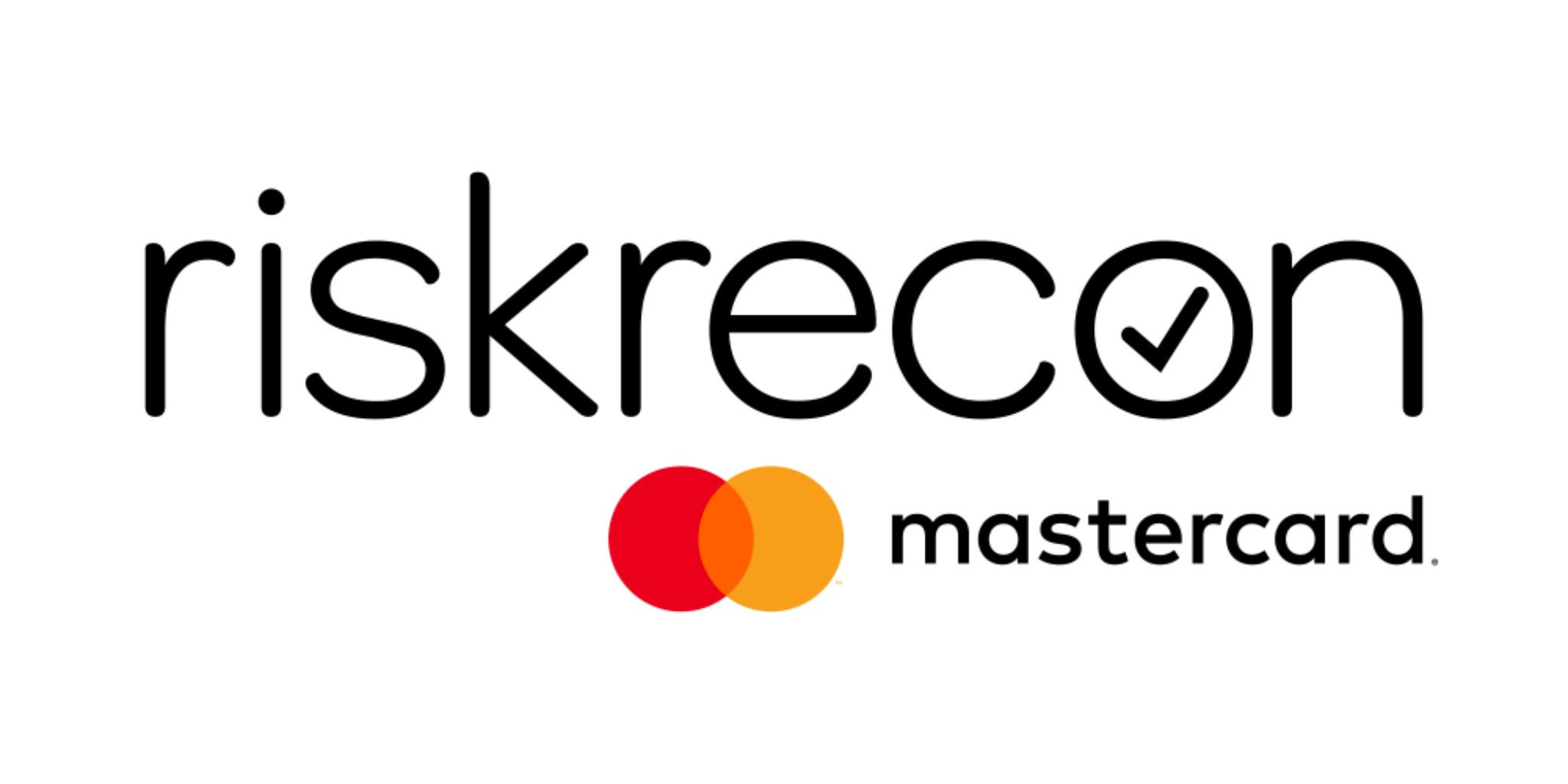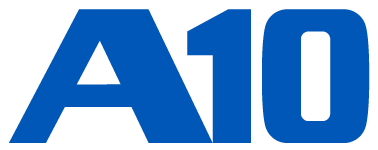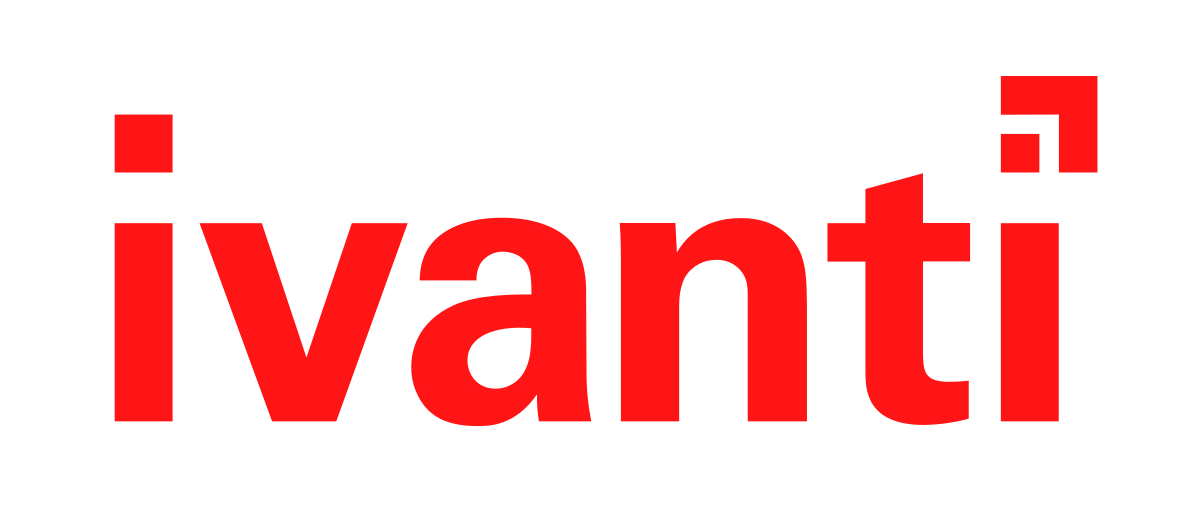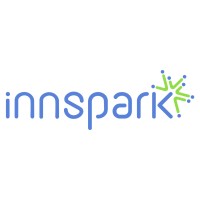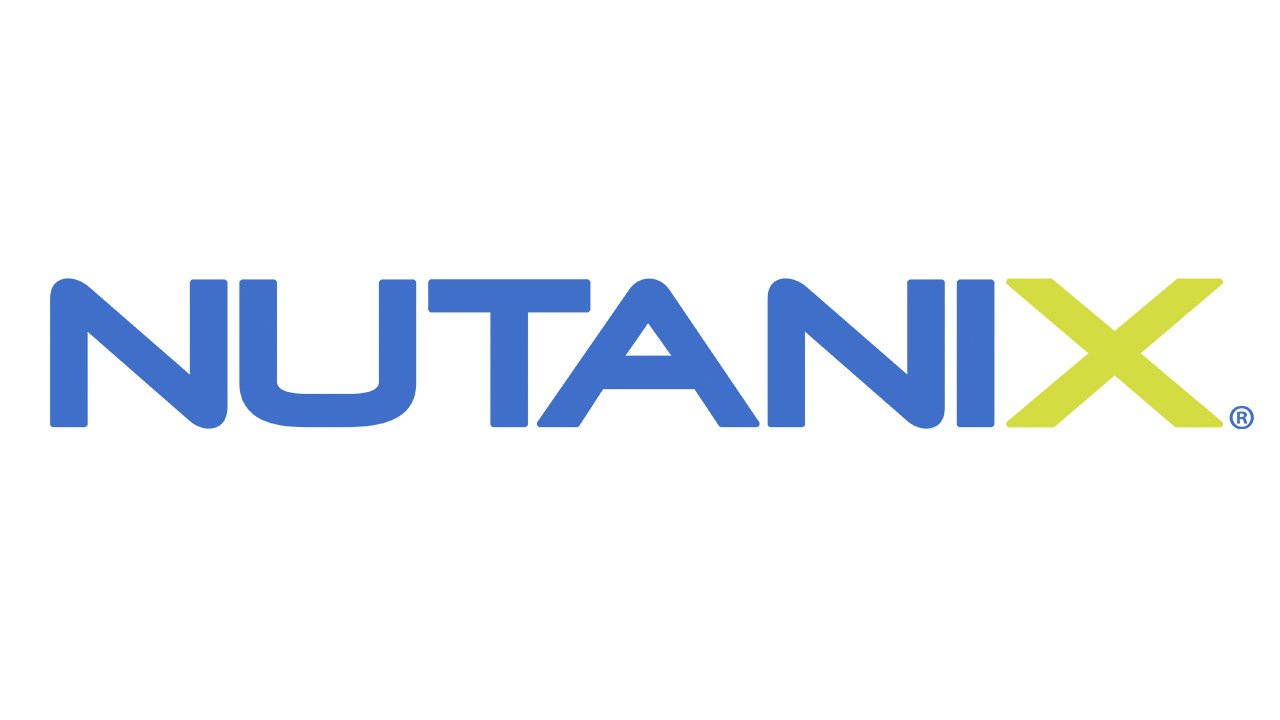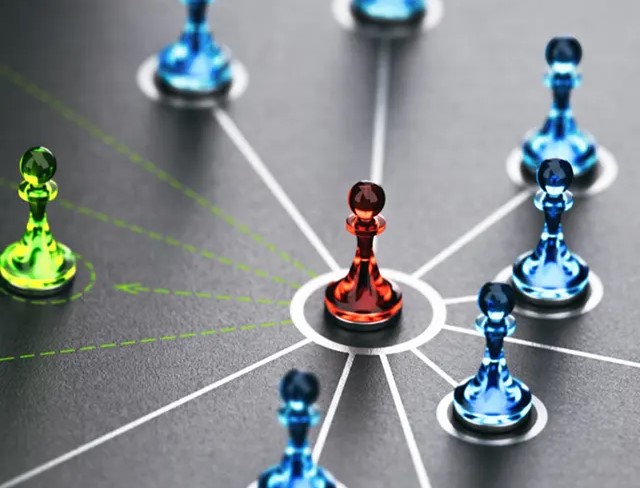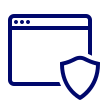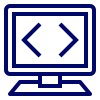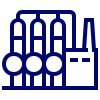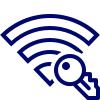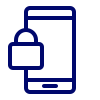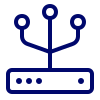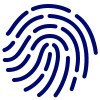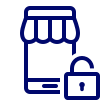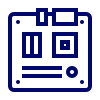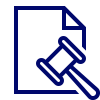| Security & Privacy Governance |
Security & Privacy Governance Program
|
GOV-01 |
Mechanisms exist to facilitate the implementation of cybersecurity and
privacy governance controls. |
- Steering committee - Digital Security Program (DSP) - Cybersecurity & Data
Protection Program (CDPP) |
E-GOV-01 E-GOV-02 |
| Security & Privacy Governance |
Steering Committee |
GOV-01.1 |
Mechanisms exist to coordinate cybersecurity, privacy and business alignment
through a steering committee or advisory board, comprising of key cybersecurity,
privacy and business executives, which meets formally and on a regular basis. |
- Steering committee - Digital Security Program (DSP) - Cybersecurity & Data
Protection Program (CDPP) |
E-GOV-03 |
| Security & Privacy Governance |
Status Reporting To Governing Body |
GOV-01.2 |
Mechanisms exist to provide governance oversight reporting and
recommendations to those entrusted to make executive decisions about matters
considered material to the organization’s cybersecurity and privacy program. |
|
E-CPL-05 E-CPL-09 E-GOV-03 E-GOV-04 E-GOV-05 E-GOV-06 E-GOV-07 E-GOV-13 |
| Security & Privacy Governance |
Publishing Security & Privacy Documentation
|
GOV-02 |
Mechanisms exist to establish, maintain and disseminate cybersecurity and
privacy policies, standards and procedures. |
- Steering committee - Digital Security Program (DSP) - Cybersecurity & Data
Protection Program (CDPP) - Governance, Risk and Compliance Solution (GRC) tool
(Ostendio, ZenGRC, RequirementONE, Allgress, Archer, RSAM, Metric stream, etc.)
- Wiki - SharePoint |
E-GOV-08 E-GOV-09 E-GOV-11 |
| Security & Privacy Governance |
Periodic Review & Update of Security & Privacy Program |
GOV-03 |
Mechanisms exist to review the cybersecurity and privacy program, including
policies, standards and procedures, at planned intervals or if significant
changes occur to ensure their continuing suitability, adequacy and
effectiveness.
|
- Governance, Risk and Compliance Solution (GRC) tool (Ostendio, ZenGRC,
RequirementONE, Allgress, Archer, RSAM, Metric stream, etc.) - Steering
committee |
E-GOV-12 |
| Security & Privacy Governance |
Assigned Security & Privacy Responsibilities
|
GOV-04 |
Mechanisms exist to assign a qualified individual with the mission and
resources to centrally-manage, coordinate, develop, implement and maintain an
enterprise-wide cybersecurity and privacy program.
|
- NIST NICE Framework - Chief Information Security Officer (CISO) |
E-HRS-01 E-HRS-05 E-HRS-06 E-HRS-07 E-HRS-08 E-HRS-09 E-HRS-10 E-HRS-13 E-HRS-15 |
| Security & Privacy Governance |
Measures of Performance
|
GOV-05 |
Mechanisms exist to develop, report and monitor cybersecurity and privacy
program measures of performance. |
- Metrics - Governance, Risk and Compliance Solution (GRC) tool (Ostendio,
ZenGRC, RequirementONE, Allgress, Archer, RSAM, Metric stream, etc.) -
Enterprise Risk Management (ERM) solution |
E-GOV-13 |
| Security & Privacy Governance |
Key Performance Indicators (KPIs) |
GOV-05.1 |
Mechanisms exist to develop, report and monitor Key Performance Indicators
(KPIs) to assist organizational management in performance monitoring and trend
analysis of the cybersecurity and privacy program. |
- Key Performance Indicators (KPIs) |
|
| Security & Privacy Governance |
Key Risk Indicators (KRIs) |
GOV-05.2 |
Mechanisms exist to develop, report and monitor Key Risk Indicators (KRIs)
to assist senior management in performance monitoring and trend analysis of the
cybersecurity and privacy program. |
- Key Risk Indicators (KRIs) |
|
| Security & Privacy Governance |
Contacts With Authorities
|
GOV-06 |
Mechanisms exist to identify and document appropriate contacts with relevant
law enforcement and regulatory bodies. |
- Threat intelligence personnel - Integrated Security Incident Response Team
(ISIRT) |
|
| Security & Privacy Governance |
Contacts With Groups & Associations
|
GOV-07 |
Mechanisms exist to establish contact with selected groups and associations
within the cybersecurity & privacy communities to: ▪ Facilitate ongoing
cybersecurity and privacy education and training for organizational personnel; ▪
Maintain currency with recommended cybersecurity and privacy practices,
techniques and technologies; and ▪ Share current security-related information
including threats, vulnerabilities and incidents.
|
- SANS - CISO Executive Network - ISACA chapters - IAPP chapters - ISAA chapters |
E-THR-02 |
| Security & Privacy Governance |
Defining Business Context & Mission |
GOV-08 |
Mechanisms exist to define the context of its business model and document
the mission of the organization. |
|
E-PRM-01 |
| Security & Privacy Governance |
Define Control Objectives |
GOV-09 |
Mechanisms exist to establish control objectives as the basis for the
selection, implementation and management of the organization’s internal control
system. |
|
E-GOV-10 |
| Security & Privacy Governance |
Data Governance |
GOV-10 |
Mechanisms exist to facilitate data governance to oversee the organization's
policies, standards and procedures so that sensitive/regulated data is
effectively managed and maintained in accordance with applicable statutory,
regulatory and contractual obligations. |
|
|
| Security & Privacy Governance |
Purpose Validation |
GOV-11 |
Mechanisms exist to monitor mission/business-critical services or functions
to ensure those resources are being used consistent with their intended purpose. |
|
|
| Security & Privacy Governance |
Forced Technology Transfer (FTT) |
GOV-12 |
Mechanisms exist to avoid and/or constrain the forced exfiltration of
sensitive / regulated information (e.g., Intellectual Property (IP)) to the host
government for purposes of market access or market management practices. |
- Board of Directors (Bod) Ethics Committee |
|
| Security & Privacy Governance |
State-Sponsored Espionage |
GOV-13 |
Mechanisms exist to constrain the host government's ability to leverage the
organization's technology assets for economic or political espionage and/or
cyberwarfare activities.
|
- Board of Directors (Bod) Ethics Committee |
|
| Security & Privacy Governance |
Business As Usual (BAU) Secure Practices |
GOV-14 |
Mechanisms exist to incorporate cybersecurity and privacy principles into
Business As Usual (BAU) practices through executive leadership involvement. |
|
|
| Security & Privacy Governance |
Operationalizing Cybersecurity & Privacy Practices |
GOV-15 |
Mechanisms exist to compel data and/or process owners to operationalize
cybersecurity and privacy practices for each system, application and/or service
under their control. |
|
|
| Security & Privacy Governance |
Select Controls |
GOV-15.1 |
Mechanisms exist to compel data and/or process owners to select required
cybersecurity and privacy controls for each system, application and/or service
under their control. |
|
|
| Security & Privacy Governance |
Implement Controls |
GOV-15.2 |
Mechanisms exist to compel data and/or process owners to implement required
cybersecurity and privacy controls for each system, application and/or service
under their control. |
|
|
| Security & Privacy Governance |
Assess Controls |
GOV-15.3 |
Mechanisms exist to compel data and/or process owners to assess if required
cybersecurity and privacy controls for each system, application and/or service
under their control are implemented correctly and are operating as intended. |
|
|
| Security & Privacy Governance |
Authorize Systems, Applications & Services |
GOV-15.4 |
Mechanisms exist to compel data and/or process owners to obtain
authorization for the production use of each system, application and/or service
under their control. |
|
|
| Security & Privacy Governance |
Monitor Controls |
GOV-15.5 |
Mechanisms exist to compel data and/or process owners to monitor systems,
applications and/or services under their control on an ongoing basis for
applicable threats and risks, as well as to ensure cybersecurity and privacy
controls are operating as intended. |
|
|
| Asset Management |
Asset Governance
|
AST-01 |
Mechanisms exist to facilitate an IT Asset Management (ITAM) program to
implement and manage asset management controls. |
- Generally Accepted Accounting Principles (GAAP) - ITIL - Configuration
Management Database (CMDB) - IT Asset Management (ITAM) program |
E-AST-01 |
| Asset Management |
Asset-Service Dependencies |
AST-01.1 |
Mechanisms exist to identify and assess the security of technology assets
that support more than one critical business function.
|
|
E-BCM-09 |
| Asset Management |
Stakeholder Identification & Involvement |
AST-01.2 |
Mechanisms exist to identify and involve pertinent stakeholders of critical
systems, applications and services to support the ongoing secure management of
those assets. |
|
E-CPL-03 |
| Asset Management |
Standardized Naming Convention |
AST-01.3 |
Mechanisms exist to implement a scalable, standardized naming convention for
systems, applications and services that avoids asset naming conflicts. |
|
|
| Asset Management |
Asset Inventories
|
AST-02 |
Mechanisms exist to perform inventories of technology assets that: ▪
Accurately reflects the current systems, applications and services in use; ▪
Identifies authorized software products, including business justification
details; ▪ Is at the level of granularity deemed necessary for tracking and
reporting; ▪ Includes organization-defined information deemed necessary to
achieve effective property accountability; and ▪ Is available for review and
audit by designated organizational personnel. |
- ManageEngine AssetExplorer - LANDesk IT Asset Management Suite -
ServiceNow (https://www.servicenow.com/) - Solarwinds
(https://www.solarwinds.com/) - CrowdStrike - JAMF - ITIL - Configuration
Management Database (CMDB) |
E-AST-04 E-AST-05 E-AST-07 |
| Asset Management |
Updates During Installations / Removals |
AST-02.1 |
Mechanisms exist to update asset inventories as part of component
installations, removals and asset upgrades.
|
- CrowdStrike - JAMF - ITIL - Configuration Management Database (CMDB) |
|
| Asset Management |
Automated Unauthorized Component Detection |
AST-02.2 |
Automated mechanisms exist to detect and alert upon the detection of
unauthorized hardware, software and firmware components. |
- CimTrak Integrity Suite (https://www.cimcor.com/cimtrak/) - DHCP logging -
Active discovery tools - NNT Change Tracker (https://www.newnettechnologies.com)
- Vectra - Tripwire Enterprise
(https://www.tripwire.com/products/tripwire-enterprise/) - Puppet
(https://puppet.com/) - Chef (https://www.chef.io/) (https://www.chef.io/) -
Microsoft SCCM - CimTrak Integrity Suite (https://www.cimcor.com/cimtrak/) |
|
| Asset Management |
Component Duplication Avoidance
|
AST-02.3 |
Mechanisms exist to establish and maintain an authoritative source and
repository to provide a trusted source and accountability for approved and
implemented system components that prevents assets from being duplicated in
other asset inventories. |
- ITIL - Configuration Management Database (CMDB) - Manual or automated process |
|
| Asset Management |
Approved Baseline Deviations |
AST-02.4 |
Mechanisms exist to document and govern instances of approved deviations
from established baseline configurations.
|
- CimTrak Integrity Suite (https://www.cimcor.com/cimtrak/) - NNT Change
Tracker (https://www.newnettechnologies.com) - Tripwire Enterprise
(https://www.tripwire.com/products/tripwire-enterprise/) - SCCM - Puppet
(https://puppet.com/) - Chef (https://www.chef.io/) (https://www.chef.io/) -
Microsoft SCCM |
E-RSK-03 E-TDA-14 |
| Asset Management |
Network Access Control (NAC) |
AST-02.5 |
Automated mechanisms exist to employ Network Access Control (NAC), or a
similar technology, that is capable of detecting unauthorized devices and
disable network access to those unauthorized devices. |
- Cisco NAC - Aruba Networks - Juniper NAC - Packet Fence - Symantec NAC -
Sophos NAC - Bradford Networks NAC Director - Cisco ISE - ForeScout |
|
| Asset Management |
Dynamic Host Configuration Protocol (DHCP) Server Logging |
AST-02.6 |
Mechanisms exist to enable Dynamic Host Configuration Protocol (DHCP) server
logging to improve asset inventories and assist in detecting unknown systems.
|
- Splunk - Manual Process - Build Automation Tools - NNT Log Tracker
(https://www.newnettechnologies.com/event-log-management.html) - Chef
(https://www.chef.io/) (https://www.chef.io/) - Puppet (https://puppet.com/) -
Tripwire Enterprise (https://www.tripwire.com/products/tripwire-enterprise/) |
E-MON-04 |
| Asset Management |
Software Licensing Restrictions |
AST-02.7 |
Mechanisms exist to protect Intellectual Property (IP) rights with software
licensing restrictions.
|
- Manual Process - Tripwire Enterprise
(https://www.tripwire.com/products/tripwire-enterprise/) |
|
| Asset Management |
Data Action Mapping |
AST-02.8 |
Mechanisms exist to create and maintain a map of technology assets where
sensitive/regulated data is stored, transmitted or processed. |
- Visio - LucidChart |
E-DCH-05 |
| Asset Management |
Configuration Management Database (CMDB) |
AST-02.9 |
Mechanisms exist to implement and manage a Configuration Management Database
(CMDB), or similar technology, to monitor and govern technology asset-specific
information. |
- Configuration Management Database (CMDB) |
|
| Asset Management |
Automated Location Tracking |
AST-02.10 |
Mechanisms exist to track the geographic location of system components. |
|
|
| Asset Management |
Component Assignment |
AST-02.11 |
Mechanisms exist to bind components to a specific system. |
|
|
| Asset Management |
Asset Ownership Assignment |
AST-03 |
Mechanisms exist to ensure asset ownership responsibilities are assigned,
tracked and managed at a team, individual, or responsible organization level to
establish a common understanding of requirements for asset protection. |
|
E-AST-01 E-CPL-03 |
| Asset Management |
Accountability Information |
AST-03.1 |
Mechanisms exist to include capturing the name, position and/or role of
individuals responsible/accountable for administering assets as part of the
technology asset inventory process. |
|
E-AST-01 |
| Asset Management |
Provenance |
AST-03.2 |
Mechanisms exist to track the origin, development, ownership, location and
changes to systems, system components and associated data. |
|
E-AST-22 |
| Asset Management |
Network Diagrams & Data Flow Diagrams (DFDs) |
AST-04 |
Mechanisms exist to maintain network architecture diagrams that: ▪ Contain
sufficient detail to assess the security of the network's architecture; ▪
Reflect the current architecture of the network environment; and ▪ Document all
sensitive/regulated data flows. |
- High-Level Diagram (HLD) - Low-Level Diagram (LLD) - Data Flow Diagram
(DFD) - Solarwinds (https://www.solarwinds.com/) - Paessler - PRTG |
E-DCH-03 E-DCH-04 E-DCH-05 |
| Asset Management |
Asset Scope Classification |
AST-04.1 |
Mechanisms exist to determine cybersecurity and privacy control
applicability by identifying, assigning and documenting the appropriate asset
scope categorization for all systems, applications, services and personnel
(internal and third-parties). |
|
E-AST-02 E-CPL-02 E-DCH-01 E-DCH-02 |
| Asset Management |
Control Applicability Boundary Graphical Representation |
AST-04.2 |
Mechanisms exist to ensure control applicability is appropriately-determined
for systems, applications, services and third parties by graphically
representing applicable boundaries. |
|
E-AST-02 E-CPL-02 |
| Asset Management |
Compliance-Specific Asset Identification |
AST-04.3 |
Mechanisms exist to create and maintain a current inventory of systems,
applications and services that are in scope for statutory, regulatory and/or
contractual compliance obligations that provides sufficient detail to determine
control applicability, based on asset scope categorization. |
|
E-AST-02 E-CPL-02 |
| Asset Management |
Security of Assets & Media |
AST-05 |
Mechanisms exist to maintain strict control over the internal or external
distribution of any kind of sensitive/regulated media.
|
- ITIL - Configuration Management Database (CMDB) - Definitive Software
Library (DSL) |
|
| Asset Management |
Management Approval For External Media Transfer |
AST-05.1 |
Mechanisms exist to obtain management approval for any sensitive / regulated
media that is transferred outside of the organization's facilities. |
|
|
| Asset Management |
Unattended End-User Equipment
|
AST-06 |
Mechanisms exist to implement enhanced protection measures for unattended
systems to protect against tampering and unauthorized access. |
- CimTrak Integrity Suite (https://www.cimcor.com/cimtrak/) - File Integrity
Monitoring (FIM) - Lockable casings - Tamper detection tape - Full Disk
Encryption (FDE) - NNT Change Tracker (https://www.newnettechnologies.com) |
|
| Asset Management |
Asset Storage In Automobiles |
AST-06.1 |
Mechanisms exist to educate users on the need to physically secure laptops
and other mobile devices out of site when traveling, preferably in the trunk of
a vehicle. |
- Security awareness training - Gamification |
|
| Asset Management |
Kiosks & Point of Interaction (PoI) Devices |
AST-07 |
Mechanisms exist to appropriately protect devices that capture
sensitive/regulated data via direct physical interaction from tampering and
substitution.
|
- CimTrak Integrity Suite (https://www.cimcor.com/cimtrak/) - File Integrity
Monitoring (FIM) - Lockable casings - Tamper detection tape - Chip & PIN |
|
| Asset Management |
Tamper Detection |
AST-08 |
Mechanisms exist to periodically inspect systems and system components for
Indicators of Compromise (IoC). |
- ""Burner"" phones & laptops - Tamper tape |
|
| Asset Management |
Secure Disposal, Destruction or Re-Use of Equipment
|
AST-09 |
Mechanisms exist to securely dispose of, destroy or repurpose system
components using organization-defined techniques and methods to prevent
information being recovered from these components. |
- Shred-it - IronMountain - sdelete (sysinternals) - Bootnukem |
E-AST-03 |
| Asset Management |
Return of Assets
|
AST-10 |
Mechanisms exist to ensure that employees and third-party users return all
organizational assets in their possession upon termination of employment,
contract or agreement. |
- Termination checklist - Manual Process - Native OS and Device Asset
Tracking capabilities |
E-AST-01 |
| Asset Management |
Removal of Assets
|
AST-11 |
Mechanisms exist to authorize, control and track technology assets entering
and exiting organizational facilities.
|
- RFID asset tagging - RFID proximity sensors at access points - Asset
management software |
|
| Asset Management |
Use of Personal Devices |
AST-12 |
Mechanisms exist to restrict the possession and usage of personally-owned
technology devices within organization-controlled facilities. |
- BYOD policy |
|
| Asset Management |
Use of Third-Party Devices |
AST-13 |
Mechanisms exist to reduce the risk associated with third-party assets that
are attached to the network from harming organizational assets or exfiltrating
organizational data. |
- NAC - Separate SSIDs for wireless networks - SIEM monitoring/alerting -
Manual process to disable network all unused ports - Network Access Control
(NAC) - Mobile Device Management (MDM) software - Data Loss Prevention (DLP) |
|
| Asset Management |
Usage Parameters |
AST-14 |
Mechanisms exist to monitor and enforce usage parameters that limit the
potential damage caused from the unauthorized or unintentional alteration of
system parameters.
|
- CimTrak Integrity Suite (https://www.cimcor.com/cimtrak/) - NNT Change
Tracker (https://www.newnettechnologies.com) |
|
| Asset Management |
Bluetooth & Wireless Devices |
AST-14.1 |
Mechanisms exist to prevent the usage of Bluetooth and wireless devices
(e.g., Near Field Communications (NFC)) in sensitive areas or unless used in a
Radio Frequency (RF)-screened building. |
|
|
| Asset Management |
Infrared Communications |
AST-14.2 |
Mechanisms exist to prevent line of sight and reflected infrared (IR)
communications use in an unsecured space. |
|
|
| Asset Management |
Tamper Protection |
AST-15 |
Mechanisms exist to verify logical configuration settings and the physical
integrity of critical technology assets throughout their lifecycle. |
- CimTrak Integrity Suite (https://www.cimcor.com/cimtrak/) - Tamper
detection tape - File Integrity Monitoring (FIM) - NNT Change Tracker
(https://www.newnettechnologies.com) - Tripwire Enterprise
(https://www.tripwire.com/products/tripwire-enterprise/) |
|
| Asset Management |
Inspection of Systems, Components & Devices
|
AST-15.1 |
Mechanisms exist to physically and logically inspect critical technology
assets to detect evidence of tampering.
|
- CimTrak Integrity Suite (https://www.cimcor.com/cimtrak/) - Tamper
detection tape - File Integrity Monitoring (FIM) - NNT Change Tracker
(https://www.newnettechnologies.com) - Tripwire Enterprise
(https://www.tripwire.com/products/tripwire-enterprise/) |
|
| Asset Management |
Bring Your Own Device (BYOD) Usage
|
AST-16 |
Mechanisms exist to implement and govern a Bring Your Own Device (BYOD)
program to reduce risk associated with personally-owned devices in the
workplace. |
- AirWatch - SCCM - Casper - BYOD policy |
|
| Asset Management |
Prohibited Equipment & Services |
AST-17 |
Mechanisms exist to govern Supply Chain Risk Management (SCRM) sanctions
that require the removal and prohibition of certain technology services and/or
equipment that are designated as supply chain threats by a statutory or
regulatory body. |
|
E-AST-10 |
| Asset Management |
Roots of Trust Protection |
AST-18 |
Mechanisms exist to provision and protect the confidentiality, integrity and
authenticity of product supplier keys and data that can be used as a “roots of
trust” basis for integrity verification. |
|
|
| Asset Management |
Telecommunications Equipment |
AST-19 |
Mechanisms exist to establish usage restrictions and implementation guidance
for telecommunication equipment to prevent potential damage or unauthorized
modification and to prevent potential eavesdropping. |
|
|
| Asset Management |
Video Teleconference (VTC) Security |
AST-20 |
Mechanisms exist to implement secure Video Teleconference (VTC) capabilities
on endpoint devices and in designated conference rooms, to prevent potential
eavesdropping. |
|
|
| Asset Management |
Voice Over Internet Protocol (VoIP) Security |
AST-21 |
Mechanisms exist to implement secure Internet Protocol Telephony (IPT) that
logically or physically separates Voice Over Internet Protocol (VoIP) traffic
from data networks. |
|
|
| Asset Management |
Microphones & Web Cameras |
AST-22 |
Mechanisms exist to configure assets to prohibit the use of endpoint-based
microphones and web cameras in secure areas or where sensitive information is
discussed. |
|
|
| Asset Management |
Multi-Function Devices (MFD) |
AST-23 |
Mechanisms exist to securely configure Multi-Function Devices (MFD)
according to industry-recognized secure practices for the type of device. |
|
E-TPM-01 |
| Asset Management |
Travel-Only Devices |
AST-24 |
Mechanisms exist to issue personnel travelling overseas with temporary,
loaner or ""travel-only"" end user technology (e.g., laptops and mobile devices)
when travelling to authoritarian countries with a higher-than average risk for
Intellectual Property (IP) theft or espionage against individuals and private
companies. |
|
|
| Asset Management |
Re-Imaging Devices After Travel |
AST-25 |
Mechanisms exist to re-image end user technology (e.g., laptops and mobile
devices) when returning from overseas travel to an authoritarian country with a
higher-than average risk for Intellectual Property (IP) theft or espionage
against individuals and private companies. |
|
|
| Asset Management |
System Administrative Processes |
AST-26 |
Mechanisms exist to develop, implement and govern system administration
processes, with corresponding Standardized Operating Procedures (SOP), for
operating and maintaining systems, applications and services. |
|
|
| Asset Management |
Jump Server |
AST-27 |
Mechanisms exist to conduct remote system administrative functions via a
""jump box"" or ""jump server"" that is located in a separate network zone to
user workstations. |
|
|
| Asset Management |
Database Administrative Processes |
AST-28 |
Mechanisms exist to develop, implement and govern database management
processes, with corresponding Standardized Operating Procedures (SOP), for
operating and maintaining databases. |
|
|
| Asset Management |
Database Management System (DBMS) |
AST-28.1 |
Mechanisms exist to implement and maintain Database Management Systems
(DBMSs), where applicable. |
|
|
| Asset Management |
Radio Frequency Identification (RFID) Security |
AST-29 |
Mechanisms exist to securely govern Radio Frequency Identification (RFID)
deployments to ensure RFID is used safely and securely to protect the
confidentiality and integrity of data and prevent the compromise of secure
spaces. |
|
|
| Asset Management |
Contactless Access Control Systems |
AST-29.1 |
Mechanisms exist to securely configure contactless access control systems
incorporating contactless RFID or smart cards to protect the confidentiality and
integrity of data and prevent the compromise of secure spaces. |
|
|
| Asset Management |
Decommissioning |
AST-30 |
Mechanisms exist to ensure systems, applications and services are properly
decommissioned so that data is properly transitioned to new systems or archived
in accordance with applicable organizational standards, as well as statutory,
regulatory and contractual obligations. |
|
|
| Business Continuity & Disaster Recovery |
Business Continuity Management System (BCMS) |
BCD-01 |
Mechanisms exist to facilitate the implementation of contingency planning
controls to help ensure resilient assets and services. |
- Business Continuity Plan (BCP) - Disaster Recovery Plan (DRP) - Continuity
of Operations Plan (COOP) - Business Impact Analysis (BIA) - Criticality
assessments |
E-BCM-01 |
| Business Continuity & Disaster Recovery |
Coordinate with Related Plans
|
BCD-01.1 |
Mechanisms exist to coordinate contingency plan development with internal
and external elements responsible for related plans.
|
- Cybersecurity Incident Response Plan (IIRP) |
|
| Business Continuity & Disaster Recovery |
Coordinate With External Service Providers |
BCD-01.2 |
Mechanisms exist to coordinate internal contingency plans with the
contingency plans of external service providers to ensure that contingency
requirements can be satisfied. |
- Business Continuity Plan (BCP) - Disaster Recovery Plan (DRP) - Continuity
of Operations Plan (COOP) |
|
| Business Continuity & Disaster Recovery |
Transfer to Alternate Processing / Storage Site |
BCD-01.3 |
Mechanisms exist to redeploy personnel to other roles during a disruptive
event or in the execution of a continuity plan. |
|
|
| Business Continuity & Disaster Recovery |
Recovery Time / Point Objectives (RTO / RPO) |
BCD-01.4 |
Mechanisms exist to facilitate recovery operations in accordance with
Recovery Time Objectives (RTOs) and Recovery Point Objectives (RPOs). |
|
E-BCM-02 E-BCM-03 |
| Business Continuity & Disaster Recovery |
Identify Critical Assets
|
BCD-02 |
Mechanisms exist to identify and document the critical systems, applications
and services that support essential missions and business functions. |
- Business Impact Analysis (BIA) - Criticality assessments |
E-BCM-08 |
| Business Continuity & Disaster Recovery |
Resume All Missions & Business Functions |
BCD-02.1 |
Mechanisms exist to resume all missions and business functions within
Recovery Time Objectives (RTOs) of the contingency plan's activation. |
- Disaster Recovery Plan (DRP) - Continuity of Operations Plan (COOP) -
Disaster recovery software |
|
| Business Continuity & Disaster Recovery |
Continue Essential Mission & Business Functions |
BCD-02.2 |
Mechanisms exist to continue essential missions and business functions with
little or no loss of operational continuity and sustain that continuity until
full system restoration at primary processing and/or storage sites. |
- Disaster Recovery Plan (DRP) - Continuity of Operations Plan (COOP) |
|
| Business Continuity & Disaster Recovery |
Resume Essential Missions & Business Functions
|
BCD-02.3 |
Mechanisms exist to resume essential missions and business functions within
an organization-defined time period of contingency plan activation.
|
- Business Continuity Plan (BCP) - Disaster Recovery Plan (DRP) - Continuity
of Operations Plan (COOP) |
|
| Business Continuity & Disaster Recovery |
Data Storage Location Reviews |
BCD-02.4 |
Mechanisms exist to perform periodic security reviews of storage locations
that contain sensitive / regulated data. |
|
E-AST-23 |
| Business Continuity & Disaster Recovery |
Contingency Training |
BCD-03 |
Mechanisms exist to adequately train contingency personnel and applicable
stakeholders in their contingency roles and responsibilities.
|
- NIST NICE Framework - Tabletop exercises |
E-BCM-07 |
| Business Continuity & Disaster Recovery |
Simulated Events |
BCD-03.1 |
Mechanisms exist to incorporate simulated events into contingency training
to facilitate effective response by personnel in crisis situations. |
- Tabletop exercises |
E-BCM-06 |
| Business Continuity & Disaster Recovery |
Automated Training Environments |
BCD-03.2 |
Automated mechanisms exist to provide a more thorough and realistic
contingency training environment. |
|
|
| Business Continuity & Disaster Recovery |
Contingency Plan Testing & Exercises
|
BCD-04 |
Mechanisms exist to conduct tests and/or exercises to evaluate the
contingency plan's effectiveness and the organization’s readiness to execute the
plan.
|
- Simulated disasters / emergencies |
E-BCM-06 E-BCM-07 |
| Business Continuity & Disaster Recovery |
Coordinated Testing with Related Plans
|
BCD-04.1 |
Mechanisms exist to coordinate contingency plan testing with internal and
external elements responsible for related plans.
|
- Playbooks - Enterprise-wide Continuity of Operations Plan (COOP) |
|
| Business Continuity & Disaster Recovery |
Alternate Storage & Processing Sites |
BCD-04.2 |
Mechanisms exist to test contingency plans at alternate storage & processing
sites to both familiarize contingency personnel with the facility and evaluate
the capabilities of the alternate processing site to support contingency
operations.
|
|
|
| Business Continuity & Disaster Recovery |
Contingency Plan Root Cause Analysis (RCA) & Lessons Learned |
BCD-05 |
Mechanisms exist to conduct a Root Cause Analysis (RCA) and ""lessons
learned"" activity every time the contingency plan is activated. |
- Standardized Operating Procedures (SOP) - Disaster Recovery Plan (DRP) -
Business Continuity Plan (BCP) - Continuity of Operations Plan (COOP) |
E-BCM-04 |
| Business Continuity & Disaster Recovery |
Contingency Planning & Updates |
BCD-06 |
Mechanisms exist to keep contingency plans current with business needs,
technology changes and feedback from contingency plan testing activities. |
- Offline / offsite documentation |
E-BCM-05 |
| Business Continuity & Disaster Recovery |
Alternative Security Measures
|
BCD-07 |
Mechanisms exist to implement alternative or compensating controls to
satisfy security functions when the primary means of implementing the security
function is unavailable or compromised.
|
- Business Impact Analysis (BIA) - Criticality assessments |
|
| Business Continuity & Disaster Recovery |
Alternate Storage Site |
BCD-08 |
Mechanisms exist to establish an alternate storage site that includes both
the assets and necessary agreements to permit the storage and recovery of system
backup information.
|
- SunGard - AWS - Azure |
|
| Business Continuity & Disaster Recovery |
Separation from Primary Site
|
BCD-08.1 |
Mechanisms exist to separate the alternate storage site from the primary
storage site to reduce susceptibility to similar threats. |
- SunGard - AWS - Azure |
|
| Business Continuity & Disaster Recovery |
Accessibility
|
BCD-08.2 |
Mechanisms exist to identify and mitigate potential accessibility problems
to the alternate storage site in the event of an area-wide disruption or
disaster. |
- SunGard - AWS - Azure |
|
| Business Continuity & Disaster Recovery |
Alternate Processing Site |
BCD-09 |
Mechanisms exist to establish an alternate processing site that provides
security measures equivalent to that of the primary site. |
- SunGard - AWS - Azure |
|
| Business Continuity & Disaster Recovery |
Separation from Primary Site |
BCD-09.1 |
Mechanisms exist to separate the alternate processing site from the primary
processing site to reduce susceptibility to similar threats. |
- SunGard - AWS - Azure |
|
| Business Continuity & Disaster Recovery |
Accessibility |
BCD-09.2 |
Mechanisms exist to identify and mitigate potential accessibility problems
to the alternate processing site and possible mitigation actions, in the event
of an area-wide disruption or disaster. |
- Business Continuity Plan (BCP) - Continuity of Operations Plan (COOP) |
|
| Business Continuity & Disaster Recovery |
Alternate Site Priority of Service |
BCD-09.3 |
Mechanisms exist to address priority-of-service provisions in alternate
processing and storage sites that support availability requirements, including
Recovery Time Objectives (RTOs).
|
- Hot / warm / cold site contracts |
E-TPM-04 |
| Business Continuity & Disaster Recovery |
Preparation for Use |
BCD-09.4 |
Mechanisms exist to prepare the alternate processing alternate to support
essential missions and business functions so that the alternate site is capable
of being used as the primary site. |
|
|
| Business Continuity & Disaster Recovery |
Inability to Return to Primary Site |
BCD-09.5 |
Mechanisms exist to plan and prepare for both natural and manmade
circumstances that preclude returning to the primary processing site. |
|
|
| Business Continuity & Disaster Recovery |
Telecommunications Services Availability |
BCD-10 |
Mechanisms exist to reduce the likelihood of a single point of failure with
primary telecommunications services. |
- Alternate telecommunications services are maintained with multiple ISP /
network providers |
|
| Business Continuity & Disaster Recovery |
Telecommunications Priority of Service Provisions |
BCD-10.1 |
Mechanisms exist to formalize primary and alternate telecommunications
service agreements contain priority-of-service provisions that support
availability requirements, including Recovery Time Objectives (RTOs).
|
- Hot / warm / cold site contracts |
E-TPM-04 |
| Business Continuity & Disaster Recovery |
Separation of Primary / Alternate Providers |
BCD-10.2 |
Mechanisms exist to obtain alternate telecommunications services from
providers that are separated from primary service providers to reduce
susceptibility to the same threats.
|
|
|
| Business Continuity & Disaster Recovery |
Provider Continency Plan
|
BCD-10.3 |
Mechanisms exist to contractually-require telecommunications service
providers to have contingency plans that meet organizational contingency
requirements. |
|
|
| Business Continuity & Disaster Recovery |
Alternate Communications Paths |
BCD-10.4 |
Mechanisms exist to maintain command and control capabilities via alternate
communications channels and designating alternative decision makers if primary
decision makers are unavailable. |
|
|
| Business Continuity & Disaster Recovery |
Data Backups |
BCD-11 |
Mechanisms exist to create recurring backups of data, software and/or system
images, as well as verify the integrity of these backups, to ensure the
availability of the data to satisfying Recovery Time Objectives (RTOs) and
Recovery Point Objectives (RPOs). |
- Backup technologies & procedures - Offline storage |
E-BCM-10 E-BCM-11 E-BCM-12 E-BCM-13 |
| Business Continuity & Disaster Recovery |
Testing for Reliability & Integrity
|
BCD-11.1 |
Mechanisms exist to routinely test backups that verifies the reliability of
the backup process, as well as the integrity and availability of the data.
|
- CimTrak Integrity Suite (https://www.cimcor.com/cimtrak/) |
|
| Business Continuity & Disaster Recovery |
Separate Storage for Critical Information
|
BCD-11.2 |
Mechanisms exist to store backup copies of critical software and other
security-related information in a separate facility or in a fire-rated container
that is not collocated with the system being backed up. |
- IronMountain |
E-AST-08 E-BCM-11 E-BCM-12 E-BCM-13 |
| Business Continuity & Disaster Recovery |
Information System Imaging |
BCD-11.3 |
Mechanisms exist to reimage assets from configuration-controlled and
integrity-protected images that represent a secure, operational state. |
- CimTrak Integrity Suite (https://www.cimcor.com/cimtrak/) - Acronis -
Docker (https://www.docker.com/) - VMWare |
|
| Business Continuity & Disaster Recovery |
Cryptographic Protection |
BCD-11.4 |
Cryptographic mechanisms exist to prevent the unauthorized disclosure and/or
modification of backup information. |
- Backup technologies & procedures |
|
| Business Continuity & Disaster Recovery |
Test Restoration Using Sampling |
BCD-11.5 |
Mechanisms exist to utilize sampling of available backups to test recovery
capabilities as part of business continuity plan testing.
|
|
|
| Business Continuity & Disaster Recovery |
Transfer to Alternate Storage Site |
BCD-11.6 |
Mechanisms exist to transfer backup data to the alternate storage site at a
rate that is capable of meeting both Recovery Time Objectives (RTOs) and
Recovery Point Objectives (RPOs). |
|
|
| Business Continuity & Disaster Recovery |
Redundant Secondary System |
BCD-11.7 |
Mechanisms exist to maintain a failover system, that is not collocated with
the primary system, application and/or service, which can be activated with
little-to-no loss of information or disruption to operations. |
|
|
| Business Continuity & Disaster Recovery |
Dual Authorization For Backup Media Destruction |
BCD-11.8 |
Mechanisms exist to implement and enforce dual authorization for the
deletion or destruction of sensitive backup media and data. |
|
|
| Business Continuity & Disaster Recovery |
Information System Recovery & Reconstitution |
BCD-12 |
Mechanisms exist to ensure the secure recovery and reconstitution of systems
to a known state after a disruption, compromise or failure. |
- CimTrak Integrity Suite (https://www.cimcor.com/cimtrak/) |
|
| Business Continuity & Disaster Recovery |
Transaction Recovery |
BCD-12.1 |
Mechanisms exist to utilize specialized backup mechanisms that will allow
transaction recovery for transaction-based applications and services in
accordance with Recovery Point Objectives (RPOs). |
|
|
| Business Continuity & Disaster Recovery |
Failover Capability |
BCD-12.2 |
Mechanisms exist to implement real-time or near-real-time failover
capability to maintain availability of critical systems, applications and/or
services. |
- Load balancers - High Availability (HA) firewalls |
|
| Business Continuity & Disaster Recovery |
Electronic Discovery (eDiscovery) |
BCD-12.3 |
Mechanisms exist to utilize electronic discovery (eDiscovery) that covers
current and archived communication transactions. |
|
|
| Business Continuity & Disaster Recovery |
Restore Within Time Period |
BCD-12.4 |
Mechanisms exist to restore systems, applications and/or services within
organization-defined restoration time-periods from configuration-controlled and
integrity-protected information; representing a known, operational state for the
asset.
|
- CimTrak Integrity Suite (https://www.cimcor.com/cimtrak/) |
|
| Business Continuity & Disaster Recovery |
Backup & Restoration Hardware Protection
|
BCD-13 |
Mechanisms exist to protect backup and restoration hardware and software. |
|
|
| Business Continuity & Disaster Recovery |
Isolated Recovery Environment |
BCD-14 |
Mechanisms exist to utilize an isolated, non-production environment to
perform data backup and recovery operations through offline, cloud or off-site
capabilities. |
|
|
| Business Continuity & Disaster Recovery |
Reserve Hardware |
BCD-15 |
Mechanisms exist to purchase and maintain a sufficient reserve of spare
hardware to ensure essential missions and business functions can be maintained
in the event of a supply chain disruption. |
|
|
| Capacity & Performance Planning |
Capacity & Performance Management
|
CAP-01 |
Mechanisms exist to facilitate the implementation of capacity management
controls to ensure optimal system performance to meet expected and anticipated
future capacity requirements. |
- Splunk - Resource monitoring |
|
| Capacity & Performance Planning |
Resource Priority |
CAP-02 |
Mechanisms exist to control resource utilization of systems that are
susceptible to Denial of Service (DoS) attacks to limit and prioritize the use
of resources. |
- Splunk - Resource monitoring |
|
| Capacity & Performance Planning |
Capacity Planning
|
CAP-03 |
Mechanisms exist to conduct capacity planning so that necessary capacity for
information processing, telecommunications and environmental support will exist
during contingency operations.
|
|
|
| Capacity & Performance Planning |
Performance Monitoring |
CAP-04 |
Automated mechanisms exist to centrally-monitor and alert on the operating
state and health status of critical systems, applications and services. |
|
|
| Change Management |
Change Management Program
|
CHG-01 |
Mechanisms exist to facilitate the implementation of a change management
program. |
- CimTrak Integrity Suite (https://www.cimcor.com/cimtrak/) - VisibleOps
methodology - ITIL infrastructure library - NNT Change Tracker
(https://www.newnettechnologies.com) - ServiceNow (https://www.servicenow.com/)
- Remedy - Tripwire Enterprise
(https://www.tripwire.com/products/tripwire-enterprise/) - Chef
(https://www.chef.io/) (https://www.chef.io/) - Puppet (https://puppet.com/) |
E-CHG-02 |
| Change Management |
Configuration Change Control
|
CHG-02 |
Mechanisms exist to govern the technical configuration change control processes. |
- CimTrak Integrity Suite (https://www.cimcor.com/cimtrak/) - Change Control
Board (CCB) - Configuration Management Database (CMDB) - Tripwire Enterprise
(https://www.tripwire.com/products/tripwire-enterprise/) Enterprise - Chef
(https://www.chef.io/) (https://www.chef.io/) - Puppet (https://puppet.com/) -
Solarwinds (https://www.solarwinds.com/) - Docker (https://www.docker.com/) -
VisibleOps methodology - ITIL infrastructure library |
E-CHG-02 |
| Change Management |
Prohibition Of Changes |
CHG-02.1 |
Mechanisms exist to prohibit unauthorized changes, unless
organization-approved change requests are received. |
- CimTrak Integrity Suite (https://www.cimcor.com/cimtrak/) - VisibleOps
methodology - ITIL infrastructure library - Manual processes/workflows -
Application whitelisting |
|
| Change Management |
Test, Validate & Document Changes
|
CHG-02.2 |
Mechanisms exist to appropriately test and document proposed changes in a
non-production environment before changes are implemented in a production
environment. |
- CimTrak Integrity Suite (https://www.cimcor.com/cimtrak/) - VisibleOps
methodology - ITIL infrastructure library - NNT Change Tracker
(https://www.newnettechnologies.com) - VMware - Docker (https://www.docker.com/) |
E-CHG-03 |
| Change Management |
Security & Privacy Representative for Asset Lifecycle Changes |
CHG-02.3 |
Mechanisms exist to include a cybersecurity and/or privacy representative in
the configuration change control review process. |
- Change Control Board (CCB) - Change Advisory Board (CAB) - VisibleOps
methodology - ITIL infrastructure library |
E-CHG-04 |
| Change Management |
Automated Security Response |
CHG-02.4 |
Automated mechanisms exist to implement remediation actions upon the
detection of unauthorized baseline configurations change(s). |
- CimTrak Integrity Suite (https://www.cimcor.com/cimtrak/) |
|
| Change Management |
Cryptographic Management |
CHG-02.5 |
Mechanisms exist to govern assets involved in providing cryptographic
protections according to the organization's configuration management processes.
|
|
|
| Change Management |
Security Impact Analysis for Changes
|
CHG-03 |
Mechanisms exist to analyze proposed changes for potential security impacts,
prior to the implementation of the change. |
- VisibleOps methodology - ITIL infrastructure library - Change management
software |
|
| Change Management |
Access Restriction For Change |
CHG-04 |
Mechanisms exist to enforce configuration restrictions in an effort to
restrict the ability of users to conduct unauthorized changes. |
- CimTrak Integrity Suite (https://www.cimcor.com/cimtrak/) - VisibleOps
methodology - ITIL infrastructure library - Role-based permissions - Mandatory
Access Control (MAC) - Application whitelisting |
|
| Change Management |
Automated Access Enforcement / Auditing
|
CHG-04.1 |
Mechanisms exist to perform after-the-fact reviews of configuration change
logs to discover any unauthorized changes. |
- CimTrak Integrity Suite (https://www.cimcor.com/cimtrak/) - VisibleOps
methodology - ITIL infrastructure library - NNT Change Tracker
(https://www.newnettechnologies.com) - Manual review processes - Tripwire
Enterprise (https://www.tripwire.com/products/tripwire-enterprise/) - Puppet
(https://puppet.com/) - Chef (https://www.chef.io/) (https://www.chef.io/) |
|
| Change Management |
Signed Components
|
CHG-04.2 |
Mechanisms exist to prevent the installation of software and firmware
components without verification that the component has been digitally signed
using an organization-approved certificate authority. |
- Privileged Account Management (PAM) - Patch management tools - OS
configuration standards |
|
| Change Management |
Dual Authorization for Change |
CHG-04.3 |
Mechanisms exist to enforce a two-person rule for implementing changes to
critical assets. |
- Separation of Duties (SoD) |
|
| Change Management |
Limit Production / Operational Privileges (Incompatible Roles) |
CHG-04.4 |
Mechanisms exist to limit operational privileges for implementing changes. |
- CimTrak Integrity Suite (https://www.cimcor.com/cimtrak/) - Separation of
Duties (SoD) - Privileged Account Management (PAM) |
|
| Change Management |
Library Privileges |
CHG-04.5 |
Mechanisms exist to restrict software library privileges to those
individuals with a pertinent business need for access.
|
- Privileged Account Management (PAM) |
|
| Change Management |
Stakeholder Notification of Changes
|
CHG-05 |
Mechanisms exist to ensure stakeholders are made aware of and understand the
impact of proposed changes.
|
- Change management procedures - VisibleOps methodology - ITIL
infrastructure library |
|
| Change Management |
Security Functionality Verification |
CHG-06 |
Mechanisms exist to verify the functionality of security controls when
anomalies are discovered. |
- Information Assurance Program (IAP) - Security Test & Evaluation (STE) |
|
| Change Management |
Report Verification Results |
CHG-06.1 |
Mechanisms exist to report the results of cybersecurity and privacy function
verification to appropriate organizational management. |
- CimTrak Integrity Suite (https://www.cimcor.com/cimtrak/) - NNT Change
Tracker (https://www.newnettechnologies.com) |
|
| Cloud Security |
Cloud Services |
CLD-01 |
Mechanisms exist to facilitate the implementation of cloud management
controls to ensure cloud instances are secure and in-line with industry
practices.
|
- Data Protection Impact Assessment (DPIA) |
E-AST-06 |
| Cloud Security |
Cloud Infrastructure Onboarding |
CLD-01.1 |
Mechanisms exist to ensure cloud services are designed and configured so
systems, applications and processes are secured in accordance with applicable
organizational standards, as well as statutory, regulatory and contractual
obligations. |
|
|
| Cloud Security |
Cloud Infrastructure Offboarding |
CLD-01.2 |
Mechanisms exist to ensure cloud services are decommissioned so that data is
securely transitioned to new systems or archived in accordance with applicable
organizational standards, as well as statutory, regulatory and contractual
obligations. |
|
|
| Cloud Security |
Cloud Security Architecture
|
CLD-02 |
Mechanisms exist to ensure the cloud security architecture supports the
organization's technology strategy to securely design, configure and maintain
cloud employments.
|
- Architectural review board - System Security Plan (SSP) - Security
architecture roadmaps |
E-TDA-09 |
| Cloud Security |
Cloud Infrastructure Security Subnet |
CLD-03 |
Mechanisms exist to host security-specific technologies in a dedicated subnet. |
- Security management subnet |
|
| Cloud Security |
Application & Program Interface (API) Security
|
CLD-04 |
Mechanisms exist to ensure support for secure interoperability between
components. |
- Use only open and published APIs |
|
| Cloud Security |
Virtual Machine Images
|
CLD-05 |
Mechanisms exist to ensure the integrity of virtual machine images at all times.
|
- CimTrak Integrity Suite (https://www.cimcor.com/cimtrak/) - File Integrity
Monitoring (FIM) - Docker (https://www.docker.com/) - NNT Change Tracker
(https://www.newnettechnologies.com) |
|
| Cloud Security |
Multi-Tenant Environments
|
CLD-06 |
Mechanisms exist to ensure multi-tenant owned or managed assets (physical
and virtual) are designed and governed such that provider and customer (tenant)
user access is appropriately segmented from other tenant users. |
- Security architecture review - Defined processes to segment at the
network, application, databases layers |
|
| Cloud Security |
Customer Responsibility Matrix (CRM) |
CLD-06.1 |
Mechanisms exist to formally document a Customer Responsibility Matrix
(CRM), delineating assigned responsibilities for controls between the Cloud
Service Provider (CSP) and its customers. |
- Customer Responsibility Matrix (CRM) - Shared Responsibility Matrix (SRM)
- Responsible, Accountable, Supporting, Consulted and Informed (RASCI) matrix |
E-CPL-03 |
| Cloud Security |
Multi-Tenant Event Logging Capabilities |
CLD-06.2 |
Mechanisms exist to ensure Multi-Tenant Service Providers (MTSP) facilitate
security event logging capabilities for its customers that are consistent with
applicable statutory, regulatory and/or contractual obligations. |
|
|
| Cloud Security |
Multi-Tenant Forensics Capabilities |
CLD-06.3 |
Mechanisms exist to ensure Multi-Tenant Service Providers (MTSP) facilitate
prompt forensic investigations in the event of a suspected or confirmed security
incident. |
|
|
| Cloud Security |
Multi-Tenant Incident Response Capabilities |
CLD-06.4 |
Mechanisms exist to ensure Multi-Tenant Service Providers (MTSP) facilitate
prompt response to suspected or confirmed security incidents and
vulnerabilities, including timely notification to affected customers. |
|
|
| Cloud Security |
Data Handling & Portability |
CLD-07 |
Mechanisms exist to ensure cloud providers use secure protocols for the
import, export and management of data in cloud-based services.
|
- Data Protection Impact Assessment (DPIA) - Security architecture review -
Encrypted data transfers (e.g. TLS or VPNs) |
|
| Cloud Security |
Standardized Virtualization Formats
|
CLD-08 |
Mechanisms exist to ensure interoperability by requiring cloud providers to
use industry-recognized formats and provide documentation of custom changes for
review. |
- CimTrak Integrity Suite (https://www.cimcor.com/cimtrak/) - Data
Protection Impact Assessment (DPIA) - Manual review process - Vendor risk
assessments - Independent vendor compliance assessments
|
|
| Cloud Security |
Geolocation Requirements for Processing, Storage and Service Locations |
CLD-09 |
Mechanisms exist to control the location of cloud processing/storage based
on business requirements that includes statutory, regulatory and contractual
obligations.
|
- Data Protection Impact Assessment (DPIA)
|
E-AST-06 E-AST-23 |
| Cloud Security |
Sensitive Data In Public Cloud Providers |
CLD-10 |
Mechanisms exist to limit and manage the storage of sensitive/regulated data
in public cloud providers.
|
- Data Protection Impact Assessment (DPIA) - Security and network
architecture diagrams - Data Flow Diagram (DFD) |
E-AST-08 |
| Cloud Security |
Cloud Access Point (CAP) |
CLD-11 |
Mechanisms exist to utilize Cloud Access Points (CAPs) to provide boundary
protection and monitoring functions that both provide access to the cloud and
protect the organization from the cloud. |
- Next Generation Firewall (NGF) - Web Application Firewall (WAF) - Network
Routing / Switching - Intrusion Detection / Protection (IDS / IPS) - Data Loss
Prevention (DLP) - Full Packet Capture |
|
| Cloud Security |
Side Channel Attack Prevention |
CLD-12 |
Mechanisms exist to prevent ""side channel attacks"" when using a Content
Delivery Network (CDN) by restricting access to the origin server's IP address
to the CDN and an authorized management network. |
|
|
| Compliance |
Statutory, Regulatory & Contractual Compliance
|
CPL-01 |
Mechanisms exist to facilitate the identification and implementation of
relevant statutory, regulatory and contractual controls. |
- Governance, Risk and Compliance Solution (GRC) tool (Ostendio, ZenGRC,
RequirementONE, Allgress, Archer, RSAM, Metric stream, etc.) - Steering
committee |
E-CPL-01 E-GOV-10 |
| Compliance |
Non-Compliance Oversight |
CPL-01.1 |
Mechanisms exist to document and review instances of non-compliance with
statutory, regulatory and/or contractual obligations to develop appropriate risk
mitigation actions. |
|
E-CPL-05 |
| Compliance |
Compliance Scope |
CPL-01.2 |
Mechanisms exist to document and validate the scope of cybersecurity and
privacy controls that are determined to meet statutory, regulatory and/or
contractual compliance obligations. |
|
E-AST-02 E-CPL-02 E-GOV-10 |
| Compliance |
Security & Privacy Controls Oversight
|
CPL-02 |
Mechanisms exist to provide a security & privacy controls oversight function
that reports to the organization's executive leadership. |
- Governance, Risk and Compliance Solution (GRC) tool (Ostendio, ZenGRC,
RequirementONE, Allgress, Archer, RSAM, Metric stream, etc.) - Steering
committee - Formalized SDLC program - Formalized DevOps program - Information
Assurance Program (IAP) - Security Test & Evaluation (STE) |
E-CPL-07 E-CPL-09 E-GOV-04 E-GOV-05 E-GOV-06 E-GOV-13 E-RSK-03 |
| Compliance |
Internal Audit Function |
CPL-02.1 |
Mechanisms exist to implement an internal audit function that is capable of
providing senior organization management with insights into the appropriateness
of the organization's technology and information governance processes. |
|
E-CPL-04 E-CPL-07 |
| Compliance |
Security Assessments
|
CPL-03 |
Mechanisms exist to ensure managers regularly review the processes and
documented procedures within their area of responsibility to adhere to
appropriate security policies, standards and other applicable requirements. |
- Information Assurance Program (IAP) - Security Test & Evaluation (STE) -
Governance, Risk and Compliance Solution (GRC) tool (Ostendio, ZenGRC,
RequirementONE, Allgress, Archer, RSAM, Metric stream, etc.) |
E-CPL-05 E-CPL-07 |
| Compliance |
Independent Assessors
|
CPL-03.1 |
Mechanisms exist to utilize independent assessors to evaluate security &
privacy controls at planned intervals or when the system, service or project
undergoes significant changes. |
- Information Assurance Program (IAP) - Security Test & Evaluation (STE) |
E-CPL-07 |
| Compliance |
Functional Review Of Security Controls
|
CPL-03.2 |
Mechanisms exist to regularly review technology assets for adherence to the
organization’s cybersecurity and privacy policies and standards.
|
- CimTrak Integrity Suite (https://www.cimcor.com/cimtrak/) - Internal audit
program - NNT Change Tracker (https://www.newnettechnologies.com) - Operational
review processes - Regular/yearly policy and standards review process -
Governance, Risk and Compliance Solution (GRC) (ZenGRC, Archer, RSAM, Metric
stream, etc.) |
E-CPL-08 |
| Compliance |
Audit Activities
|
CPL-04 |
Mechanisms exist to thoughtfully plan audits by including input from
operational risk and compliance partners to minimize the impact of audit-related
activities on business operations. |
- Internal audit program |
|
| Compliance |
Legal Assessment of Investigative Inquires |
CPL-05 |
Mechanisms exist to determine whether a government agency has an applicable
and valid legal basis to request data from the organization and what further
steps need to be taken, if necessary. |
|
|
| Compliance |
Investigation Request Notifications |
CPL-05.1 |
Mechanisms exist to notify customers about investigation request
notifications, unless the applicable legal basis for a government agency's
action prohibits notification (e.g., potential criminal prosecution). |
|
|
| Compliance |
Investigation Access Restrictions |
CPL-05.2 |
Mechanisms exist to support official investigations by provisioning
government investigators with ""least privileges"" and ""least functionality""
to ensure that government investigators only have access to the data and systems
needed to perform the investigation. |
|
|
| Compliance |
Government Surveillance |
CPL-06 |
Mechanisms exist to constrain the host government from having unrestricted
and non-monitored access to the organization's systems, applications and
services that could potentially violate other applicable statutory, regulatory
and/or contractual obligations. |
- Board of Directors (Bod) Ethics Committee |
|
| Configuration Management |
Configuration Management Program |
CFG-01 |
Mechanisms exist to facilitate the implementation of configuration
management controls. |
- NNT Change Tracker (https://www.newnettechnologies.com) - Configuration
Management Database (CMDB) - Baseline hardening standards - Formalized DevOps
program - Information Assurance Program (IAP) - Security Test & Evaluation (STE) |
|
| Configuration Management |
Assignment of Responsibility |
CFG-01.1 |
Mechanisms exist to implement a segregation of duties for configuration
management that prevents developers from performing production configuration
management duties. |
- CimTrak Integrity Suite (https://www.cimcor.com/cimtrak/) |
|
| Configuration Management |
System Hardening Through Baseline Configurations
|
CFG-02 |
Mechanisms exist to develop, document and maintain secure baseline
configurations for technology platform that are consistent with
industry-accepted system hardening standards.
|
- CimTrak Integrity Suite (https://www.cimcor.com/cimtrak/) - Defense
Information Security Agency (DISA) Secure Technology Implementation Guides
(STIGs) - Center for Internet Security (CIS) Benchmarks - NNT Change Tracker
(https://www.newnettechnologies.com) |
E-AST-12 E-AST-13 E-AST-14 E-AST-15 E-AST-16 E-AST-17 E-AST-18 E-AST-19
E-AST-20 E-AST-21 |
| Configuration Management |
Reviews & Updates |
CFG-02.1 |
Mechanisms exist to review and update baseline configurations: ▪ At least
annually; ▪ When required due to so; or ▪ As part of system component
installations and upgrades. |
- CimTrak Integrity Suite (https://www.cimcor.com/cimtrak/) - Defense
Information Security Agency (DISA) Secure Technology Implementation Guides
(STIGs) - Center for Internet Security (CIS) Benchmarks - NNT Change Tracker
(https://www.newnettechnologies.com) |
|
| Configuration Management |
Automated Central Management & Verification
|
CFG-02.2 |
Automated mechanisms exist to govern and report on baseline configurations
of the systems.
|
- CimTrak Integrity Suite (https://www.cimcor.com/cimtrak/) - NNT Change
Tracker (https://www.newnettechnologies.com) |
|
| Configuration Management |
Retention Of Previous Configurations
|
CFG-02.3 |
Mechanisms exist to retain previous versions of baseline configuration to
support roll back.
|
- CimTrak Integrity Suite (https://www.cimcor.com/cimtrak/) - NNT Change
Tracker (https://www.newnettechnologies.com) |
|
| Configuration Management |
Development & Test Environment Configurations |
CFG-02.4 |
Mechanisms exist to manage baseline configurations for development and test
environments separately from operational baseline configurations to minimize the
risk of unintentional changes. |
- CimTrak Integrity Suite (https://www.cimcor.com/cimtrak/) - NNT Change
Tracker (https://www.newnettechnologies.com) |
|
| Configuration Management |
Configure Systems, Components or Services for High-Risk Areas
|
CFG-02.5 |
Mechanisms exist to configure systems utilized in high-risk areas with more
restrictive baseline configurations. |
- NNT Change Tracker (https://www.newnettechnologies.com) |
E-AST-12 E-AST-13 E-AST-14 E-AST-15 E-AST-16 E-AST-17 E-AST-18 E-AST-19
E-AST-20 E-AST-21 |
| Configuration Management |
Network Device Configuration File Synchronization |
CFG-02.6 |
Mechanisms exist to configure network devices to synchronize startup and
running configuration files.
|
- CimTrak Integrity Suite (https://www.cimcor.com/cimtrak/) - NNT Change
Tracker (https://www.newnettechnologies.com) |
|
| Configuration Management |
Approved Configuration Deviations
|
CFG-02.7 |
Mechanisms exist to document, assess risk and approve or deny deviations to
standardized configurations. |
- CimTrak Integrity Suite (https://www.cimcor.com/cimtrak/) - NNT Change
Tracker (https://www.newnettechnologies.com) |
|
| Configuration Management |
Respond To Unauthorized Changes
|
CFG-02.8 |
Mechanisms exist to respond to unauthorized changes to configuration
settings as security incidents.
|
- CimTrak Integrity Suite (https://www.cimcor.com/cimtrak/) - Service Level
Agreements (SLAs) - NNT Change Tracker (https://www.newnettechnologies.com) |
|
| Configuration Management |
Baseline Tailoring |
CFG-02.9 |
Mechanisms exist to allow baseline controls to be specialized or customized
by applying a defined set of tailoring actions that are specific to: ▪ Mission /
business functions; ▪ Operational environment; ▪ Specific threats or
vulnerabilities; or ▪ Other conditions or situations that could affect mission /
business success. |
- DISA STIGs - CIS Benchmarks |
|
| Configuration Management |
Least Functionality |
CFG-03 |
Mechanisms exist to configure systems to provide only essential capabilities
by specifically prohibiting or restricting the use of ports, protocols, and/or
services.
|
- CimTrak Integrity Suite (https://www.cimcor.com/cimtrak/) - NNT Change
Tracker (https://www.newnettechnologies.com) |
|
| Configuration Management |
Periodic Review |
CFG-03.1 |
Mechanisms exist to periodically review system configurations to identify
and disable unnecessary and/or non-secure functions, ports, protocols and
services. |
- NNT Change Tracker (https://www.newnettechnologies.com) |
|
| Configuration Management |
Prevent Unauthorized Software Execution |
CFG-03.2 |
Mechanisms exist to configure systems to prevent the execution of
unauthorized software programs.
|
- CimTrak Integrity Suite (https://www.cimcor.com/cimtrak/) - NNT Change
Tracker (https://www.newnettechnologies.com) |
|
| Configuration Management |
Unauthorized or Authorized Software (Blacklisting or Whitelisting) |
CFG-03.3 |
Mechanisms exist to whitelist or blacklist applications in an order to limit
what is authorized to execute on systems. |
- CimTrak Integrity Suite (https://www.cimcor.com/cimtrak/) - NNT Change
Tracker (https://www.newnettechnologies.com) |
|
| Configuration Management |
Split Tunneling |
CFG-03.4 |
Mechanisms exist to prevent systems from creating split tunneling
connections or similar techniques that could be used to exfiltrate data. |
|
|
| Configuration Management |
Software Usage Restrictions
|
CFG-04 |
Mechanisms exist to enforce software usage restrictions to comply with
applicable contract agreements and copyright laws. |
|
|
| Configuration Management |
Open Source Software |
CFG-04.1 |
Mechanisms exist to establish parameters for the secure use of open source
software.
|
- Acceptable Use Policy (AUP) |
|
| Configuration Management |
Unsupported Internet Browsers & Email Clients
|
CFG-04.2 |
Mechanisms exist to allow only approved Internet browsers and email clients
to run on systems. |
|
|
| Configuration Management |
User-Installed Software |
CFG-05 |
Mechanisms exist to restrict the ability of non-privileged users to install
unauthorized software. |
- Privileged Account Management (PAM) |
|
| Configuration Management |
Unauthorized Installation Alerts |
CFG-05.1 |
Mechanisms exist to configure systems to generate an alert when the
unauthorized installation of software is detected.
|
- CimTrak Integrity Suite (https://www.cimcor.com/cimtrak/) - NNT Change
Tracker (https://www.newnettechnologies.com) |
|
| Configuration Management |
Restrict Roles Permitted To Install Software |
CFG-05.2 |
Mechanisms exist to configure systems to prevent the installation of
software, unless the action is performed by a privileged user or service. |
|
|
| Configuration Management |
Configuration Enforcement |
CFG-06 |
Automated mechanisms exist to monitor, enforce and report on configurations
for endpoint devices. |
|
|
| Configuration Management |
Zero-Touch Provisioning (ZTP) |
CFG-07 |
Mechanisms exist to implement Zero-Touch Provisioning (ZTP), or similar
technology, to automatically and securely configure devices upon being added to
a network. |
|
|
| Configuration Management |
Sensitive / Regulated Data Access Enforcement |
CFG-08 |
Mechanisms exist to configure systems, applications and processes to
restrict access to sensitive/regulated data. |
|
E-DCH-08 |
| Configuration Management |
Sensitive / Regulated Data Actions |
CFG-08.1 |
Automated mechanisms exist to generate event logs whenever
sensitive/regulated data is collected, created, updated, deleted and/or
archived. |
|
|
| Continuous Monitoring |
Continuous Monitoring |
MON-01 |
Mechanisms exist to facilitate the implementation of enterprise-wide
monitoring controls. |
- Splunk - CimTrak Integrity Suite (https://www.cimcor.com/cimtrak/) - NNT
Change Tracker (https://www.newnettechnologies.com) |
|
| Continuous Monitoring |
Intrusion Detection & Prevention Systems (IDS & IPS) |
MON-01.1 |
Mechanisms exist to implement Intrusion Detection / Prevention Systems (IDS
/ IPS) technologies on critical systems, key network segments and network choke
points. |
- CimTrak Integrity Suite (https://www.cimcor.com/cimtrak/) - NNT Change
Tracker (https://www.newnettechnologies.com) |
|
| Continuous Monitoring |
Automated Tools for Real-Time Analysis
|
MON-01.2 |
Mechanisms exist to utilize a Security Incident Event Manager (SIEM), or
similar automated tool, to support near real-time analysis and incident
escalation.
|
- CimTrak Integrity Suite (https://www.cimcor.com/cimtrak/) - NNT Change
Tracker (https://www.newnettechnologies.com) |
E-MON-01 E-MON-05 |
| Continuous Monitoring |
Inbound & Outbound Communications Traffic
|
MON-01.3 |
Mechanisms exist to continuously monitor inbound and outbound communications
traffic for unusual or unauthorized activities or conditions. |
- CimTrak Integrity Suite (https://www.cimcor.com/cimtrak/) - NNT Change
Tracker (https://www.newnettechnologies.com) |
|
| Continuous Monitoring |
System Generated Alerts
|
MON-01.4 |
Mechanisms exist to monitor, correlate and respond to alerts from physical,
cybersecurity, privacy and supply chain activities to achieve integrated
situational awareness.
|
- CimTrak Integrity Suite (https://www.cimcor.com/cimtrak/) - NNT Change
Tracker (https://www.newnettechnologies.com) |
|
| Continuous Monitoring |
Wireless Intrusion Detection System (WIDS) |
MON-01.5 |
Mechanisms exist to utilize Wireless Intrusion Detection / Protection
Systems (WIDS / WIPS) to identify rogue wireless devices and to detect attack
attempts via wireless networks.
|
- CimTrak Integrity Suite (https://www.cimcor.com/cimtrak/) - NNT Change
Tracker (https://www.newnettechnologies.com) |
|
| Continuous Monitoring |
Host-Based Devices
|
MON-01.6 |
Mechanisms exist to utilize Host-based Intrusion Detection / Prevention
Systems (HIDS / HIPS) to actively alert on or block unwanted activities and send
logs to a Security Incident Event Manager (SIEM), or similar automated tool, to
maintain situational awareness. |
- CimTrak Integrity Suite (https://www.cimcor.com/cimtrak/) - NNT Change
Tracker (https://www.newnettechnologies.com) |
|
| Continuous Monitoring |
File Integrity Monitoring (FIM) |
MON-01.7 |
Mechanisms exist to utilize a File Integrity Monitor (FIM), or similar
change-detection technology, on critical assets to generate alerts for
unauthorized modifications.
|
- CimTrak Integrity Suite (https://www.cimcor.com/cimtrak/) - NNT Change
Tracker (https://www.newnettechnologies.com) |
|
| Continuous Monitoring |
Reviews & Updates
|
MON-01.8 |
Mechanisms exist to review event logs on an ongoing basis and escalate
incidents in accordance with established timelines and procedures. |
- Security Incident Event Manager (SIEM) - Splunk |
E-MON-01 E-MON-02 E-MON-05 |
| Continuous Monitoring |
Proxy Logging
|
MON-01.9 |
Mechanisms exist to log all Internet-bound requests, in order to identify
prohibited activities and assist incident handlers with identifying potentially
compromised systems.
|
- CimTrak Integrity Suite (https://www.cimcor.com/cimtrak/) - NNT Change
Tracker (https://www.newnettechnologies.com) |
|
| Continuous Monitoring |
Deactivated Account Activity
|
MON-01.10 |
Mechanisms exist to monitor deactivated accounts for attempted usage. |
- CimTrak Integrity Suite (https://www.cimcor.com/cimtrak/) - Security
Incident Event Manager (SIEM) - Splunk - NNT Change Tracker
(https://www.newnettechnologies.com) |
|
| Continuous Monitoring |
Automated Response to Suspicious Events |
MON-01.11 |
Mechanisms exist to automatically implement pre-determined corrective
actions in response to detected events that have security incident implications. |
|
|
| Continuous Monitoring |
Automated Alerts |
MON-01.12 |
Mechanisms exist to automatically alert incident response personnel to
inappropriate or anomalous activities that have potential security incident
implications. |
|
|
| Continuous Monitoring |
Alert Threshold Tuning |
MON-01.13 |
Mechanisms exist to ""tune"" event monitoring technologies through analyzing
communications traffic/event patterns and developing profiles representing
common traffic patterns and/or events. |
|
|
| Continuous Monitoring |
Individuals Posing Greater Risk |
MON-01.14 |
Mechanisms exist to implement enhanced activity monitoring for individuals
who have been identified as posing an increased level of risk.
|
|
E-MON-03 |
| Continuous Monitoring |
Privileged User Oversight |
MON-01.15 |
Mechanisms exist to implement enhanced activity monitoring for privileged users. |
|
E-MON-03 |
| Continuous Monitoring |
Analyze and Prioritize Monitoring Requirements |
MON-01.16 |
Mechanisms exist to assess the organization's needs for monitoring and
prioritize the monitoring of assets, based on asset criticality and the
sensitivity of the data it stores, transmits and processes. |
|
|
| Continuous Monitoring |
Real-Time Session Monitoring |
MON-01.17 |
Mechanisms exist to enable authorized personnel the ability to remotely view
and hear content related to an established user session in real time, in
accordance with organizational standards, as well as statutory, regulatory and
contractual obligations. |
|
|
| Continuous Monitoring |
Centralized Collection of Security Event Logs |
MON-02 |
Mechanisms exist to utilize a Security Incident Event Manager (SIEM) or
similar automated tool, to support the centralized collection of
security-related event logs. |
- Security Incident Event Manager (SIEM) - Splunk |
E-MON-01 E-MON-05 |
| Continuous Monitoring |
Correlate Monitoring Information |
MON-02.1 |
Automated mechanisms exist to correlate both technical and non-technical
information from across the enterprise by a Security Incident Event Manager
(SIEM) or similar automated tool, to enhance organization-wide situational
awareness. |
- CimTrak Integrity Suite (https://www.cimcor.com/cimtrak/) - Security
Incident Event Manager (SIEM) - Splunk - NNT Change Tracker
(https://www.newnettechnologies.com) |
|
| Continuous Monitoring |
Central Review & Analysis |
MON-02.2 |
Automated mechanisms exist to centrally collect, review and analyze audit
records from multiple sources. |
- CimTrak Integrity Suite (https://www.cimcor.com/cimtrak/) |
E-MON-01 E-MON-02 E-MON-05 |
| Continuous Monitoring |
Integration of Scanning & Other Monitoring Information |
MON-02.3 |
Automated mechanisms exist to integrate the analysis of audit records with
analysis of vulnerability scanners, network performance, system monitoring and
other sources to further enhance the ability to identify inappropriate or
unusual activity. |
|
|
| Continuous Monitoring |
Correlation with Physical Monitoring |
MON-02.4 |
Automated mechanisms exist to correlate information from audit records with
information obtained from monitoring physical access to further enhance the
ability to identify suspicious, inappropriate, unusual or malevolent activity.
|
|
|
| Continuous Monitoring |
Permitted Actions |
MON-02.5 |
Mechanisms exist to specify the permitted actions for both users and systems
associated with the review, analysis and reporting of audit information.
|
|
|
| Continuous Monitoring |
Audit Level Adjustments |
MON-02.6 |
Mechanisms exist to adjust the level of audit review, analysis and reporting
based on evolving threat information from law enforcement, industry associations
or other credible sources of threat intelligence.
|
|
|
| Continuous Monitoring |
System-Wide / Time-Correlated Audit Trail |
MON-02.7 |
Automated mechanisms exist to compile audit records into an
organization-wide audit trail that is time-correlated. |
|
|
| Continuous Monitoring |
Changes by Authorized Individuals |
MON-02.8 |
Mechanisms exist to provide privileged users or roles the capability to
change the auditing to be performed on specified information system components,
based on specific event criteria within specified time thresholds.
|
- CimTrak Integrity Suite (https://www.cimcor.com/cimtrak/) |
|
| Continuous Monitoring |
Content of Audit Records
|
MON-03 |
Mechanisms exist to configure systems to produce audit records that contain
sufficient information to, at a minimum: ▪ Establish what type of event
occurred; ▪ When (date and time) the event occurred; ▪ Where the event occurred;
▪ The source of the event; ▪ The outcome (success or failure) of the event; and
▪ The identity of any user/subject associated with the event.
|
- CimTrak Integrity Suite (https://www.cimcor.com/cimtrak/) |
|
| Continuous Monitoring |
Sensitive Audit Information |
MON-03.1 |
Mechanisms exist to protect sensitive/regulated data contained in log files.
|
|
|
| Continuous Monitoring |
Audit Trails |
MON-03.2 |
Mechanisms exist to link system access to individual users or service accounts. |
|
|
| Continuous Monitoring |
Privileged Functions Logging
|
MON-03.3 |
Mechanisms exist to log and review the actions of users and/or services with
elevated privileges. |
- Security Incident Event Manager (SIEM) - Splunk |
|
| Continuous Monitoring |
Verbosity Logging for Boundary Devices
|
MON-03.4 |
Mechanisms exist to verbosely log all traffic (both allowed and blocked)
arriving at network boundary devices, including firewalls, Intrusion Detection /
Prevention Systems (IDS/IPS) and inbound and outbound proxies. |
|
|
| Continuous Monitoring |
Limit Personal Data (PD) In Audit Records |
MON-03.5 |
Mechanisms exist to limit Personal Data (PD) contained in audit records to
the elements identified in the privacy risk assessment. |
- Data Protection Impact Assessment (DPIA) |
|
| Continuous Monitoring |
Centralized Management of Planned Audit Record Content |
MON-03.6 |
Mechanisms exist to centrally manage and configure the content required to
be captured in audit records generated by organization-defined information
system components.
|
|
|
| Continuous Monitoring |
Database Logging |
MON-03.7 |
Mechanisms exist to ensure databases produce audit records that contain
sufficient information to monitor database activities. |
|
|
| Continuous Monitoring |
Event Log Storage Capacity
|
MON-04 |
Mechanisms exist to allocate and proactively manage sufficient event log
storage capacity to reduce the likelihood of such capacity being exceeded.
|
|
|
| Continuous Monitoring |
Response To Event Log Processing Failures |
MON-05 |
Mechanisms exist to alert appropriate personnel in the event of a log
processing failure and take actions to remedy the disruption. |
- CimTrak Integrity Suite (https://www.cimcor.com/cimtrak/) - Security
Incident Event Manager (SIEM) - Splunk - NNT Change Tracker
(https://www.newnettechnologies.com) |
|
| Continuous Monitoring |
Real-Time Alerts of Event Logging Failure |
MON-05.1 |
Mechanisms exist to provide 24x7x365 near real-time alerting capability when
an event log processing failure occurs.
|
- CimTrak Integrity Suite (https://www.cimcor.com/cimtrak/) - Security
Incident Event Manager (SIEM) - Splunk - NNT Change Tracker
(https://www.newnettechnologies.com) |
|
| Continuous Monitoring |
Event Log Storage Capacity Alerting
|
MON-05.2 |
Automated mechanisms exist to alert appropriate personnel when the allocated
volume reaches an organization-defined percentage of maximum event log storage
capacity. |
|
|
| Continuous Monitoring |
Monitoring Reporting
|
MON-06 |
Mechanisms exist to provide an event log report generation capability to aid
in detecting and assessing anomalous activities.
|
- CimTrak Integrity Suite (https://www.cimcor.com/cimtrak/) - Security
Incident Event Manager (SIEM) - Splunk - NNT Change Tracker
(https://www.newnettechnologies.com) |
|
| Continuous Monitoring |
Query Parameter Audits of Personal Data (PD) |
MON-06.1 |
Mechanisms exist to provide and implement the capability for auditing the
parameters of user query events for data sets containing Personal Data (PD). |
|
|
| Continuous Monitoring |
Trend Analysis Reporting |
MON-06.2 |
Mechanisms exist to employ trend analyses to determine if security control
implementations, the frequency of continuous monitoring activities, and/or the
types of activities used in the continuous monitoring process need to be
modified based on empirical data. |
|
|
| Continuous Monitoring |
Time Stamps
|
MON-07 |
Mechanisms exist to configure systems to use an authoritative time source to
generate time stamps for event logs.
|
|
|
| Continuous Monitoring |
Synchronization With Authoritative Time Source |
MON-07.1 |
Mechanisms exist to synchronize internal system clocks with an authoritative
time source.
|
- Network Time Protocol (NTP) |
|
| Continuous Monitoring |
Protection of Event Logs
|
MON-08 |
Mechanisms exist to protect event logs and audit tools from unauthorized
access, modification and deletion. |
- CimTrak Integrity Suite (https://www.cimcor.com/cimtrak/) - Security
Incident Event Manager (SIEM) - Splunk |
|
| Continuous Monitoring |
Event Log Backup on Separate Physical Systems / Components
|
MON-08.1 |
Mechanisms exist to back up event logs onto a physically different system or
system component than the Security Incident Event Manager (SIEM) or similar
automated tool. |
- CimTrak Integrity Suite (https://www.cimcor.com/cimtrak/) - Security
Incident Event Manager (SIEM) - Splunk |
|
| Continuous Monitoring |
Access by Subset of Privileged Users
|
MON-08.2 |
Mechanisms exist to restrict access to the management of event logs to
privileged users with a specific business need. |
- Security Incident Event Manager (SIEM) - Splunk |
|
| Continuous Monitoring |
Cryptographic Protection of Event Log Information |
MON-08.3 |
Cryptographic mechanisms exist to protect the integrity of event logs and
audit tools.
|
- CimTrak Integrity Suite (https://www.cimcor.com/cimtrak/) |
|
| Continuous Monitoring |
Dual Authorization for Event Log Movement |
MON-08.4 |
Automated mechanisms exist to enforce dual authorization for the movement or
deletion of event logs. |
|
|
| Continuous Monitoring |
Non-Repudiation |
MON-09 |
Mechanisms exist to utilize a non-repudiation capability to protect against
an individual falsely denying having performed a particular action.
|
- CimTrak Integrity Suite (https://www.cimcor.com/cimtrak/) |
|
| Continuous Monitoring |
Identity Binding |
MON-09.1 |
Mechanisms exist to bind the identity of the information producer to the
information generated. |
|
|
| Continuous Monitoring |
Event Log Retention |
MON-10 |
Mechanisms exist to retain event logs for a time period consistent with
records retention requirements to provide support for after-the-fact
investigations of security incidents and to meet statutory, regulatory and
contractual retention requirements.
|
- CimTrak Integrity Suite (https://www.cimcor.com/cimtrak/) |
E-AST-11 |
| Continuous Monitoring |
Monitoring For Information Disclosure |
MON-11 |
Mechanisms exist to monitor for evidence of unauthorized exfiltration or
disclosure of non-public information.
|
- Content filtering solution - Review of social media outlets |
|
| Continuous Monitoring |
Analyze Traffic for Covert Exfiltration |
MON-11.1 |
Automated mechanisms exist to analyze network traffic to detect covert data
exfiltration. |
|
|
| Continuous Monitoring |
Unauthorized Network Services |
MON-11.2 |
Automated mechanisms exist to detect unauthorized network services and alert
incident response personnel.
|
|
|
| Continuous Monitoring |
Monitoring for Indicators of Compromise (IOC) |
MON-11.3 |
Automated mechanisms exist to identify and alert on Indicators of Compromise
(IoC).
|
- CimTrak Integrity Suite (https://www.cimcor.com/cimtrak/) |
|
| Continuous Monitoring |
Session Audit
|
MON-12 |
Mechanisms exist to provide session audit capabilities that can: ▪ Capture
and log all content related to a user session; and ▪ Remotely view all content
related to an established user session in real time. |
- NNT Change Tracker (https://www.newnettechnologies.com) |
|
| Continuous Monitoring |
Alternate Event Logging Capability
|
MON-13 |
Mechanisms exist to provide an alternate event logging capability in the
event of a failure in primary audit capability. |
- CimTrak Integrity Suite (https://www.cimcor.com/cimtrak/) - NNT Change
Tracker (https://www.newnettechnologies.com) |
|
| Continuous Monitoring |
Cross-Organizational Monitoring
|
MON-14 |
Mechanisms exist to coordinate sanitized event logs among external
organizations to identify anomalous events when event logs are shared across
organizational boundaries, without giving away sensitive or critical business
data. |
|
|
| Continuous Monitoring |
Sharing of Event Logs |
MON-14.1 |
Mechanisms exist to share event logs with third-party organizations based on
specific cross-organizational sharing agreements. |
- Veris (incident sharing) (http://veriscommunity.net) |
|
| Continuous Monitoring |
Covert Channel Analysis
|
MON-15 |
Mechanisms exist to conduct covert channel analysis to identify aspects of
communications that are potential avenues for covert channels. |
|
|
| Continuous Monitoring |
Anomalous Behavior |
MON-16 |
Mechanisms exist to detect and respond to anomalous behavior that could
indicate account compromise or other malicious activities. |
- CimTrak Integrity Suite (https://www.cimcor.com/cimtrak/) - NNT Change
Tracker (https://www.newnettechnologies.com) |
|
| Continuous Monitoring |
Insider Threats |
MON-16.1 |
Mechanisms exist to monitor internal personnel activity for potential
security incidents. |
- CimTrak Integrity Suite (https://www.cimcor.com/cimtrak/) - NNT Change
Tracker (https://www.newnettechnologies.com) |
|
| Continuous Monitoring |
Third-Party Threats |
MON-16.2 |
Mechanisms exist to monitor third-party personnel activity for potential
security incidents. |
- CimTrak Integrity Suite (https://www.cimcor.com/cimtrak/) - NNT Change
Tracker (https://www.newnettechnologies.com) |
|
| Continuous Monitoring |
Unauthorized Activities |
MON-16.3 |
Mechanisms exist to monitor for unauthorized activities, accounts,
connections, devices and software. |
- CimTrak Integrity Suite (https://www.cimcor.com/cimtrak/) - NNT Change
Tracker (https://www.newnettechnologies.com) |
|
| Continuous Monitoring |
Account Creation and Modification Logging |
MON-16.4 |
Automated mechanisms exist to generate event logs for permissions changes to
privileged accounts and/or groups. |
|
|
| Cryptographic Protections
|
Use of Cryptographic Controls
|
CRY-01 |
Mechanisms exist to facilitate the implementation of cryptographic
protections controls using known public standards and trusted cryptographic
technologies. |
- Key and certificate management solutions - Microsoft BitLocker
(https://www.microsoft.com/en-us/download/details.aspx?id=53006) - Symantec
Endpoint Encryption (https://www.symantec.com/products/endpoint-protection) -
Vormetric Transparent Encryption
(https://www.thalesesecurity.com/products/data-encryption/vormetric-transparent-encryption) |
|
| Cryptographic Protections
|
Alternate Physical Protection
|
CRY-01.1 |
Cryptographic mechanisms exist to prevent unauthorized disclosure of
information as an alternate to physical safeguards.
|
|
|
| Cryptographic Protections
|
Export-Controlled Technology |
CRY-01.2 |
Mechanisms exist to address the exporting of cryptographic technologies in
compliance with relevant statutory and regulatory requirements. |
|
|
| Cryptographic Protections
|
Pre/Post Transmission Handling |
CRY-01.3 |
Cryptographic mechanisms exist to ensure the confidentiality and integrity
of information during preparation for transmission and during reception. |
|
|
| Cryptographic Protections
|
Conceal / Randomize Communications |
CRY-01.4 |
Cryptographic mechanisms exist to conceal or randomize communication patterns. |
|
|
| Cryptographic Protections
|
Cryptographic Cipher Suites and Protocols Inventory |
CRY-01.5 |
Mechanisms exist to identify, document and review deployed cryptographic
cipher suites and protocols to proactively respond to industry trends regarding
the continued viability of utilized cryptographic cipher suites and protocols. |
|
|
| Cryptographic Protections
|
Cryptographic Module Authentication |
CRY-02 |
Automated mechanisms exist to enable systems to authenticate to a
cryptographic module. |
- Yubico (https://www.yubico.com) |
|
| Cryptographic Protections
|
Transmission Confidentiality
|
CRY-03 |
Cryptographic mechanisms exist to protect the confidentiality of data being
transmitted.
|
- SSL / TLS protocols - IPSEC Tunnels - Native MPLS encrypted tunnel
configurations - Custom encrypted payloads |
E-CRY-01 |
| Cryptographic Protections
|
Transmission Integrity
|
CRY-04 |
Cryptographic mechanisms exist to protect the integrity of data being
transmitted.
|
|
E-CRY-01 |
| Cryptographic Protections
|
Encrypting Data At Rest
|
CRY-05 |
Cryptographic mechanisms exist to prevent unauthorized disclosure of data at
rest.
|
- Symantec Endpoint Encryption
(https://www.symantec.com/products/endpoint-protection) |
|
| Cryptographic Protections
|
Storage Media |
CRY-05.1 |
Cryptographic mechanisms exist to protect the confidentiality and integrity
of sensitive/regulated data residing on storage media. |
- Native Storage Area Network (SAN) encryption functionality - BitLocker and EFS |
|
| Cryptographic Protections
|
Offline Storage |
CRY-05.2 |
Mechanisms exist to remove unused data from online storage and archive it
off-line in a secure location until it can be disposed of according to data
retention requirements. |
|
|
| Cryptographic Protections
|
Database Encryption |
CRY-05.3 |
Mechanisms exist to ensure that database servers utilize encryption to
protect the confidentiality of the data within the databases. |
|
|
| Cryptographic Protections
|
Non-Console Administrative Access |
CRY-06 |
Cryptographic mechanisms exist to protect the confidentiality and integrity
of non-console administrative access. |
|
|
| Cryptographic Protections
|
Wireless Access Authentication & Encryption
|
CRY-07 |
Mechanisms exist to protect wireless access via secure authentication and
encryption. |
|
|
| Cryptographic Protections
|
Public Key Infrastructure (PKI)
|
CRY-08 |
Mechanisms exist to securely implement an internal Public Key Infrastructure
(PKI) infrastructure or obtain PKI services from a reputable PKI service
provider.
|
- Microsoft Active Directory (AD) Certificate Services - Digitcert
(https://www.digicert.com) - Entrust (https://www.entrust.com) - Comodo
(https://www.comodo.com) - Vault (https://www.vaultproject.io/) |
|
| Cryptographic Protections
|
Availability |
CRY-08.1 |
Resiliency mechanisms exist to ensure the availability of data in the event
of the loss of cryptographic keys. |
|
|
| Cryptographic Protections
|
Cryptographic Key Management
|
CRY-09 |
Mechanisms exist to facilitate cryptographic key management controls to
protect the confidentiality, integrity and availability of keys. |
- Microsoft Active Directory (AD) Certificate Services - Digitcert
(https://www.digicert.com) - Entrust (https://www.entrust.com) - Comodo
(https://www.comodo.com) - Vault (https://www.vaultproject.io/) |
E-CRY-01 |
| Cryptographic Protections
|
Symmetric Keys |
CRY-09.1 |
Mechanisms exist to facilitate the production and management of symmetric
cryptographic keys using Federal Information Processing Standards
(FIPS)-compliant key management technology and processes.
|
|
E-CRY-01 |
| Cryptographic Protections
|
Asymmetric Keys |
CRY-09.2 |
Mechanisms exist to facilitate the production and management of asymmetric
cryptographic keys using Federal Information Processing Standards
(FIPS)-compliant key management technology and processes that protect the user’s
private key.
|
|
E-CRY-01 |
| Cryptographic Protections
|
Cryptographic Key Loss or Change |
CRY-09.3 |
Mechanisms exist to ensure the availability of information in the event of
the loss of cryptographic keys by individual users.
|
- Escrowing of encryption keys is a common practice for ensuring
availability in the event of loss of keys.
|
|
| Cryptographic Protections
|
Control & Distribution of Cryptographic Keys |
CRY-09.4 |
Mechanisms exist to facilitate the secure distribution of symmetric and
asymmetric cryptographic keys using industry recognized key management
technology and processes.
|
|
|
| Cryptographic Protections
|
Assigned Owners
|
CRY-09.5 |
Mechanisms exist to ensure cryptographic keys are bound to individual
identities.
|
|
|
| Cryptographic Protections
|
Third-Party Cryptographic Keys |
CRY-09.6 |
Mechanisms exist to ensure customers are provided with appropriate key
management guidance whenever cryptographic keys are shared. |
|
|
| Cryptographic Protections
|
External System Cryptographic Key Control |
CRY-09.7 |
Mechanisms exist to maintain control of cryptographic keys for encrypted
material stored or transmitted through an external system. |
|
|
| Cryptographic Protections
|
Transmission of Security & Privacy Attributes
|
CRY-10 |
Mechanisms exist to ensure systems associate security attributes with
information exchanged between systems.
|
- Integrity checking |
|
| Cryptographic Protections
|
Certificate Authorities |
CRY-11 |
Automated mechanisms exist to enable the use of organization-defined
Certificate Authorities (CAs) to facilitate the establishment of protected
sessions. |
|
|
| Data Classification & Handling
|
Data Protection
|
DCH-01 |
Mechanisms exist to facilitate the implementation of data protection controls.
|
|
|
| Data Classification & Handling
|
Data Stewardship
|
DCH-01.1 |
Mechanisms exist to ensure data stewardship is assigned, documented and
communicated.
|
|
|
| Data Classification & Handling
|
Sensitive / Regulated Data Protection |
DCH-01.2 |
Mechanisms exist to protect sensitive/regulated data wherever it is stored. |
|
|
| Data Classification & Handling
|
Sensitive / Regulated Media Records |
DCH-01.3 |
Mechanisms exist to ensure media records for sensitive/regulated data
contain sufficient information to determine the potential impact in the event of
a data loss incident. |
|
|
| Data Classification & Handling
|
Data & Asset Classification
|
DCH-02 |
Mechanisms exist to ensure data and assets are categorized in accordance
with applicable statutory, regulatory and contractual requirements.
|
|
E-DCH-01 E-DCH-02 |
| Data Classification & Handling
|
Highest Classification Level |
DCH-02.1 |
Mechanisms exist to ensure that systems, applications and services are
classified according to the highest level of data sensitivity that is stored,
transmitted and/or processed. |
|
|
| Data Classification & Handling
|
Media Access
|
DCH-03 |
Mechanisms exist to control and restrict access to digital and non-digital
media to authorized individuals.
|
- Data Loss Prevention (DLP) |
|
| Data Classification & Handling
|
Disclosure of Information |
DCH-03.1 |
Mechanisms exist to restrict the disclosure of sensitive / regulated data to
authorized parties with a need to know. |
|
|
| Data Classification & Handling
|
Masking Displayed Data
|
DCH-03.2 |
Mechanisms exist to apply data masking to sensitive information that is
displayed or printed.
|
|
|
| Data Classification & Handling
|
Controlled Release |
DCH-03.3 |
Automated mechanisms exist to validate cybersecurity and privacy attributes
prior to releasing information to external systems. |
|
|
| Data Classification & Handling
|
Media Marking
|
DCH-04 |
Mechanisms exist to mark media in accordance with data protection
requirements so that personnel are alerted to distribution limitations, handling
caveats and applicable security requirements.
|
|
|
| Data Classification & Handling
|
Automated Marking |
DCH-04.1 |
Automated mechanisms exist to mark media and system output to indicate the
distribution limitations, handling requirements and applicable security markings
(if any) of the information to aide Data Loss Prevention (DLP) technologies.
|
|
|
| Data Classification & Handling
|
Security & Privacy Attributes |
DCH-05 |
Mechanisms exist to bind security attributes to information as it is stored,
transmitted and processed. |
|
|
| Data Classification & Handling
|
Dynamic Attribute Association |
DCH-05.1 |
Mechanisms exist to dynamically associate cybersecurity and privacy
attributes with individuals and objects as information is created, combined, or
transformed, in accordance with organization-defined cybersecurity and privacy
policies. |
|
|
| Data Classification & Handling
|
Attribute Value Changes By Authorized Individuals |
DCH-05.2 |
Mechanisms exist to provide authorized individuals (or processes acting on
behalf of individuals) the capability to define or change the value of
associated cybersecurity and privacy attributes. |
|
|
| Data Classification & Handling
|
Maintenance of Attribute Associations By System |
DCH-05.3 |
Mechanisms exist to maintain the association and integrity of cybersecurity
and privacy attributes to individuals and objects. |
|
|
| Data Classification & Handling
|
Association of Attributes By Authorized Individuals |
DCH-05.4 |
Mechanisms exist to provide the capability to associate cybersecurity and
privacy attributes with individuals and objects by authorized individuals (or
processes acting on behalf of individuals). |
|
|
| Data Classification & Handling
|
Attribute Displays for Output Devices |
DCH-05.5 |
Mechanisms exist to display cybersecurity and privacy attributes in
human-readable form on each object that the system transmits to output devices
to identify special dissemination, handling or distribution instructions using
human-readable, standard naming conventions. |
|
|
| Data Classification & Handling
|
Data Subject Attribute Associations |
DCH-05.6 |
Mechanisms exist to require personnel to associate and maintain the
association of cybersecurity and privacy attributes with individuals and objects
in accordance with cybersecurity and privacy policies. |
|
|
| Data Classification & Handling
|
Consistent Attribute Interpretation |
DCH-05.7 |
Mechanisms exist to provide a consistent, organizationally agreed upon
interpretation of cybersecurity and privacy attributes employed in access
enforcement and flow enforcement decisions between distributed system
components. |
|
|
| Data Classification & Handling
|
Identity Association Techniques & Technologies |
DCH-05.8 |
Mechanisms exist to associate cybersecurity and privacy attributes to
information. |
|
|
| Data Classification & Handling
|
Attribute Reassignment |
DCH-05.9 |
Mechanisms exist to reclassify data as required, due to changing
business/technical requirements. |
|
|
| Data Classification & Handling
|
Attribute Configuration By Authorized Individuals |
DCH-05.10 |
Mechanisms exist to provide authorized individuals the capability to define
or change the type and value of cybersecurity and privacy attributes available
for association with subjects and objects. |
|
|
| Data Classification & Handling
|
Audit Changes |
DCH-05.11 |
Mechanisms exist to audit changes to cybersecurity and privacy attributes
and responds to events in accordance with incident response procedures. |
- CimTrak Integrity Suite (https://www.cimcor.com/cimtrak/) |
|
| Data Classification & Handling
|
Media Storage |
DCH-06 |
Mechanisms exist to: ▪ Physically control and securely store digital and
non-digital media within controlled areas using organization-defined security
measures; and ▪ Protect system media until the media are destroyed or sanitized
using approved equipment, techniques and procedures. |
|
|
| Data Classification & Handling
|
Physically Secure All Media |
DCH-06.1 |
Mechanisms exist to physically secure all media that contains sensitive
information. |
- Lockbox |
|
| Data Classification & Handling
|
Sensitive Data Inventories |
DCH-06.2 |
Mechanisms exist to maintain inventory logs of all sensitive media and
conduct sensitive media inventories at least annually.
|
|
E-AST-08 |
| Data Classification & Handling
|
Periodic Scans for Sensitive Data |
DCH-06.3 |
Mechanisms exist to periodically scan unstructured data sources for
sensitive/regulated data or data requiring special protection measures by
statutory, regulatory or contractual obligations.
|
|
|
| Data Classification & Handling
|
Making Sensitive Data Unreadable In Storage |
DCH-06.4 |
Mechanisms exist to ensure sensitive/regulated data is rendered human
unreadable anywhere sensitive/regulated data is stored.
|
|
|
| Data Classification & Handling
|
Storing Authentication Data |
DCH-06.5 |
Mechanisms exist to prohibit the storage of sensitive transaction
authentication data after authorization.
|
|
|
| Data Classification & Handling
|
Media Transportation
|
DCH-07 |
Mechanisms exist to protect and control digital and non-digital media during
transport outside of controlled areas using appropriate security measures. |
- Assigned couriers |
|
| Data Classification & Handling
|
Custodians |
DCH-07.1 |
Mechanisms exist to identify custodians throughout the transport of digital
or non-digital media.
|
- Chain of custody |
|
| Data Classification & Handling
|
Encrypting Data In Storage Media |
DCH-07.2 |
Cryptographic mechanisms exist to protect the confidentiality and integrity
of information stored on digital media during transport outside of controlled
areas. |
|
|
| Data Classification & Handling
|
Physical Media Disposal |
DCH-08 |
Mechanisms exist to securely dispose of media when it is no longer required,
using formal procedures.
|
- Shred-it - IronMountain - DoD-strength data erasers |
E-AST-03 |
| Data Classification & Handling
|
Digital Media Sanitization |
DCH-09 |
Mechanisms exist to sanitize digital media with the strength and integrity
commensurate with the classification or sensitivity of the information prior to
disposal, release out of organizational control or release for reuse. |
|
E-AST-03 E-DCH-07 |
| Data Classification & Handling
|
Media Sanitization Documentation |
DCH-09.1 |
Mechanisms exist to supervise, track, document and verify media sanitization
and disposal actions.
|
- Certificate of destruction |
E-AST-03 E-DCH-07 |
| Data Classification & Handling
|
Equipment Testing |
DCH-09.2 |
Mechanisms exist to test sanitization equipment and procedures to verify
that the intended result is achieved.
|
|
|
| Data Classification & Handling
|
Sanitization of Personal Data (PD) |
DCH-09.3 |
Mechanisms exist to facilitate the sanitization of Personal Data (PD). |
- De-identifying PI |
|
| Data Classification & Handling
|
First Time Use Sanitization |
DCH-09.4 |
Mechanisms exist to apply nondestructive sanitization techniques to portable
storage devices prior to first use. |
|
|
| Data Classification & Handling
|
Dual Authorization for Sensitive Data Destruction |
DCH-09.5 |
Mechanisms exist to enforce dual authorization for the destruction, disposal
or sanitization of digital media that contains sensitive / regulated data. |
|
|
| Data Classification & Handling
|
Media Use |
DCH-10 |
Mechanisms exist to restrict the use of types of digital media on systems or
system components.
|
|
|
| Data Classification & Handling
|
Limitations on Use
|
DCH-10.1 |
Mechanisms exist to restrict the use and distribution of sensitive /
regulated data.
|
|
|
| Data Classification & Handling
|
Prohibit Use Without Owner |
DCH-10.2 |
Mechanisms exist to prohibit the use of portable storage devices in
organizational information systems when such devices have no identifiable owner. |
|
|
| Data Classification & Handling
|
Data Reclassification
|
DCH-11 |
Mechanisms exist to reclassify data, including associated systems,
applications and services, commensurate with the security category and/or
classification level of the information. |
|
|
| Data Classification & Handling
|
Removable Media Security |
DCH-12 |
Mechanisms exist to restrict removable media in accordance with data
handling and acceptable usage parameters. |
|
|
| Data Classification & Handling
|
Use of External Information Systems
|
DCH-13 |
Mechanisms exist to govern how external parties, systems and services are
used to securely store, process and transmit data.
|
|
|
| Data Classification & Handling
|
Limits of Authorized Use
|
DCH-13.1 |
Mechanisms exist to prohibit external parties, systems and services from
storing, processing and transmitting data unless authorized individuals first: ▪
Verifying the implementation of required security controls; or ▪ Retaining a
processing agreement with the entity hosting the external systems or service. |
|
|
| Data Classification & Handling
|
Portable Storage Devices |
DCH-13.2 |
Mechanisms exist to restrict or prohibit the use of portable storage devices
by users on external systems.
|
|
|
| Data Classification & Handling
|
Protecting Sensitive Data on External Systems |
DCH-13.3 |
Mechanisms exist to ensure that the requirements for the protection of
sensitive information processed, stored or transmitted on external systems, are
implemented in accordance with applicable statutory, regulatory and contractual
obligations. |
- NIST 800-171 Compliance Criteria (NCC) (ComplianceForge) |
|
| Data Classification & Handling
|
Non-Organizationally Owned Systems / Components / Devices |
DCH-13.4 |
Mechanisms exist to restrict the use of non-organizationally owned
information systems, system components or devices to process, store or transmit
organizational information. |
|
|
| Data Classification & Handling
|
Information Sharing
|
DCH-14 |
Mechanisms exist to utilize a process to assist users in making information
sharing decisions to ensure data is appropriately protected. |
- ShareFile - SmartVault - Veris (incident sharing) (http://veriscommunity.net) |
|
| Data Classification & Handling
|
Information Search & Retrieval |
DCH-14.1 |
Mechanisms exist to ensure information systems implement data search and
retrieval functions that properly enforce data protection / sharing
restrictions. |
|
|
| Data Classification & Handling
|
Transfer Authorizations |
DCH-14.2 |
Mechanisms exist to verify that individuals or systems transferring data
between interconnecting systems have the requisite authorizations (e.g., write
permissions or privileges) prior to transferring said data. |
|
|
| Data Classification & Handling
|
Data Access Mapping |
DCH-14.3 |
Mechanisms exist to develop a data-specific Access Control List (ACL) or
Data Information Sharing Agreement (DISA) to determine the personnel with whom
sensitive/regulated data is shared. |
|
|
| Data Classification & Handling
|
Publicly Accessible Content |
DCH-15 |
Mechanisms exist to control publicly-accessible content. |
- Designate individuals authorized to post information onto systems that are
publicly accessible. - Train authorized individuals to ensure that publicly
accessible information does not contain nonpublic information. - Review the
proposed content of publicly accessible information for nonpublic information
prior to posting. - Remove nonpublic information from the publicly accessible
system. |
|
| Data Classification & Handling
|
Data Mining Protection |
DCH-16 |
Mechanisms exist to protect data storage objects against unauthorized data
mining and data harvesting techniques.
|
|
|
| Data Classification & Handling
|
Ad-Hoc Transfers
|
DCH-17 |
Mechanisms exist to secure ad-hoc exchanges of large digital files with
internal or external parties. |
- ShareFile - Box |
|
| Data Classification & Handling
|
Media & Data Retention
|
DCH-18 |
Mechanisms exist to retain media and data in accordance with applicable
statutory, regulatory and contractual obligations.
|
- Data Protection Impact Assessment (DPIA) |
E-AST-11 |
| Data Classification & Handling
|
Limit Personal Data (PD) Elements In Testing, Training & Research |
DCH-18.1 |
Mechanisms exist to limit Personal Data (PD) being processed in the
information lifecycle to elements identified in the Data Protection Impact
Assessment (DPIA). |
- Data Protection Impact Assessment (DPIA) |
|
| Data Classification & Handling
|
Minimize Personal Data (PD) |
DCH-18.2 |
Mechanisms exist to minimize the use of Personal Data (PD) for research,
testing, or training, in accordance with the Data Protection Impact Assessment
(DPIA). |
- Data Protection Impact Assessment (DPIA) |
|
| Data Classification & Handling
|
Temporary Files Containing Personal Data (PD) |
DCH-18.3 |
Mechanisms exist to perform periodic checks of temporary files for the
existence of Personal Data (PD). |
|
|
| Data Classification & Handling
|
Geographic Location of Data |
DCH-19 |
Mechanisms exist to inventory, document and maintain data flows for data
that is resident (permanently or temporarily) within a service's geographically
distributed applications (physical and virtual), infrastructure, systems
components and/or shared with other third-parties. |
|
E-AST-23 |
| Data Classification & Handling
|
Archived Data Sets
|
DCH-20 |
Mechanisms exist to protect archived data in accordance with applicable
statutory, regulatory and contractual obligations.
|
|
|
| Data Classification & Handling
|
Information Disposal |
DCH-21 |
Mechanisms exist to securely dispose of, destroy or erase information. |
- Shred-it - IronMountain |
|
| Data Classification & Handling
|
Data Quality Operations |
DCH-22 |
Mechanisms exist to check for the accuracy, relevance, timeliness, impact,
completeness and de-identification of information across the information
lifecycle. |
- Data Protection Impact Assessment (DPIA) |
|
| Data Classification & Handling
|
Updating & Correcting Personal Data (PD) |
DCH-22.1 |
Mechanisms exist to utilize technical controls to correct Personal Data (PD)
that is inaccurate or outdated, incorrectly determined regarding impact, or
incorrectly de-identified. |
- Data Protection Impact Assessment (DPIA) |
|
| Data Classification & Handling
|
Data Tags |
DCH-22.2 |
Mechanisms exist to utilize data tags to automate tracking of
sensitive/regulated data across the information lifecycle. |
- Data Protection Impact Assessment (DPIA) |
|
| Data Classification & Handling
|
Primary Source Personal Data (PD) Collection |
DCH-22.3 |
Mechanisms exist to collect Personal Data (PD) directly from the individual.
|
- Data Protection Impact Assessment (DPIA) |
|
| Data Classification & Handling
|
De-Identification (Anonymization) |
DCH-23 |
Mechanisms exist to anonymize data by removing Personal Data (PD) from datasets. |
- Data Protection Impact Assessment (DPIA) |
|
| Data Classification & Handling
|
De-Identify Dataset Upon Collection |
DCH-23.1 |
Mechanisms exist to de-identify the dataset upon collection by not
collecting Personal Data (PD). |
- Data Protection Impact Assessment (DPIA) |
|
| Data Classification & Handling
|
Archiving |
DCH-23.2 |
Mechanisms exist to refrain from archiving Personal Data (PD) elements if
those elements in a dataset will not be needed after the dataset is archived. |
- Data Protection Impact Assessment (DPIA) |
|
| Data Classification & Handling
|
Release |
DCH-23.3 |
Mechanisms exist to remove Personal Data (PD) elements from a dataset prior
to its release if those elements in the dataset do not need to be part of the
data release. |
- Data Protection Impact Assessment (DPIA) |
|
| Data Classification & Handling
|
Removal, Masking, Encryption, Hashing or Replacement of Direct Identifiers |
DCH-23.4 |
Mechanisms exist to remove, mask, encrypt, hash or replace direct
identifiers in a dataset. |
- Data Protection Impact Assessment (DPIA) |
|
| Data Classification & Handling
|
Statistical Disclosure Control |
DCH-23.5 |
Mechanisms exist to manipulate numerical data, contingency tables and
statistical findings so that no person or organization is identifiable in the
results of the analysis. |
|
|
| Data Classification & Handling
|
Differential Privacy |
DCH-23.6 |
Mechanisms exist to prevent disclosure of Personal Data (PD) by adding
non-deterministic noise to the results of mathematical operations before the
results are reported. |
- Data Protection Impact Assessment (DPIA) |
|
| Data Classification & Handling
|
Automated De-Identification of Sensitive Data |
DCH-23.7 |
Mechanisms exist to perform de-identification of sensitive/regulated data,
using validated algorithms and software to implement the algorithms. |
- Data Protection Impact Assessment (DPIA) |
|
| Data Classification & Handling
|
Motivated Intruder |
DCH-23.8 |
Mechanisms exist to perform a motivated intruder test on the de-identified
dataset to determine if the identified data remains or if the de-identified data
can be re-identified. |
|
|
| Data Classification & Handling
|
Code Names |
DCH-23.9 |
Mechanisms exist to use aliases to name assets, that are mission-critical
and/or contain highly-sensitive/regulated data, are unique and not readily
associated with a product, project or type of data. |
|
|
| Data Classification & Handling
|
Information Location |
DCH-24 |
Mechanisms exist to identify and document the location of information and
the specific system components on which the information resides. |
- Data Flow Diagram (DFD) |
E-AST-23 |
| Data Classification & Handling
|
Automated Tools to Support Information Location |
DCH-24.1 |
Automated mechanisms exist to identify by data classification type to ensure
adequate cybersecurity and privacy controls are in place to protect
organizational information and individual privacy. |
|
|
| Data Classification & Handling
|
Transfer of Sensitive and/or Regulated Data |
DCH-25 |
Mechanisms exist to restrict and govern the transfer of sensitive and/or
regulated data to third-countries or international organizations. |
- Model contracts - Privacy Shield - Binding Corporate Rules (BCR) |
|
| Data Classification & Handling
|
Transfer Activity Limits |
DCH-25.1 |
Mechanisms exist to establish organization-defined ""normal business
activities"" to identify anomalous transaction activities that can reduce the
opportunity for sending (outbound) and/or receiving (inbound) fraudulent
actions. |
|
|
| Data Classification & Handling
|
Data Localization |
DCH-26 |
Mechanisms exist to constrain the impact of ""digital sovereignty laws,""
that require localized data within the host country, where data and processes
may be subjected to arbitrary enforcement actions that potentially violate other
applicable statutory, regulatory and/or contractual obligations. |
- Board of Directors (Bod) Ethics Committee |
|
| Embedded Technology
|
Embedded Technology Security Program
|
EMB-01 |
Mechanisms exist to facilitate the implementation of embedded technology
controls.
|
|
E-AST-07 |
| Embedded Technology
|
Internet of Things (IOT)
|
EMB-02 |
Mechanisms exist to proactively manage the cybersecurity and privacy risks
associated with Internet of Things (IoT). |
|
|
| Embedded Technology
|
Operational Technology (OT)
|
EMB-03 |
Mechanisms exist to proactively manage the cybersecurity and privacy risks
associated with Operational Technology (OT). |
|
|
| Embedded Technology
|
Interface Security |
EMB-04 |
Mechanisms exist to protect embedded devices against unauthorized use of the
physical factory diagnostic and test interface(s). |
|
|
| Embedded Technology
|
Embedded Technology Configuration Monitoring |
EMB-05 |
Mechanisms exist to generate log entries on embedded devices when
configuration changes or attempts to access interfaces are detected. |
|
|
| Embedded Technology
|
Prevent Alterations |
EMB-06 |
Mechanisms exist to protect embedded devices by preventing the unauthorized
installation and execution of software. |
|
|
| Embedded Technology
|
Embedded Technology Maintenance |
EMB-07 |
Mechanisms exist to securely update software and upgrade functionality on
embedded devices. |
|
|
| Embedded Technology
|
Resilience To Outages |
EMB-08 |
Mechanisms exist to configure embedded technology to be resilient to data
network and power outages. |
|
|
| Embedded Technology
|
Power Level Monitoring |
EMB-09 |
Automated mechanisms exist to monitor the power levels of embedded
technologies for decreased or excessive power usage, including battery drainage,
to investigate for device tampering. |
|
|
| Embedded Technology
|
Embedded Technology Reviews |
EMB-10 |
Mechanisms exist to perform evaluations of deployed embedded technologies as
needed, or at least on an annual basis, to ensure that necessary updates to
mitigate the risks associated with legacy embedded technologies are identified
and implemented. |
|
|
| Embedded Technology
|
Message Queuing Telemetry Transport (MQTT) Security |
EMB-11 |
Mechanisms exist to enforce the security of Message Queuing Telemetry
Transport (MQTT) traffic. |
|
|
| Embedded Technology
|
Restrict Communications |
EMB-12 |
Mechanisms exist to require embedded technologies to initiate all
communications and drop new, incoming communications. |
|
|
| Embedded Technology
|
Authorized Communications |
EMB-13 |
Mechanisms exist to restrict embedded technologies to communicate only with
authorized peers and service endpoints. |
|
|
| Embedded Technology
|
Operating Environment Certification |
EMB-14 |
Mechanisms exist to determine if embedded technologies are certified for
secure use in the proposed operating environment. |
|
|
| Embedded Technology
|
Safety Assessment |
EMB-15 |
Mechanisms exist to evaluate the safety aspects of embedded technologies via
a fault tree analysis, or similar method, to determine possible consequences of
misuse, misconfiguration and/or failure. |
|
|
| Embedded Technology
|
Certificate-Based Authentication |
EMB-16 |
Mechanisms exist to enforce certificate-based authentication for embedded
technologies (e.g., IoT, OT, etc.) and their supporting services. |
|
|
| Embedded Technology
|
Chip-To-Cloud Security |
EMB-17 |
Mechanisms exist to implement embedded technologies that utilize
pre-provisioned cloud trust anchors to support secure bootstrap and Zero Touch
Provisioning (ZTP). |
|
|
| Embedded Technology
|
Real-Time Operating System (RTOS) Security |
EMB-18 |
Mechanisms exist to ensure embedded technologies utilize a securely
configured Real-Time Operating System (RTOS). |
|
|
| Embedded Technology
|
Safe Operations |
EMB-19 |
Mechanisms exist to continuously validate autonomous systems that trigger an
automatic state change when safe operation is no longer assured. |
|
|
| Endpoint Security |
Endpoint Security
|
END-01 |
Mechanisms exist to facilitate the implementation of endpoint security controls. |
- CimTrak Integrity Suite (https://www.cimcor.com/cimtrak/) - Group Policy
Objects (GPOs) - Antimalware technologies - Software firewalls - Host-based
IDS/IPS technologies - NNT Change Tracker (https://www.newnettechnologies.com) |
|
| Endpoint Security |
Endpoint Protection Measures
|
END-02 |
Mechanisms exist to protect the confidentiality, integrity, availability and
safety of endpoint devices. |
- CimTrak Integrity Suite (https://www.cimcor.com/cimtrak/) - NNT Change
Tracker (https://www.newnettechnologies.com) |
|
| Endpoint Security |
Prohibit Installation Without Privileged Status
|
END-03 |
Automated mechanisms exist to prohibit software installations without
explicitly assigned privileged status.
|
- CimTrak Integrity Suite (https://www.cimcor.com/cimtrak/) - Removal of
local admin rights - Privileged Account Management (PAM) - NNT Change Tracker
(https://www.newnettechnologies.com) |
|
| Endpoint Security |
Software Installation Alerts |
END-03.1 |
Mechanisms exist to generate an alert when new software is detected.
|
- CimTrak Integrity Suite (https://www.cimcor.com/cimtrak/) - NNT Change
Tracker (https://www.newnettechnologies.com) |
|
| Endpoint Security |
Governing Access Restriction for Change |
END-03.2 |
Mechanisms exist to define, document, approve and enforce access
restrictions associated with changes to systems. |
- CimTrak Integrity Suite (https://www.cimcor.com/cimtrak/) |
|
| Endpoint Security |
Malicious Code Protection (Anti-Malware)
|
END-04 |
Mechanisms exist to utilize antimalware technologies to detect and eradicate
malicious code. |
- CimTrak Integrity Suite (https://www.cimcor.com/cimtrak/) - Antimalware
software - NNT Change Tracker (https://www.newnettechnologies.com) |
|
| Endpoint Security |
Automatic Antimalware Signature Updates |
END-04.1 |
Mechanisms exist to automatically update antimalware technologies, including
signature definitions.
|
- Antimalware software |
|
| Endpoint Security |
Documented Protection Measures |
END-04.2 |
Mechanisms exist to document antimalware technologies. |
|
|
| Endpoint Security |
Centralized Management of Antimalware Technologies |
END-04.3 |
Mechanisms exist to centrally-manage antimalware technologies. |
- Antimalware software |
E-MON-02 |
| Endpoint Security |
Heuristic / Nonsignature-Based Detection |
END-04.4 |
Mechanisms exist to utilize heuristic / nonsignature-based antimalware
detection capabilities. |
- Antimalware software |
|
| Endpoint Security |
Malware Protection Mechanism Testing |
END-04.5 |
Mechanisms exist to test antimalware technologies by introducing a known
benign, non-spreading test case into the system and subsequently verifying that
both detection of the test case and associated incident reporting occurs.
|
- EICAR test file |
|
| Endpoint Security |
Evolving Malware Threats |
END-04.6 |
Mechanisms exist to perform periodic evaluations evolving malware threats to
assess systems that are generally not considered to be commonly affected by
malicious software.
|
|
|
| Endpoint Security |
Always On Protection |
END-04.7 |
Mechanisms exist to ensure that anti-malware technologies are continuously
running in real-time and cannot be disabled or altered by non-privileged users,
unless specifically authorized by management on a case-by-case basis for a
limited time period.
|
- Antimalware software |
|
| Endpoint Security |
Software Firewall
|
END-05 |
Mechanisms exist to utilize host-based firewall software, or a similar
technology, on all information systems, where technically feasible. |
- NNT Change Tracker (https://www.newnettechnologies.com) |
|
| Endpoint Security |
Endpoint File Integrity Monitoring (FIM)
|
END-06 |
Mechanisms exist to utilize File Integrity Monitor (FIM) technology to
detect and report unauthorized changes to system files and configurations. |
- CimTrak Integrity Suite (https://www.cimcor.com/cimtrak/) - NNT Change
Tracker (https://www.newnettechnologies.com) - File Integrity Monitor (FIM) |
|
| Endpoint Security |
Integrity Checks
|
END-06.1 |
Mechanisms exist to validate configurations through integrity checking of
software and firmware. |
- CimTrak Integrity Suite (https://www.cimcor.com/cimtrak/) - NNT Change
Tracker (https://www.newnettechnologies.com) - File Integrity Monitor (FIM) |
|
| Endpoint Security |
Integration of Detection & Response
|
END-06.2 |
Mechanisms exist to detect and respond to unauthorized configuration changes
as cybersecurity incidents. |
- CimTrak Integrity Suite (https://www.cimcor.com/cimtrak/) - NNT Change
Tracker (https://www.newnettechnologies.com) - File Integrity Monitor (FIM) |
|
| Endpoint Security |
Automated Notifications of Integrity Violations |
END-06.3 |
Automated mechanisms exist to alert incident response personnel upon
discovering discrepancies during integrity verification.
|
- CimTrak Integrity Suite (https://www.cimcor.com/cimtrak/) |
|
| Endpoint Security |
Automated Response to Integrity Violations |
END-06.4 |
Automated mechanisms exist to implement remediation actions when integrity
violations are discovered.
|
- CimTrak Integrity Suite (https://www.cimcor.com/cimtrak/) |
|
| Endpoint Security |
Boot Process Integrity |
END-06.5 |
Automated mechanisms exist to verify the integrity of the boot process of
information systems. |
|
|
| Endpoint Security |
Protection of Boot Firmware |
END-06.6 |
Automated mechanisms exist to protect the integrity of boot firmware in
information systems. |
|
|
| Endpoint Security |
Binary or Machine-Executable Code |
END-06.7 |
Mechanisms exist to prohibit the use of binary or machine-executable code
from sources with limited or no warranty and without access to source code. |
|
|
| Endpoint Security |
Host Intrusion Detection and Prevention Systems (HIDS / HIPS)
|
END-07 |
Mechanisms exist to utilize Host-based Intrusion Detection / Prevention
Systems (HIDS / HIPS) on sensitive systems. |
- CimTrak Integrity Suite (https://www.cimcor.com/cimtrak/) - NNT Change
Tracker (https://www.newnettechnologies.com) - File Integrity Monitor (FIM) |
|
| Endpoint Security |
Phishing & Spam Protection
|
END-08 |
Mechanisms exist to utilize anti-phishing and spam protection technologies
to detect and take action on unsolicited messages transported by electronic
mail. |
|
|
| Endpoint Security |
Central Management |
END-08.1 |
Mechanisms exist to centrally-manage anti-phishing and spam protection
technologies. |
|
|
| Endpoint Security |
Automatic Spam and Phishing Protection Updates |
END-08.2 |
Mechanisms exist to automatically update anti-phishing and spam protection
technologies when new releases are available in accordance with configuration
and change management practices. |
|
|
| Endpoint Security |
Trusted Path |
END-09 |
Mechanisms exist to establish a trusted communications path between the user
and the security functions of the operating system. |
- Active Directory (AD) Ctrl+Alt+Del login process |
|
| Endpoint Security |
Mobile Code |
END-10 |
Mechanisms exist to address mobile code / operating system-independent
applications.
|
|
|
| Endpoint Security |
Thin Nodes |
END-11 |
Mechanisms exist to configure thin nodes to have minimal functionality and
information storage.
|
|
|
| Endpoint Security |
Port & Input / Output (I/O) Device Access
|
END-12 |
Mechanisms exist to physically disable or remove unnecessary connection
ports or input/output devices from sensitive systems. |
|
|
| Endpoint Security |
Sensor Capability |
END-13 |
Mechanisms exist to configure embedded sensors on systems to: ▪ Prohibit the
remote activation of sensing capabilities; and ▪ Provide an explicit indication
of sensor use to users. |
|
|
| Endpoint Security |
Authorized Use |
END-13.1 |
Mechanisms exist to utilize organization-defined measures so that data or
information collected by sensors is only used for authorized purposes. |
|
|
| Endpoint Security |
Notice of Collection |
END-13.2 |
Mechanisms exist to notify individuals that Personal Data (PD) is collected
by sensors. |
- Visible or auditory alert - Data Protection Impact Assessment (DPIA) |
|
| Endpoint Security |
Collection Minimization |
END-13.3 |
Mechanisms exist to utilize sensors that are configured to minimize the
collection of information about individuals. |
|
|
| Embedded Technology
|
Sensor Delivery Verification |
END-13.4 |
Mechanisms exist to verify embedded technology sensors are configured so
that data collected by the sensor(s) is only reported to authorized individuals
or roles. |
|
|
| Endpoint Security |
Collaborative Computing Devices
|
END-14 |
Mechanisms exist to unplug or prohibit the remote activation of
collaborative computing devices with the following exceptions: ▪ Networked
whiteboards; ▪ Video teleconference cameras; and ▪ Teleconference microphones.
|
- Unplug devices when not needed |
|
| Endpoint Security |
Disabling / Removal In Secure Work Areas |
END-14.1 |
Mechanisms exist to disable or remove collaborative computing devices from
critical information systems and secure work areas. |
|
|
| Endpoint Security |
Explicitly Indicate Current Participants |
END-14.2 |
Automated mechanisms exist to provide an explicit indication of current
participants in online meetings and teleconferences. |
|
|
| Endpoint Security |
Hypervisor Access
|
END-15 |
Mechanisms exist to restrict access to hypervisor management functions or
administrative consoles for systems hosting virtualized systems. |
|
|
| Endpoint Security |
Restrict Access To Security Functions |
END-16 |
Mechanisms exist to ensure security functions are restricted to authorized
individuals and enforce least privilege control requirements for necessary job
functions. |
- Windows Defender Device Guard |
|
| Endpoint Security |
Host-Based Security Function Isolation |
END-16.1 |
Mechanisms exist to implement underlying software separation mechanisms to
facilitate security function isolation.
|
- Windows Defender Device Guard |
|
| Human Resources Security |
Human Resources Security Management |
HRS-01 |
Mechanisms exist to facilitate the implementation of personnel security
controls. |
|
|
| Human Resources Security |
Position Categorization
|
HRS-02 |
Mechanisms exist to manage personnel security risk by assigning a risk
designation to all positions and establishing screening criteria for individuals
filling those positions. |
|
E-HRS-01 E-HRS-02 E-HRS-03 E-HRS-04 E-HRS-11 E-HRS-22 |
| Human Resources Security |
Users With Elevated Privileges |
HRS-02.1 |
Mechanisms exist to ensure that every user accessing a system that
processes, stores, or transmits sensitive information is cleared and regularly
trained to handle the information in question. |
|
E-HRS-02 E-HRS-03 E-HRS-04 E-HRS-11 E-HRS-22 |
| Human Resources Security |
Probationary Periods |
HRS-02.2 |
Mechanisms exist to identify newly onboarded personnel for enhanced
monitoring during their probationary period. |
|
|
| Human Resources Security |
Roles & Responsibilities
|
HRS-03 |
Mechanisms exist to define cybersecurity responsibilities for all personnel.
|
- NIST NICE framework - RACI diagram |
E-HRS-01 E-HRS-02 E-HRS-03 E-HRS-04 E-HRS-11 E-HRS-13 E-HRS-18 E-HRS-22 |
| Human Resources Security |
User Awareness
|
HRS-03.1 |
Mechanisms exist to communicate with users about their roles and
responsibilities to maintain a safe and secure working environment. |
|
E-HRS-01 E-HRS-13 E-HRS-16 E-HRS-18 |
| Human Resources Security |
Competency Requirements for Security-Related Positions |
HRS-03.2 |
Mechanisms exist to ensure that all security-related positions are staffed
by qualified individuals who have the necessary skill set.
|
|
E-HRS-21 E-HRS-23 |
| Human Resources Security |
Personnel Screening
|
HRS-04 |
Mechanisms exist to manage personnel security risk by screening individuals
prior to authorizing access. |
- Criminal, education and employment background checks |
E-HRS-17 E-HRS-21 |
| Human Resources Security |
Roles With Special Protection Measures |
HRS-04.1 |
Mechanisms exist to ensure that individuals accessing a system that stores,
transmits or processes information requiring special protection satisfy
organization-defined personnel screening criteria. |
- Security clearances for classified information. |
E-HRS-17 E-HRS-21 |
| Human Resources Security |
Formal Indoctrination |
HRS-04.2 |
Mechanisms exist to verify that individuals accessing a system processing,
storing, or transmitting sensitive information are formally indoctrinated for
all the relevant types of information to which they have access on the system. |
|
E-HRS-18 |
| Human Resources Security |
Citizenship Requirements |
HRS-04.3 |
Mechanisms exist to verify that individuals accessing a system processing,
storing, or transmitting sensitive information meet applicable statutory,
regulatory and/or contractual requirements for citizenship. |
|
|
| Human Resources Security |
Citizenship Identification |
HRS-04.4 |
Mechanisms exist to identify foreign nationals, including by their specific
citizenship. |
|
|
| Human Resources Security |
Terms of Employment
|
HRS-05 |
Mechanisms exist to require all employees and contractors to apply
cybersecurity and privacy principles in their daily work. |
- Acceptable Use Policy (AUP) - Rules of behavior |
E-HRS-16 E-HRS-22 |
| Human Resources Security |
Rules of Behavior |
HRS-05.1 |
Mechanisms exist to define acceptable and unacceptable rules of behavior for
the use of technologies, including consequences for unacceptable behavior. |
- Acceptable Use Policy (AUP) - Rules of behavior |
E-HRS-22 |
| Human Resources Security |
Social Media & Social Networking Restrictions |
HRS-05.2 |
Mechanisms exist to define rules of behavior that contain explicit
restrictions on the use of social media and networking sites, posting
information on commercial websites and sharing account information.
|
- Acceptable Use Policy (AUP) - Rules of behavior |
E-HRS-22 |
| Human Resources Security |
Use of Communications Technology |
HRS-05.3 |
Mechanisms exist to establish usage restrictions and implementation guidance
for communications technologies based on the potential to cause damage to
systems, if used maliciously.
|
- Acceptable Use Policy (AUP) - Rules of behavior |
E-HRS-22 |
| Human Resources Security |
Use of Critical Technologies
|
HRS-05.4 |
Mechanisms exist to govern usage policies for critical technologies.
|
|
E-HRS-22 |
| Human Resources Security |
Use of Mobile Devices |
HRS-05.5 |
Mechanisms exist to manage business risks associated with permitting mobile
device access to organizational resources. |
- Acceptable Use Policy (AUP) - Rules of behavior - BYOD policy |
E-HRS-22 |
| Human Resources Security |
Security-Minded Dress Code |
HRS-05.6 |
Mechanisms exist to prohibit the use of oversized clothing (e.g., baggy
pants, oversized hooded sweatshirts, etc.) to prevent the unauthorized
exfiltration of data and technology assets. |
|
|
| Human Resources Security |
Policy Familiarization & Acknowledgement |
HRS-05.7 |
Mechanisms exist to ensure personnel receive recurring familiarization with
the organization’s cybersecurity and privacy policies and provide
acknowledgement. |
|
E-HRS-18 E-SAT-02 E-SAT-04 |
| Human Resources Security |
Access Agreements
|
HRS-06 |
Mechanisms exist to require internal and third-party users to sign
appropriate access agreements prior to being granted access.
|
|
E-HRS-16 |
| Human Resources Security |
Confidentiality Agreements |
HRS-06.1 |
Mechanisms exist to require Non-Disclosure Agreements (NDAs) or similar
confidentiality agreements that reflect the needs to protect data and
operational details, or both employees and third-parties. |
- Non-Disclosure Agreements (NDAs) |
E-HRS-20 |
| Human Resources Security |
Post-Employment Obligations |
HRS-06.2 |
Mechanisms exist to notify terminated individuals of applicable,
legally-binding post-employment requirements for the protection of sensitive
organizational information. |
|
E-HRS-19 |
| Human Resources Security |
Personnel Sanctions |
HRS-07 |
Mechanisms exist to sanction personnel failing to comply with established
security policies, standards and procedures.
|
|
|
| Human Resources Security |
Workplace Investigations |
HRS-07.1 |
Mechanisms exist to conduct employee misconduct investigations when there is
reasonable assurance that a policy has been violated.
|
|
|
| Human Resources Security |
Personnel Transfer |
HRS-08 |
Mechanisms exist to adjust logical and physical access authorizations to
systems and facilities upon personnel reassignment or transfer, in a timely
manner. |
|
|
| Human Resources Security |
Personnel Termination
|
HRS-09 |
Mechanisms exist to govern the termination of individual employment. |
|
E-HRS-19 |
| Human Resources Security |
Asset Collection |
HRS-09.1 |
Mechanisms exist to retrieve organization-owned assets upon termination of
an individual's employment. |
|
E-HRS-19 |
| Human Resources Security |
High-Risk Terminations |
HRS-09.2 |
Mechanisms exist to expedite the process of removing ""high risk""
individual’s access to systems and applications upon termination, as determined
by management. |
|
E-HRS-19 |
| Human Resources Security |
Post-Employment Requirements
|
HRS-09.3 |
Mechanisms exist to govern former employee behavior by notifying terminated
individuals of applicable, legally binding post-employment requirements for the
protection of organizational information. |
- Non-Disclosure Agreements (NDAs) |
E-HRS-19 |
| Human Resources Security |
Automated Employment Status Notifications |
HRS-09.4 |
Automated mechanisms exist to notify Identity and Access Management (IAM)
personnel or roles upon termination of an individual employment or contract. |
|
|
| Human Resources Security |
Third-Party Personnel Security |
HRS-10 |
Mechanisms exist to govern third-party personnel by reviewing and monitoring
third-party cybersecurity and privacy roles and responsibilities. |
- Independent background check service |
E-HRS-16 E-HRS-18 E-HRS-22 |
| Human Resources Security |
Separation of Duties (SoD) |
HRS-11 |
Mechanisms exist to implement and maintain Separation of Duties (SoD) to
prevent potential inappropriate activity without collusion. |
|
E-HRS-25 |
| Human Resources Security |
Incompatible Roles
|
HRS-12 |
Mechanisms exist to avoid incompatible development-specific roles through
limiting and reviewing developer privileges to change hardware, software and
firmware components within a production/operational environment. |
|
E-HRS-25 |
| Human Resources Security |
Two-Person Rule |
HRS-12.1 |
Mechanisms exist to enforce a two-person rule for implementing changes to
sensitive systems. |
|
|
| Human Resources Security |
Identify Critical Skills & Gaps |
HRS-13 |
Mechanisms exist to evaluate the critical cybersecurity and privacy skills
needed to support the organization’s mission and identify gaps that exist. |
|
E-HRS-23 E-HRS-24 |
| Human Resources Security |
Remediate Identified Skills Deficiencies |
HRS-13.1 |
Mechanisms exist to remediate critical skills deficiencies necessary to
support the organization’s mission and business functions. |
|
E-HRS-24 |
| Human Resources Security |
Identify Vital Cybersecurity & Privacy Staff |
HRS-13.2 |
Mechanisms exist to identify vital cybersecurity & privacy staff. |
|
E-HRS-26 |
| Human Resources Security |
Establish Redundancy for Vital Cybersecurity & Privacy Staff |
HRS-13.3 |
Mechanisms exist to establish redundancy for vital cybersecurity & privacy
staff. |
|
|
| Human Resources Security |
Perform Succession Planning |
HRS-13.4 |
Mechanisms exist to perform succession planning for vital cybersecurity &
privacy roles. |
|
|
| Identification & Authentication |
Identity & Access Management (IAM)
|
IAC-01 |
Mechanisms exist to facilitate the implementation of identification and
access management controls. |
|
|
| Identification & Authentication |
Retain Access Records |
IAC-01.1 |
Mechanisms exist to retain a record of personnel accountability to ensure
there is a record of all access granted to an individual (system and
application-wise), who provided the authorization, when the authorization was
granted and when the access was last reviewed. |
|
|
| Identification & Authentication |
Identification & Authentication for Organizational Users
|
IAC-02 |
Mechanisms exist to uniquely identify and centrally Authenticate, Authorize
and Audit (AAA) organizational users and processes acting on behalf of
organizational users.
|
|
|
| Identification & Authentication |
Group Authentication
|
IAC-02.1 |
Mechanisms exist to require individuals to be authenticated with an
individual authenticator when a group authenticator is utilized.
|
|
|
| Identification & Authentication |
Network Access to Privileged Accounts - Replay Resistant |
IAC-02.2 |
Automated mechanisms exist to employ replay-resistant network access
authentication. |
|
|
| Identification & Authentication |
Acceptance of PIV Credentials
|
IAC-02.3 |
Mechanisms exist to accept and electronically verify organizational Personal
Identity Verification (PIV) credentials.
|
- Personal Identity Verification (PIV) credentials |
|
| Identification & Authentication |
Out-of-Band Authentication (OOBA)
|
IAC-02.4 |
Mechanisms exist to implement Out-of-Band Authentication (OOBA) under
specific conditions.
|
|
|
| Identification & Authentication |
Identification & Authentication for Non-Organizational Users
|
IAC-03 |
Mechanisms exist to uniquely identify and centrally Authenticate, Authorize
and Audit (AAA) third-party users and processes that provide services to the
organization. |
|
|
| Identification & Authentication |
Acceptance of PIV Credentials from Other Organizations
|
IAC-03.1 |
Mechanisms exist to accept and electronically verify Personal Identity
Verification (PIV) credentials from third-parties. |
|
|
| Identification & Authentication |
Acceptance of Third-Party Credentials |
IAC-03.2 |
Automated mechanisms exist to accept Federal Identity, Credential and Access
Management (FICAM)-approved third-party credentials.
|
|
|
| Identification & Authentication |
Use of FICAM-Issued Profiles |
IAC-03.3 |
Mechanisms exist to conform systems to Federal Identity, Credential and
Access Management (FICAM)-issued profiles.
|
|
|
| Identification & Authentication |
Disassociability |
IAC-03.4 |
Mechanisms exist to disassociate user attributes or credential assertion
relationships among individuals, credential service providers and relying
parties. |
|
|
| Identification & Authentication |
Acceptance of External Authenticators |
IAC-03.5 |
Mechanisms exist to restrict the use of external authenticators to those
that are National Institute of Standards and Technology (NIST)-compliant and
maintain a list of accepted external authenticators. |
|
|
| Identification & Authentication |
Identification & Authentication for Devices |
IAC-04 |
Mechanisms exist to uniquely identify and centrally Authenticate, Authorize
and Audit (AAA) devices before establishing a connection using bidirectional
authentication that is cryptographically- based and replay resistant. |
- Active Directory (AD) Kerberos |
|
| Identification & Authentication |
Device Attestation |
IAC-04.1 |
Mechanisms exist to ensure device identification and authentication is
accurate by centrally-managing the joining of systems to the domain as part of
the initial asset configuration management process. |
|
|
| Identification & Authentication |
Identification & Authentication for Third Party Systems & Services |
IAC-05 |
Mechanisms exist to identify and authenticate third-party systems and services. |
|
|
| Identification & Authentication |
Sharing Identification & Authentication Information |
IAC-05.1 |
Mechanisms exist to ensure third-party service providers provide current and
accurate information for any third-party user with access to the organization's
data or assets. |
|
|
| Identification & Authentication |
Privileged Access by Non-Organizational Users |
IAC-05.2 |
Mechanisms exist to prohibit privileged access by non-organizational users. |
|
|
| Identification & Authentication |
Multi-Factor Authentication (MFA) |
IAC-06 |
Automated mechanisms exist to enforce Multi-Factor Authentication (MFA) for:
▪ Remote network access; ▪ Third-party systems, applications and/or services;
and/ or ▪ Non-console access to critical systems or systems that store, transmit
and/or process sensitive/regulated data. |
- Multi-Factor Authentication (MFA) - Microsoft Active Directory (AD)
Certificate Services - Yubico (https://www.yubico.com) - Duo
(https://www.duo.com) |
|
| Identification & Authentication |
Network Access to Privileged Accounts |
IAC-06.1 |
Mechanisms exist to utilize Multi-Factor Authentication (MFA) to
authenticate network access for privileged accounts.
|
- Multi-Factor Authentication (MFA) - Microsoft Active Directory (AD)
Certificate Services - Yubico (https://www.yubico.com) - Duo
(https://www.duo.com) |
|
| Identification & Authentication |
Network Access to Non-Privileged Accounts
|
IAC-06.2 |
Mechanisms exist to utilize Multi-Factor Authentication (MFA) to
authenticate network access for non-privileged accounts.
|
- Multi-Factor Authentication (MFA) - Microsoft Active Directory (AD)
Certificate Services - Yubico (https://www.yubico.com) - Duo
(https://www.duo.com) |
|
| Identification & Authentication |
Local Access to Privileged Accounts
|
IAC-06.3 |
Mechanisms exist to utilize Multi-Factor Authentication (MFA) to
authenticate local access for privileged accounts.
|
- Multi-Factor Authentication (MFA) - Microsoft Active Directory (AD)
Certificate Services - Yubico (https://www.yubico.com) - Duo
(https://www.duo.com) |
|
| Identification & Authentication |
Out-of-Band Multi-Factor Authentication
|
IAC-06.4 |
Mechanisms exist to implement Multi-Factor Authentication (MFA) for remote
access to privileged and non-privileged accounts such that one of the factors is
securely provided by a device separate from the system gaining access.
|
|
|
| Identification & Authentication |
User Provisioning & De-Provisioning
|
IAC-07 |
Mechanisms exist to utilize a formal user registration and de-registration
process that governs the assignment of access rights.
|
|
E-HRS-12 E-HRS-18 E-HRS-19 |
| Identification & Authentication |
Change of Roles & Duties |
IAC-07.1 |
Mechanisms exist to revoke user access rights following changes in personnel
roles and duties, if no longer necessary or permitted.
|
|
E-HRS-12 E-HRS-19 |
| Identification & Authentication |
Termination of Employment |
IAC-07.2 |
Mechanisms exist to revoke user access rights in a timely manner, upon
termination of employment or contract. |
|
E-HRS-19 |
| Identification & Authentication |
Role-Based Access Control (RBAC)
|
IAC-08 |
Mechanisms exist to enforce a Role-Based Access Control (RBAC) policy over
users and resources that applies need-to-know and fine-grained access control
for sensitive/regulated data access. |
- Role-Based Access Control (RBAC)
|
E-HRS-12 E-IAM-02 |
| Identification & Authentication |
Identifier Management (User Names) |
IAC-09 |
Mechanisms exist to govern naming standards for usernames and systems. |
|
|
| Identification & Authentication |
User Identity (ID) Management
|
IAC-09.1 |
Mechanisms exist to ensure proper user identification management for
non-consumer users and administrators.
|
|
|
| Identification & Authentication |
Identity User Status |
IAC-09.2 |
Mechanisms exist to identify contractor and other third-party users through
unique username characteristics.
|
|
|
| Identification & Authentication |
Dynamic Management |
IAC-09.3 |
Mechanisms exist to dynamically manage usernames and system identifiers.
|
- Microsoft Active Directory (AD) |
|
| Identification & Authentication |
Cross-Organization Management |
IAC-09.4 |
Mechanisms exist to coordinate username identifiers with external
organizations for cross-organization management of identifiers.
|
|
|
| Identification & Authentication |
Privileged Account Identifiers |
IAC-09.5 |
Mechanisms exist to uniquely manage privileged accounts to identify the
account as a privileged user or service. |
|
|
| Identification & Authentication |
Pairwise Pseudonymous Identifiers (PPID) |
IAC-09.6 |
Mechanisms exist to generate pairwise pseudonymous identifiers with no
identifying information about a data subject to discourage activity tracking and
profiling of the data subject. |
|
|
| Identification & Authentication |
Authenticator Management |
IAC-10 |
Mechanisms exist to securely manage authenticators for users and devices. |
|
|
| Identification & Authentication |
Password-Based Authentication
|
IAC-10.1 |
Mechanisms exist to enforce complexity, length and lifespan considerations
to ensure strong criteria for password-based authentication. |
|
|
| Identification & Authentication |
PKI-Based Authentication |
IAC-10.2 |
Automated mechanisms exist to validate certificates by constructing and
verifying a certification path to an accepted trust anchor including checking
certificate status information for PKI-based authentication. |
|
|
| Identification & Authentication |
In-Person or Trusted Third-Party Registration |
IAC-10.3 |
Mechanisms exist to conduct in-person or trusted third-party identify
verification before user accounts for third-parties are created. |
|
|
| Identification & Authentication |
Automated Support For Password Strength |
IAC-10.4 |
Automated mechanisms exist to determine if password authenticators are
sufficiently strong enough to satisfy organization-defined password length and
complexity requirements.
|
|
|
| Identification & Authentication |
Protection of Authenticators |
IAC-10.5 |
Mechanisms exist to protect authenticators commensurate with the sensitivity
of the information to which use of the authenticator permits access.
|
|
|
| Identification & Authentication |
No Embedded Unencrypted Static Authenticators |
IAC-10.6 |
Mechanisms exist to ensure that unencrypted, static authenticators are not
embedded in applications, scripts or stored on function keys.
|
|
|
| Identification & Authentication |
Hardware Token-Based Authentication |
IAC-10.7 |
Automated mechanisms exist to ensure organization-defined token quality
requirements are satisfied for hardware token-based authentication. |
- Tokens are sufficiently encrypted or do not reveal credentials or
passwords within the token. |
|
| Identification & Authentication |
Vendor-Supplied Defaults |
IAC-10.8 |
Mechanisms exist to ensure vendor-supplied defaults are changed as part of
the installation process. |
- CimTrak Integrity Suite (https://www.cimcor.com/cimtrak/) - NNT Change
Tracker (https://www.newnettechnologies.com) |
|
| Identification & Authentication |
Multiple Information System Accounts |
IAC-10.9 |
Mechanisms exist to implement security safeguards to manage the risk of
compromise due to individuals having accounts on multiple information systems. |
|
|
| Identification & Authentication |
Expiration of Cached Authenticators |
IAC-10.10 |
Automated mechanisms exist to prohibit the use of cached authenticators
after organization-defined time period. |
|
|
| Identification & Authentication |
Password Managers |
IAC-10.11 |
Mechanisms exist to protect and store passwords via a password manager tool. |
|
|
| Identification & Authentication |
Biometric Authentication |
IAC-10.12 |
Mechanisms exist to ensure biometric-based authentication satisfies
organization-defined biometric quality requirements for false positives and
false negatives. |
|
|
| Identification & Authentication |
Authenticator Feedback |
IAC-11 |
Mechanisms exist to obscure the feedback of authentication information
during the authentication process to protect the information from possible
exploitation/use by unauthorized individuals.
|
|
|
| Identification & Authentication |
Cryptographic Module Authentication
|
IAC-12 |
Mechanisms exist to ensure cryptographic modules adhere to applicable
statutory, regulatory and contractual requirements for security strength. |
- FIPS 140-2 |
|
| Identification & Authentication |
Hardware Security Modules (HSM) |
IAC-12.1 |
Automated mechanisms exist to utilize Hardware Security Modules (HSM) to
protect authenticators on which the component relies.
|
|
|
| Identification & Authentication |
Adaptive Identification & Authentication
|
IAC-13 |
Mechanisms exist to allow individuals to utilize alternative methods of
authentication under specific circumstances or situations. |
|
|
| Identification & Authentication |
Single Sign-On (SSO) |
IAC-13.1 |
Mechanisms exist to provide a Single Sign-On (SSO) capability to the
organization's systems and services. |
|
|
| Identification & Authentication |
Federated Credential Management |
IAC-13.2 |
Mechanisms exist to federate credentials to allow cross-organization
authentication of individuals and devices. |
|
|
| Identification & Authentication |
Re-Authentication
|
IAC-14 |
Mechanisms exist to force users and devices to re-authenticate according to
organization-defined circumstances that necessitate re-authentication.
|
|
|
| Identification & Authentication |
Account Management
|
IAC-15 |
Mechanisms exist to proactively govern account management of individual,
group, system, service, application, guest and temporary accounts. |
- Service accounts prohibit interactive login - users cannot log into
systems with those accounts. |
|
| Identification & Authentication |
Automated System Account Management
|
IAC-15.1 |
Automated mechanisms exist to support the management of system accounts.
|
- Service accounts prohibit interactive login - users cannot log into
systems with those accounts. |
|
| Identification & Authentication |
Removal of Temporary / Emergency Accounts |
IAC-15.2 |
Automated mechanisms exist to disable or remove temporary and emergency
accounts after an organization-defined time period for each type of account.
|
|
|
| Identification & Authentication |
Disable Inactive Accounts |
IAC-15.3 |
Automated mechanisms exist to disable inactive accounts after an
organization-defined time period.
|
|
|
| Identification & Authentication |
Automated Audit Actions |
IAC-15.4 |
Automated mechanisms exist to audit account creation, modification,
enabling, disabling and removal actions and notify organization-defined
personnel or roles.
|
|
|
| Identification & Authentication |
Restrictions on Shared Groups / Accounts |
IAC-15.5 |
Mechanisms exist to authorize the use of shared/group accounts only under
certain organization-defined conditions. |
|
|
| Identification & Authentication |
Account Disabling for High Risk Individuals |
IAC-15.6 |
Mechanisms exist to disable accounts immediately upon notification for users
posing a significant risk to the organization. |
|
|
| Identification & Authentication |
System Accounts |
IAC-15.7 |
Mechanisms exist to review all system accounts and disable any account that
cannot be associated with a business process and owner.
|
|
|
| Identification & Authentication |
Usage Conditions |
IAC-15.8 |
Automated mechanisms exist to enforce usage conditions for users and/or roles. |
|
|
| Identification & Authentication |
Emergency Accounts |
IAC-15.9 |
Mechanisms exist to establish and control ""emergency access only"" accounts. |
|
|
| Identification & Authentication |
Privileged Account Management (PAM)
|
IAC-16 |
Mechanisms exist to restrict and control privileged access rights for users
and services. |
|
E-IAM-03 |
| Identification & Authentication |
Privileged Account Inventories
|
IAC-16.1 |
Mechanisms exist to inventory all privileged accounts and validate that each
person with elevated privileges is authorized by the appropriate level of
organizational management.
|
|
E-IAM-03 |
| Identification & Authentication |
Privileged Account Separation
|
IAC-16.2 |
Mechanisms exist to separate privileged accounts between infrastructure
environments to reduce the risk of a compromise in one infrastructure
environment from laterally affecting other infrastructure environments. |
|
|
| Identification & Authentication |
Periodic Review of Account Privileges |
IAC-17 |
Mechanisms exist to periodically-review the privileges assigned to
individuals and service accounts to validate the need for such privileges and
reassign or remove unnecessary privileges, as necessary. |
|
E-HRS-12 E-HRS-14 E-IAM-01 |
| Identification & Authentication |
User Responsibilities for Account Management |
IAC-18 |
Mechanisms exist to compel users to follow accepted practices in the use of
authentication mechanisms (e.g., passwords, passphrases, physical or logical
security tokens, smart cards, certificates, etc.).
|
- Employment contract - Rules of Behavior - Formalized password policy |
|
| Identification & Authentication |
Credential Sharing
|
IAC-19 |
Mechanisms exist to prevent the sharing of generic IDs, passwords or other
generic authentication methods. |
|
|
| Identification & Authentication |
Access Enforcement |
IAC-20 |
Mechanisms exist to enforce Logical Access Control (LAC) permissions that
conform to the principle of ""least privilege."" |
|
|
| Identification & Authentication |
Access To Sensitive Data |
IAC-20.1 |
Mechanisms exist to limit access to sensitive/regulated data to only those
individuals whose job requires such access.
|
|
|
| Identification & Authentication |
Database Access |
IAC-20.2 |
Mechanisms exist to restrict access to database containing
sensitive/regulated data to only necessary services or those individuals whose
job requires such access.
|
|
|
| Identification & Authentication |
Use of Privileged Utility Programs |
IAC-20.3 |
Mechanisms exist to restrict and tightly control utility programs that are
capable of overriding system and application controls. |
|
|
| Identification & Authentication |
Dedicated Administrative Machines |
IAC-20.4 |
Mechanisms exist to restrict executing administrative tasks or tasks
requiring elevated access to a dedicated machine. |
- Jump hosts |
|
| Identification & Authentication |
Dual Authorization for Privileged Commands |
IAC-20.5 |
Automated mechanisms exist to enforce dual authorization for privileged
commands. |
|
|
| Identification & Authentication |
Revocation of Access Authorizations |
IAC-20.6 |
Mechanisms exist to revoke logical and physical access authorizations. |
|
|
| Identification & Authentication |
Least Privilege
|
IAC-21 |
Mechanisms exist to utilize the concept of least privilege, allowing only
authorized access to processes necessary to accomplish assigned tasks in
accordance with organizational business functions.
|
|
|
| Identification & Authentication |
Authorize Access to Security Functions
|
IAC-21.1 |
Mechanisms exist to limit access to security functions to
explicitly-authorized privileged users. |
|
|
| Identification & Authentication |
Non-Privileged Access for Non-Security Functions
|
IAC-21.2 |
Mechanisms exist to prohibit privileged users from using privileged
accounts, while performing non-security functions.
|
|
|
| Identification & Authentication |
Privileged Accounts
|
IAC-21.3 |
Mechanisms exist to restrict the assignment of privileged accounts to
organization-defined personnel or roles without management approval. |
|
|
| Identification & Authentication |
Auditing Use of Privileged Functions
|
IAC-21.4 |
Mechanisms exist to audit the execution of privileged functions.
|
|
|
| Identification & Authentication |
Prohibit Non-Privileged Users from Executing Privileged Functions
|
IAC-21.5 |
Mechanisms exist to prevent non-privileged users from executing privileged
functions to include disabling, circumventing or altering implemented security
safeguards / countermeasures.
|
|
|
| Identification & Authentication |
Network Access to Privileged Commands |
IAC-21.6 |
Mechanisms exist to authorize remote access to perform privileged commands
on critical systems or where sensitive/regulated data is stored, transmitted
and/or processed only for compelling operational needs. |
|
|
| Identification & Authentication |
Privilege Levels for Code Execution |
IAC-21.7 |
Automated mechanisms exist to prevent applications from executing at higher
privilege levels than the user's privileges.
|
|
|
| Identification & Authentication |
Account Lockout
|
IAC-22 |
Mechanisms exist to enforce a limit for consecutive invalid login attempts
by a user during an organization-defined time period and automatically locks the
account when the maximum number of unsuccessful attempts is exceeded. |
|
|
| Identification & Authentication |
Concurrent Session Control |
IAC-23 |
Mechanisms exist to limit the number of concurrent sessions for each system
account.
|
|
|
| Identification & Authentication |
Session Lock
|
IAC-24 |
Mechanisms exist to initiate a session lock after an organization-defined
time period of inactivity, or upon receiving a request from a user and retain
the session lock until the user reestablishes access using established
identification and authentication methods. |
|
|
| Identification & Authentication |
Pattern-Hiding Displays
|
IAC-24.1 |
Mechanisms exist to implement pattern-hiding displays to conceal information
previously visible on the display during the session lock.
|
|
|
| Identification & Authentication |
Session Termination
|
IAC-25 |
Automated mechanisms exist to log out users, both locally on the network and
for remote sessions, at the end of the session or after an organization-defined
period of inactivity.
|
|
|
| Identification & Authentication |
User-Initiated Logouts / Message Displays |
IAC-25.1 |
Mechanisms exist to provide a logout capability and display an explicit
logout message to users indicating the reliable termination of the session.
|
|
|
| Identification & Authentication |
Permitted Actions Without Identification or Authorization |
IAC-26 |
Mechanisms exist to identify and document the supporting rationale for
specific user actions that can be performed on a system without identification
or authentication. |
|
|
| Identification & Authentication |
Reference Monitor |
IAC-27 |
Mechanisms exist to implement a reference monitor that is tamperproof,
always-invoked, small enough to be subject to analysis / testing and the
completeness of which can be assured. |
|
|
| Identification & Authentication |
Identity Proofing (Identity Verification) |
IAC-28 |
Mechanisms exist to verify the identity of a user before modifying any
permissions or authentication factor. |
- Professional references - Education / certification transcripts - Driver's
license - Passport |
|
| Identification & Authentication |
Management Approval For New or Changed Accounts |
IAC-28.1 |
Mechanisms exist to ensure management approvals are required for new
accounts or changes in permissions to existing accounts. |
|
|
| Identification & Authentication |
Identity Evidence |
IAC-28.2 |
Mechanisms exist to require evidence of individual identification to be
presented to the registration authority. |
- Driver's license - Passport |
|
| Identification & Authentication |
Identity Evidence Validation & Verification |
IAC-28.3 |
Mechanisms exist to require that the presented identity evidence be
validated and verified through organizational-defined methods of validation and
verification. |
- Employment verification - Credit check - Criminal history check -
Education verification |
|
| Identification & Authentication |
In-Person Validation & Verification |
IAC-28.4 |
Mechanisms exist to require that the validation and verification of identity
evidence be conducted in person before a designated registration authority. |
- In-person validation of government-issued photograph identification |
|
| Identification & Authentication |
Address Confirmation |
IAC-28.5 |
Mechanisms exist to require that a notice of proofing be delivered through
an out-of-band channel to verify the user's address (physical or digital). |
|
|
| Identification & Authentication |
Attribute-Based Access Control (ABAC)
|
IAC-29 |
Mechanisms exist to enforce Attribute-Based Access Control (ABAC) for
policy-driven, dynamic authorizations that supports the secure sharing of
information. |
- NIST Special Publication 800-162
|
|
| Incident Response |
Incident Response Operations |
IRO-01 |
Mechanisms exist to implement and govern processes and documentation to
facilitate an organization-wide response capability for cybersecurity and
privacy-related incidents. |
|
|
| Incident Response |
Incident Handling
|
IRO-02 |
Mechanisms exist to cover the preparation, automated detection or intake of
incident reporting, analysis, containment, eradication and recovery. |
- ITIL Infrastructure Library - Incident and problem management |
E-IRO-03 |
| Incident Response |
Automated Incident Handling Processes |
IRO-02.1 |
Automated mechanisms exist to support the incident handling process.
|
- CimTrak Integrity Suite (https://www.cimcor.com/cimtrak/) |
|
| Incident Response |
Insider Threat Response Capability |
IRO-02.2 |
Mechanisms exist to implement and govern an insider threat program.
|
|
|
| Incident Response |
Dynamic Reconfiguration |
IRO-02.3 |
Automated mechanisms exist to dynamically reconfigure information system
components as part of the incident response capability.
|
- CimTrak Integrity Suite (https://www.cimcor.com/cimtrak/) |
|
| Incident Response |
Continuity of Operations |
IRO-02.4 |
Mechanisms exist to identify classes of incidents and actions to take to
ensure the continuation of organizational missions and business functions. |
|
|
| Incident Response |
Correlation with External Organizations |
IRO-02.5 |
Mechanisms exist to coordinate with approved third-parties to achieve a
cross-organization perspective on incident awareness and more effective incident
responses.
|
|
|
| Incident Response |
Automatic Disabling of System |
IRO-02.6 |
Mechanisms exist to automatically disable systems, upon detection of a
possible incident that meets organizational criteria, that allows for forensic
analysis to be performed. |
|
|
| Incident Response |
Indicators of Compromise (IOC) |
IRO-03 |
Mechanisms exist to define specific Indicators of Compromise (IOC) to
identify the signs of potential cybersecurity events. |
- Indicators of Compromise (IoC) - Incident Response Plan (IRP) - Strake
(https://9yahds.com/) - CimTrak Integrity Suite
(https://www.cimcor.com/cimtrak/) - NNT Change Tracker
(https://www.newnettechnologies.com) |
E-IRO-02 |
| Incident Response |
Incident Response Plan (IRP)
|
IRO-04 |
Mechanisms exist to maintain and make available a current and viable
Incident Response Plan (IRP) to all stakeholders. |
- Incident Response Plan (IRP) - Hard copy of IRP |
E-IRO-01 |
| Incident Response |
Data Breach |
IRO-04.1 |
Mechanisms exist to address data breaches, or other incidents involving the
unauthorized disclosure of sensitive or regulated data, according to applicable
laws, regulations and contractual obligations.
|
|
|
| Incident Response |
IRP Update |
IRO-04.2 |
Mechanisms exist to regularly review and modify incident response practices
to incorporate lessons learned, business process changes and industry
developments, as necessary. |
|
E-IRO-07 |
| Incident Response |
Continuous Incident Response Improvements |
IRO-04.3 |
Mechanisms exist to use qualitative and quantitative data from incident
response testing to: ▪Determine the effectiveness of incident response
processes; ▪Continuously improve incident response processes; and ▪Provide
incident response measures and metrics that are accurate, consistent, and in a
reproducible format. |
|
|
| Incident Response |
Incident Response Training
|
IRO-05 |
Mechanisms exist to train personnel in their incident response roles and
responsibilities. |
- ITIL Infrastructure Library - Incident and problem management - Incident
Response Plan (IRP) - Strake (https://9yahds.com/) |
E-IRO-05 E-IRO-06 |
| Incident Response |
Simulated Incidents |
IRO-05.1 |
Mechanisms exist to incorporate simulated events into incident response
training to facilitate effective response by personnel in crisis situations. |
|
|
| Incident Response |
Automated Incident Response Training Environments |
IRO-05.2 |
Automated mechanisms exist to provide a more thorough and realistic incident
response training environment. |
|
|
| Incident Response |
Incident Response Testing |
IRO-06 |
Mechanisms exist to formally test incident response capabilities through
realistic exercises to determine the operational effectiveness of those
capabilities. |
- Strake (https://9yahds.com/) - ""Table Top"" incident response exercises
(rock drills) - ""Red team vs blue team"" exercises - EICAR test file
antimalware detection and response exercises |
E-IRO-04 |
| Incident Response |
Coordination with Related Plans
|
IRO-06.1 |
Mechanisms exist to coordinate incident response testing with organizational
elements responsible for related plans.
|
|
|
| Incident Response |
Integrated Security Incident Response Team (ISIRT) |
IRO-07 |
Mechanisms exist to establish an integrated team of cybersecurity, IT and
business function representatives that are capable of addressing cybersecurity
and privacy incident response operations. |
- Full-time employees only |
|
| Incident Response |
Chain of Custody & Forensics |
IRO-08 |
Mechanisms exist to perform digital forensics and maintain the integrity of
the chain of custody, in accordance with applicable laws, regulations and
industry-recognized secure practices. |
- Chain of custody procedures - Encase - Forensic Tool Kit (FTK) |
|
| Incident Response |
Situational Awareness For Incidents |
IRO-09 |
Mechanisms exist to document, monitor and report the status of cybersecurity
and privacy incidents to internal stakeholders all the way through the
resolution of the incident. |
- Incident Response Plan (IRP) - Strake (https://9yahds.com/) |
E-IRO-03 |
| Incident Response |
Automated Tracking, Data Collection & Analysis |
IRO-09.1 |
Automated mechanisms exist to assist in the tracking, collection and
analysis of information from actual and potential cybersecurity and privacy
incidents. |
- Strake (https://9yahds.com/) |
|
| Incident Response |
Incident Stakeholder Reporting
|
IRO-10 |
Mechanisms exist to timely-report incidents to applicable: ▪ Internal
stakeholders; ▪ Affected clients & third-parties; and ▪ Regulatory authorities. |
|
|
| Incident Response |
Automated Reporting |
IRO-10.1 |
Automated mechanisms exist to assist in the reporting of cybersecurity and
privacy incidents. |
- Strake (https://9yahds.com/) |
|
| Incident Response |
Cyber Incident Reporting for Sensitive Data |
IRO-10.2 |
Mechanisms exist to report sensitive/regulated data incidents in a timely
manner. |
|
|
| Incident Response |
Vulnerabilities Related To Incidents |
IRO-10.3 |
Mechanisms exist to report system vulnerabilities associated with reported
cybersecurity and privacy incidents to organization-defined personnel or roles. |
|
|
| Incident Response |
Supply Chain Coordination |
IRO-10.4 |
Mechanisms exist to provide cybersecurity and privacy incident information
to the provider of the product or service and other organizations involved in
the supply chain for systems or system components related to the incident. |
|
|
| Incident Response |
Incident Reporting Assistance
|
IRO-11 |
Mechanisms exist to provide incident response advice and assistance to users
of systems for the handling and reporting of actual and potential cybersecurity
and privacy incidents.
|
- ITIL Infrastructure Library - Incident and problem management |
|
| Incident Response |
Automation Support of Availability of Information / Support
|
IRO-11.1 |
Automated mechanisms exist to increase the availability of incident
response-related information and support.
|
|
|
| Incident Response |
Coordination With External Providers |
IRO-11.2 |
Mechanisms exist to establish a direct, cooperative relationship between the
organization's incident response capability and external service providers. |
|
|
| Incident Response |
Information Spillage Response |
IRO-12 |
Mechanisms exist to respond to sensitive information spills. |
|
|
| Incident Response |
Responsible Personnel |
IRO-12.1 |
Mechanisms exist to formally assign personnel or roles with responsibility
for responding to sensitive information spills.
|
|
|
| Incident Response |
Training |
IRO-12.2 |
Mechanisms exist to ensure incident response training material provides
coverage for sensitive information spillage response. |
|
|
| Incident Response |
Post-Spill Operations |
IRO-12.3 |
Mechanisms exist to ensure that organizational personnel impacted by
sensitive information spills can continue to carry out assigned tasks while
contaminated systems are undergoing corrective actions.
|
|
|
| Incident Response |
Exposure to Unauthorized Personnel |
IRO-12.4 |
Mechanisms exist to address security safeguards for personnel exposed to
sensitive information that is not within their assigned access authorizations.
|
|
|
| Incident Response |
Root Cause Analysis (RCA) & Lessons Learned |
IRO-13 |
Mechanisms exist to incorporate lessons learned from analyzing and resolving
cybersecurity and privacy incidents to reduce the likelihood or impact of future
incidents.
|
|
E-IRO-08 |
| Incident Response |
Regulatory & Law Enforcement Contacts
|
IRO-14 |
Mechanisms exist to maintain incident response contacts with applicable
regulatory and law enforcement agencies.
|
|
|
| Incident Response |
Detonation Chambers (Sandboxes) |
IRO-15 |
Mechanisms exist to utilize a detonation chamber capability to detect and/or
block potentially-malicious files and email attachments. |
- Separate network with ""sacrificial"" systems where potential malware can
be evaluated without impacting the production network. |
|
| Incident Response |
Public Relations & Reputation Repair |
IRO-16 |
Mechanisms exist to proactively manage public relations associated with
incidents and employ appropriate measures to prevent further reputational damage
and develop plans to repair any damage to the organization's reputation. |
|
|
| Information Assurance
|
Information Assurance (IA) Operations |
IAO-01 |
Mechanisms exist to facilitate the implementation of cybersecurity and
privacy assessment and authorization controls.
|
- Information Assurance (IA) program - VisibleOps security management |
E-IAO-01 |
| Information Assurance
|
Assessment Boundaries |
IAO-01.1 |
Mechanisms exist to establish the scope of assessments by defining the
assessment boundary, according to people, processes and technology that directly
or indirectly impact the confidentiality, integrity, availability and safety of
the data and systems under review. |
|
E-AST-02 |
| Information Assurance
|
Assessments
|
IAO-02 |
Mechanisms exist to formally assess the cybersecurity and privacy controls
in systems, applications and services through Information Assurance Program
(IAP) activities to determine the extent to which the controls are implemented
correctly, operating as intended and producing the desired outcome with respect
to meeting expected requirements. |
- Information Assurance (IA) program - VisibleOps security management -
Information Assurance Program (IAP)
|
|
| Information Assurance
|
Assessor Independence |
IAO-02.1 |
Mechanisms exist to ensure assessors or assessment teams have the
appropriate independence to conduct cybersecurity and privacy control
assessments.
|
- Information Assurance (IA) program - VisibleOps security management |
|
| Information Assurance
|
Specialized Assessments |
IAO-02.2 |
Mechanisms exist to conduct specialized assessments for: ▪ Statutory,
regulatory and contractual compliance obligations; ▪ Monitoring capabilities; ▪
Mobile devices; ▪ Databases; ▪ Application security; ▪ Embedded technologies
(e.g., IoT, OT, etc.); ▪ Vulnerability management; ▪ Malicious code; ▪ Insider
threats and ▪ Performance/load testing.
|
- Information Assurance (IA) program - VisibleOps security management -
CimTrak Integrity Suite (https://www.cimcor.com/cimtrak/) - NNT Change Tracker
(https://www.newnettechnologies.com) |
|
| Information Assurance
|
Third-Party Assessments |
IAO-02.3 |
Mechanisms exist to accept and respond to the results of external
assessments that are performed by impartial, external organizations.
|
- Audit steering committee - Information Assurance (IA) program - VisibleOps
security management |
|
| Information Assurance
|
Security Assessment Report (SAR) |
IAO-02.4 |
Mechanisms exist to produce a Security Assessment Report (SAR) at the
conclusion of a security assessment to certify the results of the assessment and
assist with any remediation actions. |
|
|
| Information Assurance
|
System Security & Privacy Plan (SSPP) |
IAO-03 |
Mechanisms exist to generate System Security & Privacy Plans (SSPPs), or
similar document repositories, to identify and maintain key architectural
information on each critical system, application or service, as well as
influence inputs, entities, systems, applications and processes, providing a
historical record of the data and its origins. |
- Information Assurance (IA) program - VisibleOps security management |
E-TDA-14 |
| Information Assurance
|
Plan / Coordinate with Other Organizational Entities |
IAO-03.1 |
Mechanisms exist to plan and coordinate Information Assurance Program (IAP)
activities with affected stakeholders before conducting such activities in order
to reduce the potential impact on operations.
|
- Audit steering committee - Information Assurance (IA) program - VisibleOps
security management - Information Assurance Program (IAP)
|
|
| Information Assurance
|
Adequate Security for Sensitive / Regulated Data In Support of Contracts |
IAO-03.2 |
Mechanisms exist to protect sensitive / regulated data that is collected,
developed, received, transmitted, used or stored in support of the performance
of a contract.
|
- Information Assurance (IA) program - VisibleOps security management |
|
| Information Assurance
|
Threat Analysis & Flaw Remediation During Development |
IAO-04 |
Mechanisms exist to require system developers and integrators to create and
execute a Security Test and Evaluation (ST&E) plan to identify and remediate
flaws during development. |
- Information Assurance (IA) program - VisibleOps security management -
Security Test & Evaluation (ST&E) |
|
| Information Assurance
|
Plan of Action & Milestones (POA&M) |
IAO-05 |
Mechanisms exist to generate a Plan of Action and Milestones (POA&M), or
similar risk register, to document planned remedial actions to correct
weaknesses or deficiencies noted during the assessment of the security controls
and to reduce or eliminate known vulnerabilities. |
- Information Assurance (IA) program - VisibleOps security management - Plan
of Action & Milestones (POA&M) |
|
| Information Assurance
|
Plan of Action & Milestones (POA&M) Automation |
IAO-05.1 |
Automated mechanisms exist to help ensure the Plan of Action and Milestones
(POA&M), or similar risk register, is accurate, up-to-date and
readily-available. |
- Governance, Risk & Compliance (GRC) |
|
| Information Assurance
|
Technical Verification |
IAO-06 |
Mechanisms exist to perform Information Assurance Program (IAP) activities
to evaluate the design, implementation and effectiveness of technical
cybersecurity and privacy controls. |
- Information Assurance (IA) program - VisibleOps security management -
Information Assurance Program (IAP)
|
|
| Information Assurance
|
Security Authorization
|
IAO-07 |
Mechanisms exist to ensure systems, projects and services are officially
authorized prior to ""go live"" in a production environment. |
- Information Assurance (IA) program - VisibleOps security management |
|
| Maintenance |
Maintenance Operations
|
MNT-01 |
Mechanisms exist to develop, disseminate, review & update procedures to
facilitate the implementation of maintenance controls across the enterprise. |
|
E-MNT-02 E-MNT-04 |
| Maintenance |
Controlled Maintenance
|
MNT-02 |
Mechanisms exist to conduct controlled maintenance activities throughout the
lifecycle of the system, application or service. |
- VisibleOps security management |
E-MNT-04 |
| Maintenance |
Automated Maintenance Activities |
MNT-02.1 |
Automated mechanisms exist to schedule, conduct and document maintenance and
repairs. |
|
|
| Maintenance |
Timely Maintenance |
MNT-03 |
Mechanisms exist to obtain maintenance support and/or spare parts for
systems within a defined Recovery Time Objective (RTO). |
|
E-MNT-04 |
| Maintenance |
Preventative Maintenance |
MNT-03.1 |
Mechanisms exist to perform preventive maintenance on critical systems,
applications and services. |
|
E-MNT-04 |
| Maintenance |
Predictive Maintenance |
MNT-03.2 |
Mechanisms exist to perform predictive maintenance on critical systems,
applications and services. |
|
|
| Maintenance |
Automated Support For Predictive Maintenance |
MNT-03.3 |
Automated mechanisms exist to transfer predictive maintenance data to a
computerized maintenance management system. |
|
|
| Maintenance |
Maintenance Tools |
MNT-04 |
Mechanisms exist to control and monitor the use of system maintenance tools.
|
- VisibleOps security management |
|
| Maintenance |
Inspect Tools
|
MNT-04.1 |
Mechanisms exist to inspect maintenance tools carried into a facility by
maintenance personnel for improper or unauthorized modifications.
|
|
|
| Maintenance |
Inspect Media
|
MNT-04.2 |
Mechanisms exist to check media containing diagnostic and test programs for
malicious code before the media are used.
|
|
|
| Maintenance |
Prevent Unauthorized Removal
|
MNT-04.3 |
Mechanisms exist to prevent or control the removal of equipment undergoing
maintenance that containing organizational information. |
|
|
| Maintenance |
Restrict Tool Usage |
MNT-04.4 |
Automated mechanisms exist to restrict the use of maintenance tools to
authorized maintenance personnel and/or roles. |
|
|
| Maintenance |
Remote Maintenance |
MNT-05 |
Mechanisms exist to authorize, monitor and control remote, non-local
maintenance and diagnostic activities. |
|
|
| Maintenance |
Auditing Remote Maintenance |
MNT-05.1 |
Mechanisms exist to audit remote, non-local maintenance and diagnostic
sessions, as well as review the maintenance action performed during remote
maintenance sessions.
|
|
|
| Maintenance |
Remote Maintenance Notifications |
MNT-05.2 |
Mechanisms exist to require maintenance personnel to notify affected
stakeholders when remote, non-local maintenance is planned (e.g., date/time). |
|
|
| Maintenance |
Remote Maintenance Cryptographic Protection |
MNT-05.3 |
Cryptographic mechanisms exist to protect the integrity and confidentiality
of remote, non-local maintenance and diagnostic communications.
|
|
|
| Maintenance |
Remote Maintenance Disconnect Verification |
MNT-05.4 |
Mechanisms exist to provide remote disconnect verification to ensure remote,
non-local maintenance and diagnostic sessions are properly terminated. |
|
|
| Maintenance |
Remote Maintenance Pre-Approval |
MNT-05.5 |
Mechanisms exist to require maintenance personnel to obtain pre-approval and
scheduling for remote, non-local maintenance sessions. |
- VisibleOps security management |
|
| Maintenance |
Remote Maintenance Comparable Security & Sanitization |
MNT-05.6 |
Mechanisms exist to require systems performing remote, non-local maintenance
and / or diagnostic services implement a security capability comparable to the
capability implemented on the system being serviced. |
|
|
| Maintenance |
Separation of Maintenance Sessions |
MNT-05.7 |
Mechanisms exist to protect maintenance sessions through replay-resistant
sessions that are physically or logically separated communications paths from
other network sessions. |
|
|
| Maintenance |
Authorized Maintenance Personnel |
MNT-06 |
Mechanisms exist to maintain a current list of authorized maintenance
organizations or personnel. |
- VisibleOps security management |
|
| Maintenance |
Maintenance Personnel Without Appropriate Access
|
MNT-06.1 |
Mechanisms exist to ensure the risks associated with maintenance personnel
who do not have appropriate access authorizations, clearances or formal access
approvals are appropriately mitigated. |
- VisibleOps security management |
E-MNT-01 |
| Maintenance |
Non-System Related Maintenance |
MNT-06.2 |
Mechanisms exist to ensure that non-escorted personnel performing non-IT
maintenance activities in the physical proximity of IT systems have required
access authorizations. |
|
|
| Maintenance |
Maintain Configuration Control During Maintenance |
MNT-07 |
Mechanisms exist to maintain proper physical security and configuration
control over technology assets awaiting service or repair. |
|
|
| Maintenance |
Field Maintenance |
MNT-08 |
Mechanisms exist to securely conduct field maintenance on geographically
deployed assets. |
|
|
| Maintenance |
Off-Site Maintenance |
MNT-09 |
Mechanisms exist to ensure off-site maintenance activities are conducted
securely and the asset(s) undergoing maintenance actions are secured during
physical transfer and storage while off-site. |
|
|
| Maintenance |
Maintenance Validation |
MNT-10 |
Mechanisms exist to validate maintenance activities were appropriately
performed according to the work order and that security controls are
operational. |
|
|
| Maintenance |
Maintenance Monitoring |
MNT-11 |
Mechanisms exist to maintain situational awareness of the quality and
reliability of systems and components through tracking maintenance activities
and component failure rates. |
|
|
| Mobile Device Management |
Centralized Management Of Mobile Devices
|
MDM-01 |
Mechanisms exist to develop, govern & update procedures to facilitate the
implementation of mobile device management controls. |
|
|
| Mobile Device Management |
Access Control For Mobile Devices |
MDM-02 |
Mechanisms exist to enforce access control requirements for the connection
of mobile devices to organizational systems.
|
|
|
| Mobile Device Management |
Full Device & Container-Based Encryption
|
MDM-03 |
Cryptographic mechanisms exist to protect the confidentiality and integrity
of information on mobile devices through full-device or container encryption. |
|
|
| Mobile Device Management |
Mobile Device Tampering |
MDM-04 |
Mechanisms exist to protect mobile devices from tampering through inspecting
devices returning from locations that the organization deems to be of
significant risk, prior to the device being connected to the organization’s
network. |
|
|
| Mobile Device Management |
Remote Purging |
MDM-05 |
Mechanisms exist to remotely purge selected information from mobile devices.
|
|
|
| Mobile Device Management |
Personally-Owned Mobile Devices
|
MDM-06 |
Mechanisms exist to restrict the connection of personally-owned, mobile
devices to organizational systems and networks.
|
|
|
| Mobile Device Management |
Organization-Owned Mobile Devices
|
MDM-07 |
Mechanisms exist to prohibit the installation of non-approved applications
or approved applications not obtained through the organization-approved
application store. |
|
|
| Mobile Device Management |
Mobile Device Data Retention Limitations |
MDM-08 |
Mechanisms exist to limit data retention on mobile devices to the smallest
usable dataset and timeframe. |
|
|
| Mobile Device Management |
Mobile Device Geofencing |
MDM-09 |
Mechanisms exist to restrict the functionality of mobile devices based on
geographic location. |
|
|
| Mobile Device Management |
Separate Mobile Device Profiles |
MDM-10 |
Mechanisms exist to enforce a separate device workspace on applicable mobile
devices to separate work-related and personal-related applications and data.
|
|
|
| Mobile Device Management |
Restricting Access To Authorized Devices |
MDM-11 |
Mechanisms exist to restrict the connectivity of unauthorized mobile devices
from communicating with systems, applications and services. |
|
|
| Network Security |
Network Security Controls (NSC) |
NET-01 |
Mechanisms exist to develop, govern & update procedures to facilitate the
implementation of Network Security Controls (NSC). |
- CimTrak Integrity Suite (https://www.cimcor.com/cimtrak/) - NNT Change
Tracker (https://www.newnettechnologies.com) |
|
| Network Security |
Zero Trust Architecture (ZTA) |
NET-01.1 |
Mechanisms exist to treat all users and devices as potential threats and
prevent access to data and resources until the users can be properly
authenticated and their access authorized. |
|
|
| Network Security |
Layered Network Defenses
|
NET-02 |
Mechanisms exist to implement security functions as a layered structure that
minimizes interactions between layers of the design and avoiding any dependence
by lower layers on the functionality or correctness of higher layers.
|
|
E-DCH-03 E-DCH-04 E-DCH-05 |
| Network Security |
Denial of Service (DoS) Protection |
NET-02.1 |
Automated mechanisms exist to protect against or limit the effects of denial
of service attacks.
|
|
|
| Network Security |
Guest Networks |
NET-02.2 |
Mechanisms exist to implement and manage a secure guest network.
|
|
|
| Network Security |
Cross Domain Solution (CDS) |
NET-02.3 |
Mechanisms exist to implement a Cross Domain Solution (CDS) to mitigate the
specific security risks of accessing or transferring information between
security domains. |
|
|
| Network Security |
Boundary Protection
|
NET-03 |
Mechanisms exist to monitor and control communications at the external
network boundary and at key internal boundaries within the network. |
|
|
| Network Security |
Limit Network Connections |
NET-03.1 |
Mechanisms exist to limit the number of concurrent external network
connections to its systems.
|
|
|
| Network Security |
External Telecommunications Services
|
NET-03.2 |
Mechanisms exist to maintain a managed interface for each external
telecommunication service that protects the confidentiality and integrity of the
information being transmitted across each interface. |
- Outbound content filtering |
|
| Network Security |
Prevent Discovery of Internal Information |
NET-03.3 |
Mechanisms exist to prevent the public disclosure of internal network
information.
|
|
|
| Network Security |
Personal Data (PD) |
NET-03.4 |
Mechanisms exist to apply network-based processing rules to data elements of
Personal Data (PD). |
- Data Loss Prevention (DLP) |
|
| Network Security |
Prevent Unauthorized Exfiltration |
NET-03.5 |
Automated mechanisms exist to prevent the unauthorized exfiltration of
sensitive/regulated data across managed interfaces.
|
|
|
| Network Security |
Dynamic Isolation & Segregation (Sandboxing) |
NET-03.6 |
Automated mechanisms exist to dynamically isolate (e.g., sandbox) untrusted
components during runtime, where the component is isolated in a fault-contained
environment but it can still collaborate with the application.
|
|
|
| Network Security |
Isolation of Information System Components |
NET-03.7 |
Mechanisms exist to employ boundary protections to isolate systems, services
and processes that support critical missions and/or business functions.
|
|
|
| Network Security |
Separate Subnet for Connecting to Different Security Domains |
NET-03.8 |
Mechanisms exist to implement separate network addresses (e.g., different
subnets) to connect to systems in different security domains. |
|
|
| Network Security |
Data Flow Enforcement – Access Control Lists (ACLs) |
NET-04 |
Mechanisms exist to design, implement and review firewall and router
configurations to restrict connections between untrusted networks and internal
systems.
|
- CimTrak Integrity Suite (https://www.cimcor.com/cimtrak/) - NNT Change
Tracker (https://www.newnettechnologies.com) |
E-AST-12 E-AST-19 |
| Network Security |
Deny Traffic by Default & Allow Traffic by Exception |
NET-04.1 |
Mechanisms exist to configure firewall and router configurations to deny
network traffic by default and allow network traffic by exception (e.g., deny
all, permit by exception).
|
|
E-AST-12 E-AST-19 |
| Network Security |
Object Security Attributes
|
NET-04.2 |
Mechanisms exist to associate security attributes with information, source
and destination objects to enforce defined information flow control
configurations as a basis for flow control decisions.
|
- NNT Change Tracker (https://www.newnettechnologies.com) |
|
| Network Security |
Content Check for Encrypted Data |
NET-04.3 |
Mechanisms exist to prevent encrypted data from bypassing content-checking
mechanisms.
|
|
|
| Network Security |
Embedded Data Types |
NET-04.4 |
Mechanisms exist to enforce limitations on embedding data within other data
types.
|
- Prevent exfiltration through steganography |
|
| Network Security |
Metadata
|
NET-04.5 |
Mechanisms exist to enforce information flow controls based on metadata.
|
|
|
| Network Security |
Human Reviews |
NET-04.6 |
Mechanisms exist to enforce the use of human reviews for Access Control
Lists (ACLs) and similar rulesets on a routine basis.
|
|
E-AST-12 |
| Network Security |
Security Policy Filters |
NET-04.7 |
Automated mechanisms exist to enforce information flow control using
security policy filters as a basis for flow control decisions. |
|
|
| Network Security |
Data Type Identifiers |
NET-04.8 |
Automated mechanisms exist to utilize data type identifiers to validate data
essential for information flow decisions when transferring information between
different security domains. |
|
|
| Network Security |
Decomposition Into Policy-Related Subcomponents |
NET-04.9 |
Automated mechanisms exist to decompose information into policy-relevant
subcomponents for submission to policy enforcement mechanisms, when transferring
information between different security domains. |
|
|
| Network Security |
Detection of Unsanctioned Information |
NET-04.10 |
Automated mechanisms exist to implement security policy filters requiring
fully enumerated formats that restrict data structure and content, when
transferring information between different security domains. |
|
|
| Network Security |
Approved Solutions |
NET-04.11 |
Automated mechanisms exist to examine information for the presence of
unsanctioned information and prohibits the transfer of such information, when
transferring information between different security domains. |
|
|
| Network Security |
Cross Domain Authentication |
NET-04.12 |
Automated mechanisms exist to uniquely identify and authenticate source and
destination points for information transfer. |
|
|
| Network Security |
Metadata Validation |
NET-04.13 |
Automated mechanisms exist to apply security and/or privacy filters on metadata. |
|
|
| Network Security |
System Interconnections |
NET-05 |
Mechanisms exist to authorize connections from systems to other systems
using Interconnection Security Agreements (ISAs) that document, for each
interconnection, the interface characteristics, cybersecurity and privacy
requirements and the nature of the information communicated. |
- VisibleOps security management |
|
| Network Security |
External System Connections |
NET-05.1 |
Mechanisms exist to prohibit the direct connection of a sensitive system to
an external network without the use of an organization-defined boundary
protection device.
|
|
|
| Network Security |
Internal System Connections |
NET-05.2 |
Mechanisms exist to control internal system connections through authorizing
internal connections of systems and documenting, for each internal connection,
the interface characteristics, security requirements and the nature of the
information communicated. |
|
|
| Network Security |
Network Segmentation |
NET-06 |
Mechanisms exist to ensure network architecture utilizes network
segmentation to isolate systems, applications and services that protections from
other network resources. |
- Subnetting - VLANs |
|
| Network Security |
Security Management Subnets |
NET-06.1 |
Mechanisms exist to implement security management subnets to isolate
security tools and support components from other internal system components by
implementing separate subnetworks with managed interfaces to other components of
the system.
|
|
|
| Network Security |
Virtual Local Area Network (VLAN) Separation |
NET-06.2 |
Mechanisms exist to enable Virtual Local Area Networks (VLANs) to limit the
ability of devices on a network to directly communicate with other devices on
the subnet and limit an attacker's ability to laterally move to compromise
neighboring systems.
|
- Virtual Local Area Network (VLAN) |
|
| Network Security |
Sensitive / Regulated Data Enclave (Secure Zone) |
NET-06.3 |
Mechanisms exist to implement segmentation controls to restrict inbound and
outbound connectivity for sensitive / regulated data enclaves (secure zones).
|
|
|
| Network Security |
Segregation From Enterprise Services |
NET-06.4 |
Mechanisms exist to isolate sensitive / regulated data enclaves (secure
zones) from corporate-provided IT resources by providing enclave-specific IT
services (e.g., directory services, DNS, NTP, ITAM, antimalware, patch
management, etc.) to those isolated network segments. |
|
|
| Network Security |
Direct Internet Access Restrictions |
NET-06.5 |
Mechanisms exist to prohibit, or strictly-control, Internet access from
sensitive / regulated data enclaves (secure zones). |
|
|
| Network Security |
Remote Session Termination |
NET-07 |
Mechanisms exist to terminate remote sessions at the end of the session or
after an organization-defined time period of inactivity.
|
|
|
| Network Security |
Network Intrusion Detection / Prevention Systems (NIDS / NIPS) |
NET-08 |
Mechanisms exist to employ Network Intrusion Detection / Prevention Systems
(NIDS/NIPS) to detect and/or prevent intrusions into the network.
|
|
|
| Network Security |
DMZ Networks |
NET-08.1 |
Mechanisms exist to require De-Militarized Zone (DMZ) network segments to
separate untrusted networks from trusted networks. |
- Architectural review board - System Security Plan (SSP) |
|
| Network Security |
Wireless Intrusion Detection / Prevention Systems (WIDS / WIPS) |
NET-08.2 |
Mechanisms exist to require wireless network segments to implement Wireless
Intrusion Detection / Prevention Systems (WIDS/WIPS) technologies. |
|
|
| Network Security |
Session Integrity
|
NET-09 |
Mechanisms exist to protect the authenticity and integrity of communications
sessions.
|
- PKI for non-repudiation |
|
| Network Security |
Invalidate Session Identifiers at Logout |
NET-09.1 |
Automated mechanisms exist to invalidate session identifiers upon user
logout or other session termination.
|
|
|
| Network Security |
Unique System-Generated Session Identifiers |
NET-09.2 |
Automated mechanisms exist to generate and recognize unique session
identifiers for each session. |
|
|
| Network Security |
Domain Name Service (DNS) Resolution
|
NET-10 |
Mechanisms exist to ensure Domain Name Service (DNS) resolution is designed,
implemented and managed to protect the security of name / address resolution. |
|
|
| Network Security |
Architecture & Provisioning for Name / Address Resolution Service |
NET-10.1 |
Mechanisms exist to ensure systems that collectively provide Domain Name
Service (DNS) resolution service for are fault-tolerant and implement
internal/external role separation.
|
|
|
| Network Security |
Secure Name / Address Resolution Service (Recursive or Caching Resolver) |
NET-10.2 |
Mechanisms exist to perform data origin authentication and data integrity
verification on the Domain Name Service (DNS) resolution responses received from
authoritative sources when requested by client systems.
|
|
|
| Network Security |
Sender Policy Framework (SPF) |
NET-10.3 |
Mechanisms exist to validate the legitimacy of email communications through
configuring a Domain Naming Service (DNS) Sender Policy Framework (SPF) record
to specify the IP addresses and/or hostnames that are authorized to send email
from the specified domain. |
|
|
| Network Security |
Domain Registrar Security |
NET-10.4 |
Mechanisms exist to lock the domain name registrar to prevent a denial of
service caused by unauthorized deletion, transfer or other unauthorized
modification of a domain’s registration details. |
|
|
| Network Security |
Out-of-Band Channels
|
NET-11 |
Mechanisms exist to utilize out-of-band channels for the electronic
transmission of information and/or the physical shipment of system components or
devices to authorized individuals.
|
- Signature delivery (courier service) |
|
| Network Security |
Safeguarding Data Over Open Networks
|
NET-12 |
Cryptographic mechanisms exist to implement strong cryptography and security
protocols to safeguard sensitive/regulated data during transmission over open,
public networks.
|
|
|
| Network Security |
Wireless Link Protection |
NET-12.1 |
Mechanisms exist to protect external and internal wireless links from signal
parameter attacks through monitoring for unauthorized wireless connections,
including scanning for unauthorized wireless access points and taking
appropriate action, if an unauthorized connection is discovered. |
|
|
| Network Security |
End-User Messaging Technologies |
NET-12.2 |
Mechanisms exist to prohibit the transmission of unprotected
sensitive/regulated data by end-user messaging technologies.
|
- Acceptable Use Policy (AUP) - Data Loss Prevention (DLP) |
|
| Network Security |
Electronic Messaging |
NET-13 |
Mechanisms exist to protect the confidentiality, integrity and availability
of electronic messaging communications. |
|
|
| Network Security |
Remote Access
|
NET-14 |
Mechanisms exist to define, control and review organization-approved, secure
remote access methods. |
|
E-NET-03 |
| Network Security |
Automated Monitoring & Control
|
NET-14.1 |
Automated mechanisms exist to monitor and control remote access sessions.
|
|
|
| Network Security |
Protection of Confidentiality / Integrity Using Encryption |
NET-14.2 |
Cryptographic mechanisms exist to protect the confidentiality and integrity
of remote access sessions (e.g., VPN).
|
|
|
| Network Security |
Managed Access Control Points |
NET-14.3 |
Mechanisms exist to route all remote accesses through managed network access
control points (e.g., VPN concentrator). |
|
|
| Network Security |
Remote Privileged Commands & Sensitive Data Access |
NET-14.4 |
Mechanisms exist to restrict the execution of privileged commands and access
to security-relevant information via remote access only for compelling
operational needs.
|
|
|
| Network Security |
Work From Anywhere (WFA) - Telecommuting Security |
NET-14.5 |
Mechanisms exist to define secure telecommuting practices and govern remote
access to systems and data for remote workers.
|
|
E-NET-03 |
| Network Security |
Third-Party Remote Access Governance |
NET-14.6 |
Mechanisms exist to proactively control and monitor third-party accounts
used to access, support, or maintain system components via remote access. |
|
|
| Network Security |
Endpoint Security Validation
|
NET-14.7 |
Mechanisms exist to validate software versions/patch levels and control
remote devices connecting to corporate networks or storing and accessing
organization information.
|
- CimTrak Integrity Suite (https://www.cimcor.com/cimtrak/) - NNT Change
Tracker (https://www.newnettechnologies.com) |
|
| Network Security |
Expeditious Disconnect / Disable Capability
|
NET-14.8 |
Mechanisms exist to provide the capability to expeditiously disconnect or
disable a user's remote access session. |
|
|
| Network Security |
Wireless Networking
|
NET-15 |
Mechanisms exist to control authorized wireless usage and monitor for
unauthorized wireless access. |
|
|
| Network Security |
Authentication & Encryption |
NET-15.1 |
Mechanisms exist to exist to protect wireless access through authentication
and strong encryption.
|
|
|
| Network Security |
Disable Wireless Networking |
NET-15.2 |
Mechanisms exist to disable unnecessary wireless networking capabilities
that are internally embedded within system components prior to issuance to end
users.
|
|
|
| Network Security |
Restrict Configuration By Users |
NET-15.3 |
Mechanisms exist to identify and explicitly authorize users who are allowed
to independently configure wireless networking capabilities.
|
|
|
| Network Security |
Wireless Boundaries |
NET-15.4 |
Mechanisms exist to confine wireless communications to
organization-controlled boundaries.
|
|
|
| Network Security |
Rogue Wireless Detection |
NET-15.5 |
Mechanisms exist to test for the presence of Wireless Access Points (WAPs)
and identify all authorized and unauthorized WAPs within the facility(ies).
|
|
E-NET-02 |
| Network Security |
Intranets |
NET-16 |
Mechanisms exist to establish trust relationships with other organizations
owning, operating, and/or maintaining intranet systems, allowing authorized
individuals to: ▪ Access the intranet from external systems; and ▪ Process,
store, and/or transmit organization-controlled information using the external
systems. |
|
|
| Network Security |
Data Loss Prevention (DLP)
|
NET-17 |
Automated mechanisms exist to implement Data Loss Prevention (DLP) to
protect sensitive information as it is stored, transmitted and processed. |
- Data Loss Prevention (DLP) |
|
| Network Security |
DNS & Content Filtering
|
NET-18 |
Mechanisms exist to force Internet-bound network traffic through a proxy
device for URL content filtering and DNS filtering to limit a user's ability to
connect to dangerous or prohibited Internet sites. |
|
E-NET-01 |
| Network Security |
Route Traffic to Proxy Servers |
NET-18.1 |
Mechanisms exist to route internal communications traffic to external
networks through organization-approved proxy servers at managed interfaces.
|
|
E-NET-01 |
| Network Security |
Visibility of Encrypted Communications |
NET-18.2 |
Mechanisms exist to configure the proxy to make encrypted communications
traffic visible to monitoring tools and mechanisms. |
|
|
| Network Security |
Route Privileged Network Access |
NET-18.3 |
Automated mechanisms exist to route networked, privileged accesses through a
dedicated, managed interface for purposes of access control and auditing. |
|
|
| Physical & Environmental Security
|
Physical & Environmental Protections |
PES-01 |
Mechanisms exist to facilitate the operation of physical and environmental
protection controls.
|
|
E-PES-01 |
| Physical & Environmental Security
|
Site Security Plan (SitePlan) |
PES-01.1 |
Mechanisms exist to document a Site Security Plan (SitePlan) for each server
and communications room to summarize the implemented security controls to
protect physical access to technology assets, as well as applicable risks and
threats. |
|
E-PES-04 |
| Physical & Environmental Security
|
Physical Access Authorizations
|
PES-02 |
Physical access control mechanisms exist to maintain a current list of
personnel with authorized access to organizational facilities (except for those
areas within the facility officially designated as publicly accessible). |
|
E-PES-03 |
| Physical & Environmental Security
|
Role-Based Physical Access |
PES-02.1 |
Physical access control mechanisms exist to authorize physical access to
facilities based on the position or role of the individual. |
|
E-PES-03 |
| Physical & Environmental Security
|
Dual Authorization for Physical Access |
PES-02.2 |
Mechanisms exist to enforce a ""two-person rule"" for physical access by
requiring two authorized individuals with separate access cards, keys or PINs,
to access highly-sensitive areas (e.g., safe, high-security cage, etc.). |
|
|
| Physical & Environmental Security
|
Physical Access Control
|
PES-03 |
Physical access control mechanisms exist to enforce physical access
authorizations for all physical access points (including designated entry/exit
points) to facilities (excluding those areas within the facility officially
designated as publicly accessible). |
- Security guards - Verify individual access authorizations before granting
access to the facility. - Control entry to the facility containing the system
using physical access devices and/or guards. - Control access to areas
officially designated as publicly accessible in accordance with the
organization’s assessment of risk. - Secure keys, combinations and other
physical access devices. - Change combinations and keys and when keys are lost,
combinations are compromised or individuals are transferred or terminated. |
E-PES-02 |
| Physical & Environmental Security
|
Controlled Ingress & Egress Points |
PES-03.1 |
Physical access control mechanisms exist to limit and monitor physical
access through controlled ingress and egress points. |
|
|
| Physical & Environmental Security
|
Lockable Physical Casings |
PES-03.2 |
Physical access control mechanisms exist to protect system components from
unauthorized physical access (e.g., lockable physical casings).
|
- CCTV - Lockable server/network racks - Logged access badges to access
server rooms |
|
| Physical & Environmental Security
|
Physical Access Logs
|
PES-03.3 |
Physical access control mechanisms exist to generate a log entry for each
access through controlled ingress and egress points. |
- Visitor logbook - iLobby (https://goilobby.com/) - The Receptionist
(https://thereceptionist.com/) - LobbyGuard (http://lobbyguard.com/) |
E-PES-02 |
| Physical & Environmental Security
|
Access To Information Systems |
PES-03.4 |
Physical access control mechanisms exist to enforce physical access to
critical information systems or sensitive/regulated data, in addition to the
physical access controls for the facility. |
|
|
| Physical & Environmental Security
|
Physical Security of Offices, Rooms & Facilities |
PES-04 |
Mechanisms exist to identify systems, equipment and respective operating
environments that require limited physical access so that appropriate physical
access controls are designed and implemented for offices, rooms and facilities.
|
- ""clean desk"" policy - Management spot checks |
|
| Physical & Environmental Security
|
Working in Secure Areas |
PES-04.1 |
Physical security mechanisms exist to allow only authorized personnel access
to secure areas.
|
- Visitor escorts |
|
| Physical & Environmental Security
|
Searches |
PES-04.2 |
Physical access control mechanisms exist to inspect personnel and their
personal effects (e.g., personal property ordinarily worn or carried by the
individual, including vehicles) to prevent the unauthorized exfiltration of data
and technology assets. |
|
|
| Physical & Environmental Security
|
Temporary Storage |
PES-04.3 |
Physical access control mechanisms exist to temporarily store undelivered
packages or deliveries in a dedicated, secure area (e.g., security cage, secure
room) that is locked, access-controlled and monitored with surveillance cameras
and/or security guards. |
|
|
| Physical & Environmental Security
|
Monitoring Physical Access |
PES-05 |
Physical access control mechanisms exist to monitor for, detect and respond
to physical security incidents. |
|
|
| Physical & Environmental Security
|
Intrusion Alarms / Surveillance Equipment
|
PES-05.1 |
Physical access control mechanisms exist to monitor physical intrusion
alarms and surveillance equipment.
|
- CCTV |
|
| Physical & Environmental Security
|
Monitoring Physical Access To Information Systems |
PES-05.2 |
Facility security mechanisms exist to monitor physical access to critical
information systems or sensitive/regulated data, in addition to the physical
access monitoring of the facility. |
|
|
| Physical & Environmental Security
|
Visitor Control |
PES-06 |
Physical access control mechanisms exist to identify, authorize and monitor
visitors before allowing access to the facility (other than areas designated as
publicly accessible).
|
- Visitor logbook - iLobby (https://goilobby.com/) - The Receptionist
(https://thereceptionist.com/) - LobbyGuard (http://lobbyguard.com/) |
E-PES-02 |
| Physical & Environmental Security
|
Distinguish Visitors from On-Site Personnel |
PES-06.1 |
Physical access control mechanisms exist to easily distinguish between
onsite personnel and visitors, especially in areas where sensitive/regulated
data is accessible.
|
- Visible badges for visitors that are different from organizational personnel
|
|
| Physical & Environmental Security
|
Identification Requirement |
PES-06.2 |
Physical access control mechanisms exist to requires at least one (1) form
of government-issued photo identification to authenticate individuals before
they can gain access to the facility. |
|
|
| Physical & Environmental Security
|
Restrict Unescorted Access |
PES-06.3 |
Physical access control mechanisms exist to restrict unescorted access to
facilities to personnel with required security clearances, formal access
authorizations and validated the need for access.
|
|
|
| Physical & Environmental Security
|
Automated Records Management & Review |
PES-06.4 |
Automated mechanisms exist to facilitate the maintenance and review of
visitor access records. |
|
E-PES-02 |
| Physical & Environmental Security
|
Minimize Visitor Personal Data (PD) |
PES-06.5 |
Mechanisms exist to minimize the collection of Personal Data (PD) contained
in visitor access records. |
|
|
| Physical & Environmental Security
|
Visitor Access Revocation |
PES-06.6 |
Mechanisms exist to ensure visitor badges, or other issued identification,
are surrendered before visitors leave the facility or are deactivated at a
pre-determined time/date of expiration. |
|
|
| Physical & Environmental Security
|
Supporting Utilities
|
PES-07 |
Facility security mechanisms exist to protect power equipment and power
cabling for the system from damage and destruction.
|
|
E-PES-01 |
| Physical & Environmental Security
|
Automatic Voltage Controls |
PES-07.1 |
Facility security mechanisms exist to utilize automatic voltage controls for
critical system components.
|
|
|
| Physical & Environmental Security
|
Emergency Shutoff |
PES-07.2 |
Facility security mechanisms exist to shut off power in emergency situations
by: ▪ Placing emergency shutoff switches or devices in close proximity to
systems or system components to facilitate safe and easy access for personnel;
and ▪ Protecting emergency power shutoff capability from unauthorized
activation. |
|
|
| Physical & Environmental Security
|
Emergency Power |
PES-07.3 |
Facility security mechanisms exist to supply alternate power, capable of
maintaining minimally-required operational capability, in the event of an
extended loss of the primary power source. |
|
|
| Physical & Environmental Security
|
Emergency Lighting |
PES-07.4 |
Facility security mechanisms exist to utilize and maintain automatic
emergency lighting that activates in the event of a power outage or disruption
and that covers emergency exits and evacuation routes within the facility.
|
|
|
| Physical & Environmental Security
|
Water Damage Protection |
PES-07.5 |
Facility security mechanisms exist to protect systems from damage resulting
from water leakage by providing master shutoff valves that are accessible,
working properly and known to key personnel.
|
- Water leak sensors - Humidity sensors |
|
| Physical & Environmental Security
|
Automation Support for Water Damage Protection |
PES-07.6 |
Facility security mechanisms exist to detect the presence of water in the
vicinity of critical information systems and alert facility maintenance and IT
personnel.
|
|
|
| Physical & Environmental Security
|
Redundant Cabling |
PES-07.7 |
Mechanisms exist to employ redundant power cabling paths that are physically
separated to ensure that power continues to flow in the event one of the cables
is cut or otherwise damaged. |
|
|
| Physical & Environmental Security
|
Fire Protection |
PES-08 |
Facility security mechanisms exist to utilize and maintain fire suppression
and detection devices/systems for the system that are supported by an
independent energy source.
|
|
E-PES-01 |
| Physical & Environmental Security
|
Fire Detection Devices |
PES-08.1 |
Facility security mechanisms exist to utilize and maintain fire detection
devices/systems that activate automatically and notify organizational personnel
and emergency responders in the event of a fire.
|
|
|
| Physical & Environmental Security
|
Fire Suppression Devices |
PES-08.2 |
Facility security mechanisms exist to utilize fire suppression
devices/systems that provide automatic notification of any activation to
organizational personnel and emergency responders.
|
|
|
| Physical & Environmental Security |
Automatic Fire Suppression |
PES-08.3 |
Facility security mechanisms exist to employ an automatic fire suppression
capability for critical information systems when the facility is not staffed on
a continuous basis. |
|
|
| Physical & Environmental Security
|
Temperature & Humidity Controls |
PES-09 |
Facility security mechanisms exist to maintain and monitor temperature and
humidity levels within the facility. |
|
E-PES-01 |
| Physical & Environmental Security
|
Monitoring with Alarms / Notifications |
PES-09.1 |
Facility security mechanisms exist to trigger an alarm or notification of
temperature and humidity changes that be potentially harmful to personnel or
equipment.
|
|
|
| Physical & Environmental Security
|
Delivery & Removal
|
PES-10 |
Physical security mechanisms exist to isolate information processing
facilities from points such as delivery and loading areas and other points to
avoid unauthorized access.
|
|
|
| Physical & Environmental Security
|
Alternate Work Site |
PES-11 |
Physical security mechanisms exist to utilize appropriate management,
operational and technical controls at alternate work sites. |
|
|
| Physical & Environmental Security
|
Equipment Siting & Protection
|
PES-12 |
Physical security mechanisms exist to locate system components within the
facility to minimize potential damage from physical and environmental hazards
and to minimize the opportunity for unauthorized access.
|
|
|
| Physical & Environmental Security
|
Transmission Medium Security |
PES-12.1 |
Physical security mechanisms exist to protect power and telecommunications
cabling carrying data or supporting information services from interception,
interference or damage.
|
|
|
| Physical & Environmental Security
|
Access Control for Output Devices |
PES-12.2 |
Physical security mechanisms exist to restrict access to printers and other
system output devices to prevent unauthorized individuals from obtaining the
output.
|
- Printer management (print only when at the printer with proximity card or
code) |
|
| Physical & Environmental Security
|
Information Leakage Due To Electromagnetic Signals Emanations |
PES-13 |
Facility security mechanisms exist to protect the system from information
leakage due to electromagnetic signals emanations.
|
|
|
| Physical & Environmental Security
|
Asset Monitoring and Tracking |
PES-14 |
Physical security mechanisms exist to employ asset location technologies
that track and monitor the location and movement of organization-defined assets
within organization-defined controlled areas. |
- RFID tagging |
|
| Physical & Environmental Security
|
Electromagnetic Pulse (EMP) Protection |
PES-15 |
Physical security mechanisms exist to employ safeguards against
Electromagnetic Pulse (EMP) damage for systems and system components. |
- EMP shielding (Faraday cages) |
|
| Physical & Environmental Security
|
Component Marking |
PES-16 |
Physical security mechanisms exist to mark system hardware components
indicating the impact or classification level of the information permitted to be
processed, stored or transmitted by the hardware component. |
|
|
| Physical & Environmental Security
|
Proximity Sensor
|
PES-17 |
Automated mechanisms exist to monitor physical proximity to robotic or
autonomous platforms to reduce applied force or stop the operation when sensors
indicate a potentially dangerous scenario. |
|
|
| Physical & Environmental Security
|
On-Site Client Segregation |
PES-18 |
Mechanisms exist to ensure client-specific Intellectual Property (IP) is
isolated from other data when client-specific IP is processed or stored within
multi-client work spaces. |
|
|
| Privacy |
Privacy Program |
PRI-01 |
Mechanisms exist to facilitate the implementation and operation of privacy
controls.
|
|
E-GOV-02 E-GOV-08 |
| Privacy |
Chief Privacy Officer (CPO) |
PRI-01.1 |
Mechanisms exist to appoints a Chief Privacy Officer (CPO) or similar role,
with the authority, mission, accountability and resources to coordinate, develop
and implement, applicable privacy requirements and manage privacy risks through
the organization-wide privacy program. |
|
E-HRS-08 |
| Privacy |
Privacy Act Statements |
PRI-01.2 |
Mechanisms exist to provide additional formal notice to individuals from
whom the information is being collected that includes: ▪ Notice of the authority
of organizations to collect Personal Data (PD); ▪ Whether providing Personal
Data (PD) is mandatory or optional; ▪ The principal purpose or purposes for
which the Personal Data (PD) is to be used; ▪ The intended disclosures or
routine uses of the information; and ▪ The consequences of not providing all or
some portion of the information requested. |
|
|
| Privacy |
Dissemination of Privacy Program Information
|
PRI-01.3 |
Mechanisms exist to: ▪ Ensure that the public has access to information
about organizational privacy activities and can communicate with its Chief
Privacy Officer (CPO) or similar role; ▪ Ensure that organizational privacy
practices are publicly available through organizational websites or otherwise;
and ▪ Utilize publicly facing email addresses and/or phone lines to enable the
public to provide feedback and/or direct questions to privacy offices regarding
privacy practices. |
|
|
| Privacy |
Data Protection Officer (DPO) |
PRI-01.4 |
Mechanisms exist to appoint a Data Protection Officer (DPO): ▪ Based on the
basis of professional qualities; and ▪ To be involved in all issues related to
the protection of personal data. |
|
E-HRS-10 |
| Privacy |
Binding Corporate Rules (BCR) |
PRI-01.5 |
Mechanisms exist to implement and manage Binding Corporate Rules (BCR)
(e.g., data sharing agreement) to legally-bind all parties engaged in a joint
economic activity that contractually states enforceable rights on data subjects
with regard to the processing of their personal data. |
|
E-PRI-05 |
| Privacy |
Security of Personal Data |
PRI-01.6 |
Mechanisms exist to ensure Personal Data (PD) is protected by security
safeguards that are sufficient and appropriately scoped to protect the
confidentiality and integrity of the PD. |
|
|
| Privacy |
Limiting Personal Data Disclosures |
PRI-01.7 |
Mechanisms exist to limit the disclosure of Personal Data (PD) to authorized
parties for the sole purpose for which the PD was obtained. |
|
|
| Privacy |
Privacy Notice |
PRI-02 |
Mechanisms exist to: ▪ Make privacy notice(s) available to individuals upon
first interacting with an organization and subsequently as necessary; ▪ Ensure
that privacy notices are clear and easy-to-understand, expressing information
about Personal Data (PD) processing in plain language that meet all legal
obligations; and ▪ Define the scope of PD processing activities, including the
geographic locations and third-party recipients that process the PD within the
scope of the privacy notice. |
|
E-PRI-08 |
| Privacy |
Purpose Specification |
PRI-02.1 |
Mechanisms exist to identify and document the purpose(s) for which Personal
Data (PD) is collected, used, maintained and shared in its privacy notices. |
|
|
| Privacy |
Automated Data Management Processes |
PRI-02.2 |
Automated mechanisms exist to adjust data that is able to be collected,
created, used, disseminated, maintained, retained and/or disclosed, based on
updated data subject authorization(s). |
The organization should identify and address obligations, including legal
obligations, to the PD principals resulting from decisions made by the
organization which are related to the PD principal based solely on automated
processing of PD. |
|
| Privacy |
Computer Matching Agreements (CMA)
|
PRI-02.3 |
Mechanisms exist to publish Computer Matching Agreements (CMA) on the public
website of the organization. |
|
|
| Privacy |
System of Records Notice (SORN) |
PRI-02.4 |
Mechanisms exist to draft, publish and keep System of Records Notices (SORN)
updated in accordance with regulatory guidance. |
|
|
| Privacy |
System of Records Notice (SORN) Review Process |
PRI-02.5 |
Mechanisms exist to review all routine uses of data published in the System
of Records Notices (SORN) to ensure continued accuracy and to ensure that
routine uses continue to be compatible with the purpose for which the
information was collected. |
|
|
| Privacy |
Privacy Act Exemptions |
PRI-02.6 |
Mechanisms exist to review all Privacy Act exemptions claimed for the System
of Records Notices (SORN) to ensure they remain appropriate and accurate. |
|
|
| Privacy |
Real-Time or Layered Notice |
PRI-02.7 |
Mechanisms exist to provide real-time and/or layered notice when Personal
Data (PD) is collected that provides data subjects with a summary of key points
or more detailed information that is specific to the organization's privacy
notice. |
|
|
| Privacy |
Choice & Consent |
PRI-03 |
Mechanisms exist to authorize the processing of their Personal Data (PD)
prior to its collection that: ▪ Uses plain language and provide examples to
illustrate the potential privacy risks of the authorization; and ▪ Provides a
means for users to decline the authorization.
|
- ""opt in"" vs ""opt out"" user selections |
|
| Privacy |
Tailored Consent |
PRI-03.1 |
Mechanisms exist to allow data subjects to modify the use permissions to
selected attributes of their Personal Data (PD). |
|
|
| Privacy |
Just-In-Time Notice & Updated Consent |
PRI-03.2 |
Mechanisms exist to present authorizations to process Personal Data (PD) in
conjunction with the data action, when: ▪ The original circumstances under which
an individual gave consent have changed; or ▪ A significant amount of time has
passed since an individual gave consent. |
|
|
| Privacy |
Prohibition Of Selling or Sharing Personal Data (PD) |
PRI-03.3 |
Mechanisms exist to prevent the sale or sharing of Personal Data (PD) when
instructed by the data subject. |
|
|
| Privacy |
Revoke Consent |
PRI-03.4 |
Mechanisms exist to allow data subjects to revoke consent to the processing
of their Personal Data (PD). |
|
|
| Privacy |
Product or Service Delivery Restrictions |
PRI-03.5 |
Mechanisms exist to prohibit the refusal or products and/or services on the
grounds that a data subject does not agree to the processing of Personal Data
(PD) or withdraws consent. |
- Privacy Program |
|
| Privacy |
Authorized Agent |
PRI-03.6 |
Mechanisms exist to allow data subjects to authorize another person or
entity, acting on the data subject's behalf, to make Personal Data (PD)
processing decisions. |
|
|
| Privacy |
Active Participation By Data Subjects |
PRI-03.7 |
Mechanisms exist to compel data subjects to select the level of consent
deemed appropriate by the data subject for the relevant business purpose (e.g.,
opt-in, opt-out, accept all cookies, etc.). |
|
|
| Privacy |
Global Privacy Control (GPC) |
PRI-03.8 |
Automated mechanisms exist to provide data subjects with functionality to
exercise pre-selected opt-out preferences (e.g., opt-out signal). |
|
|
| Privacy |
Restrict Collection To Identified Purpose |
PRI-04 |
Mechanisms exist to collect Personal Data (PD) only for the purposes
identified in the privacy notice and includes protections against collecting PD
from minors without appropriate parental, or legal guardian, consent. |
|
E-PRI-02 |
| Privacy |
Authority To Collect, Use, Maintain & Share Personal Data (PD) |
PRI-04.1 |
Mechanisms exist to determine and document the legal authority that permits
the collection, use, maintenance and sharing of Personal Data (PD), either
generally or in support of a specific program or system need. |
|
E-PRI-02 |
| Privacy |
Primary Sources |
PRI-04.2 |
Mechanisms exist to ensure information is directly collected from the data
subject, whenever possible. |
|
|
| Privacy |
Identifiable Image Collection |
PRI-04.3 |
Mechanisms exist to restrict the collection, processing, storage and sharing
of photographic and/or video surveillance image collection that can identify
individuals to legitimate business needs. |
- Privacy Program |
|
| Privacy |
Acquired Personal Data (PD) |
PRI-04.4 |
Mechanisms exist to promptly inform data subjects of the utilization purpose
when their Personal Data (PD) is acquired and not received directly from the
data subject, except where that utilization purpose was disclosed in advance to
the data subject. |
|
|
| Privacy |
Validate Collected Personal Data |
PRI-04.5 |
Mechanisms exist to ensure that the data subject, or authorized
representative, validate Personal Data (PD) during the collection process. |
|
|
| Privacy |
Re-Validate Collected Personal Data |
PRI-04.6 |
Mechanisms exist to ensure that the data subject, or authorized
representative, re-validate that Personal Data (PD) acquired during the
collection process is still accurate. |
|
|
| Privacy |
Personal Data Retention & Disposal |
PRI-05 |
Mechanisms exist to: ▪ Retain Personal Data (PD), including metadata, for an
organization-defined time period to fulfill the purpose(s) identified in the
notice or as required by law; ▪ Dispose of, destroys, erases, and/or anonymizes
the PD, regardless of the method of storage; and ▪ Use organization-defined
techniques or methods to ensure secure deletion or destruction of PD (including
originals, copies and archived records). |
|
E-AST-11 E-PRI-02 |
| Privacy |
Internal Use of Personal Data For Testing, Training and Research |
PRI-05.1 |
Mechanisms exist to address the use of Personal Data (PD) for internal
testing, training and research that: ▪ Takes measures to limit or minimize the
amount of PD used for internal testing, training and research purposes; and ▪
Authorizes the use of PD when such information is required for internal testing,
training and research. |
|
E-PRI-02 |
| Privacy |
Personal Data Accuracy & Integrity |
PRI-05.2 |
Mechanisms exist to confirm the accuracy and relevance of Personal Data (PD)
throughout the information lifecycle. |
|
|
| Privacy |
Data Masking |
PRI-05.3 |
Mechanisms exist to mask sensitive information through data anonymization,
pseudonymization, redaction or de-identification. |
|
|
| Privacy |
Usage Restrictions of Sensitive Personal Data |
PRI-05.4 |
Mechanisms exist to restrict the use of Personal Data (PD) to only the
authorized purpose(s) consistent with applicable laws, regulations and in
privacy notices.
|
|
|
| Privacy |
Inventory of Personal Data (PD) |
PRI-05.5 |
Mechanisms exist to establish, maintain and update an inventory that
contains a listing of all programs and systems identified as collecting, using,
maintaining, or sharing Personal Data (PD).
|
|
E-AST-08 |
| Privacy |
Personal Data (PD) Inventory Automation Support |
PRI-05.6 |
Automated mechanisms exist to determine if Personal Data (PD) is maintained
in electronic form. |
|
|
| Privacy |
Personal Data (PD) Categories |
PRI-05.7 |
Mechanisms exist to define and implement data handling and protection
requirements for specific categories of sensitive Personal Data (PD). |
|
E-PRI-07 |
| Privacy |
Data Subject Access |
PRI-06 |
Mechanisms exist to provide individuals the ability to access their Personal
Data (PD) maintained in organizational systems of records. |
|
E-PRI-06 |
| Privacy |
Correcting Inaccurate Personal Data |
PRI-06.1 |
Mechanisms exist to establish and implement a process for: ▪ Individuals to
have inaccurate Personal Data (PD) maintained by the organization corrected or
amended; and ▪ Disseminating corrections or amendments of PD to other authorized
users of the PD. |
- Data Protection Impact Assessment (DPIA) |
|
| Privacy |
Notice of Correction or Processing Change |
PRI-06.2 |
Mechanisms exist to notify affected individuals if their Personal Data (PD)
has been corrected or amended. |
The organization should, in the case of having general written
authorization, inform the customer of any intended changes concerning the
addition or replacement of subcontractors to process PD, thereby giving the
customer the opportunity to object to such changes. |
|
| Privacy |
Appeal Adverse Decision |
PRI-06.3 |
Mechanisms exist to provide an organization-defined process for individuals
to appeal an adverse decision and have incorrect information amended. |
|
|
| Privacy |
User Feedback Management |
PRI-06.4 |
Mechanisms exist to implement a process for receiving and responding to
complaints, concerns or questions from individuals about the organizational
privacy practices. |
|
|
| Privacy |
Right to Erasure |
PRI-06.5 |
Mechanisms exist to erase personal data of an individual, without delay. |
|
|
| Privacy |
Data Portability |
PRI-06.6 |
Mechanisms exist to export Personal Data (PD) in a structured, commonly used
and machine-readable format that allows the data subject to transmit the data to
another controller without hindrance. |
|
|
| Privacy |
Personal Data Exportability |
PRI-06.7 |
Mechanisms exist to digitally export Personal Data (PD) in a secure manner
upon request by the data subject. |
|
|
| Privacy |
Information Sharing With Third Parties |
PRI-07 |
Mechanisms exist to discloses Personal Data (PD) to third-parties only for
the purposes identified in the privacy notice and with the implicit or explicit
consent of the data subject.
|
- Veris (incident sharing) (http://veriscommunity.net) |
E-PRI-05 E-TPM-01 |
| Privacy |
Privacy Requirements for Contractors & Service Providers
|
PRI-07.1 |
Mechanisms exist to includes privacy requirements in contracts and other
acquisition-related documents that establish privacy roles and responsibilities
for contractors and service providers.
|
|
E-PRI-05 E-TPM-01 |
| Privacy |
Joint Processing of Personal Data |
PRI-07.2 |
Mechanisms exist to clearly define and communicate the organization's role
in processing Personal Data (PD) in the data processing ecosystem.
|
|
E-PRI-05 E-TPM-01 |
| Privacy |
Obligation To Inform Third-Parties |
PRI-07.3 |
Mechanisms exist to inform applicable third-parties to any modification,
deletion or other change that affects shared Personal Data (PD). |
- CimTrak Integrity Suite (https://www.cimcor.com/cimtrak/) |
|
| Privacy |
Reject Unauthorized Disclosure Requests |
PRI-07.4 |
Mechanisms exist to reject unauthorized disclosure requests. |
- Authorized Agent |
|
| Privacy |
Testing, Training & Monitoring |
PRI-08 |
Mechanisms exist to conduct cybersecurity and privacy testing, training and
monitoring activities
|
|
|
| Privacy |
Personal Data Lineage |
PRI-09 |
Mechanisms exist to utilize a record of processing activities to maintain a
record of Personal Data (PD) that is stored, transmitted and/or processed under
the organization's responsibility. |
The organization should determine and securely maintain the necessary
records in support of its obligations for the processing of PD. |
|
| Privacy |
Data Quality Management |
PRI-10 |
Mechanisms exist to issue guidelines ensuring and maximizing the quality,
utility, objectivity, integrity, impact determination and de-identification of
Personal Data (PD) across the information lifecycle. |
|
|
| Privacy |
Automation |
PRI-10.1 |
Automated mechanisms exist to support the evaluation of data quality across
the information lifecycle. |
|
|
| Privacy |
Data Analytics Bias |
PRI-10.2 |
Mechanisms exist to evaluate its analytical processes for potential bias. |
|
|
| Privacy |
Data Tagging |
PRI-11 |
Mechanisms exist to issue data modeling guidelines to support tagging of
sensitive/regulated data. |
|
|
| Privacy |
Updating Personal Data (PD) |
PRI-12 |
Mechanisms exist to develop processes to identify and record the method
under which Personal Data (PD) is updated and the frequency that such updates
occur. |
|
|
| Privacy |
Data Management Board |
PRI-13 |
Mechanisms exist to establish a written charter for a Data Management Board
(DMB) and assigned organization-defined roles to the DMB. |
- Data Management Board (DMB) |
|
| Privacy |
Privacy Records & Reporting |
PRI-14 |
Mechanisms exist to maintain privacy-related records and develop,
disseminate and update reports to internal senior management, as well as
external oversight bodies, as appropriate, to demonstrate accountability with
specific statutory and regulatory privacy program mandates. |
|
|
| Privacy |
Accounting of Disclosures |
PRI-14.1 |
Mechanisms exist to develop and maintain an accounting of disclosures of
Personal Data (PD) held by the organization and make the accounting of
disclosures available to the person named in the record, upon request. |
|
E-PRI-01 |
| Privacy |
Notification of Disclosure Request To Data Subject |
PRI-14.2 |
Mechanisms exist to notify data subjects of applicable legal requests to
disclose Personal Data (PD). |
|
|
| Privacy |
Register Database |
PRI-15 |
Mechanisms exist to register databases containing Personal Data (PD) with
the appropriate Data Authority, when necessary. |
|
E-PRI-03 |
| Privacy |
Potential Human Rights Abuses |
PRI-16 |
Mechanisms exist to constrain the supply of physical and/or digital activity
logs to the host government that can directly lead to contravention of the
Universal Declaration of Human Rights (UDHR), as well as other applicable
statutory, regulatory and/or contractual obligations. |
- Board of Directors (Bod) Ethics Committee |
|
| Privacy |
Data Subject Communications |
PRI-17 |
Mechanisms exist to craft disclosures and communications to data subjects
such that the material is readily accessible and written in a manner that is
concise, unambiguous and understandable by a reasonable person. |
|
|
| Privacy |
Conspicuous Link To Privacy Notice |
PRI-17.1 |
Mechanisms exist to include a conspicuous link to the organization's privacy
notice on all consumer-facing websites and mobile applications. |
|
|
| Privacy |
Notice of Financial Incentive |
PRI-17.2 |
Mechanisms exist to provide data subjects with a Notice of Financial
Incentive that explains the material terms of a financial incentive, price or
service difference so the data subject can make an informed decision about
whether to participate. |
|
|
| Project & Resource Management |
Security Portfolio Management |
PRM-01 |
Mechanisms exist to facilitate the implementation of cybersecurity and
privacy-related resource planning controls that define a viable plan for
achieving cybersecurity & privacy objectives. |
|
E-PRM-02 |
| Project & Resource Management |
Strategic Plan & Objectives |
PRM-01.1 |
Mechanisms exist to establish a strategic cybersecurity and privacy-specific
business plan and set of objectives to achieve that plan. |
|
E-PRM-01 |
| Project & Resource Management |
Targeted Capability Maturity Levels |
PRM-01.2 |
Mechanisms exist to define and identify targeted capability maturity levels. |
|
E-PRM-04 |
| Project & Resource Management |
Security & Privacy Resource Management |
PRM-02 |
Mechanisms exist to address all capital planning and investment requests,
including the resources needed to implement the security & privacy programs and
documents all exceptions to this requirement.
|
|
E-PRM-02 |
| Project & Resource Management |
Allocation of Resources
|
PRM-03 |
Mechanisms exist to identify and allocate resources for management,
operational, technical and privacy requirements within business process planning
for projects / initiatives. |
|
E-PRM-01 E-PRM-02 |
| Project & Resource Management |
Security & Privacy In Project Management
|
PRM-04 |
Mechanisms exist to assess cybersecurity and privacy controls in system
project development to determine the extent to which the controls are
implemented correctly, operating as intended and producing the desired outcome
with respect to meeting the requirements. |
|
E-PRM-03 |
| Project & Resource Management |
Security & Privacy Requirements Definition |
PRM-05 |
Mechanisms exist to identify critical system components and functions by
performing a criticality analysis for critical systems, system components or
services at pre-defined decision points in the Secure Development Life Cycle
(SDLC).
|
- Secure Development Life Cycle (SDLC) |
E-PRM-03 |
| Project & Resource Management |
Business Process Definition
|
PRM-06 |
Mechanisms exist to define business processes with consideration for
cybersecurity and privacy that determines: ▪ The resulting risk to
organizational operations, assets, individuals and other organizations; and ▪
Information protection needs arising from the defined business processes and
revises the processes as necessary, until an achievable set of protection needs
is obtained. |
|
E-PRM-03 |
| Project & Resource Management |
Secure Development Life Cycle (SDLC) Management |
PRM-07 |
Mechanisms exist to ensure changes to systems within the Secure Development
Life Cycle (SDLC) are controlled through formal change control procedures.
|
- CimTrak Integrity Suite (https://www.cimcor.com/cimtrak/) |
E-PRM-03 |
| Project & Resource Management |
Manage Organizational Knowledge |
PRM-08 |
Mechanisms exist to manage the organizational knowledge of the cybersecurity
and privacy staff. |
|
|
| Risk Management |
Risk Management Program
|
RSK-01 |
Mechanisms exist to facilitate the implementation of risk management controls. |
- Risk Management Program (RMP) |
E-RSK-01 |
| Risk Management |
Risk Framing |
RSK-01.1 |
Mechanisms exist to identify: ▪ Assumptions affecting risk assessments, risk
response and risk monitoring; ▪ Constraints affecting risk assessments, risk
response and risk monitoring; ▪ The organizational risk tolerance; and ▪
Priorities and trade-offs considered by the organization for managing risk. |
- Risk Management Program (RMP) |
|
| Risk Management |
Risk-Based Security Categorization
|
RSK-02 |
Mechanisms exist to categorizes systems and data in accordance with
applicable local, state and Federal laws that: ▪ Document the security
categorization results (including supporting rationale) in the security plan for
systems; and ▪ Ensure the security categorization decision is reviewed and
approved by the asset owner. |
- Risk Management Program (RMP) |
|
| Risk Management |
Impact-Level Prioritization |
RSK-02.1 |
Mechanisms exist to prioritize the impact level for systems, applications
and/or services to prevent potential disruptions. |
|
|
| Risk Management |
Risk Identification |
RSK-03 |
Mechanisms exist to identify and document risks, both internal and external.
|
- Risk Management Program (RMP) |
|
| Risk Management |
Risk Assessment
|
RSK-04 |
Mechanisms exist to conduct recurring assessments of risk that includes the
likelihood and magnitude of harm, from unauthorized access, use, disclosure,
disruption, modification or destruction of the organization's systems and data. |
- Risk Management Program (RMP) - Risk assessment - Business Impact Analysis
(BIA) - Data Protection Impact Assessment (DPIA) |
E-RSK-04 |
| Risk Management |
Risk Register |
RSK-04.1 |
Mechanisms exist to maintain a risk register that facilitates monitoring and
reporting of risks. |
- Risk Management Program (RMP) - Risk register - Governance, Risk and
Compliance Solution (GRC) tool (Ostendio, ZenGRC, RequirementONE, Allgress,
Archer, RSAM, Metric stream, etc.) |
E-RSK-03 |
| Risk Management |
Risk Ranking
|
RSK-05 |
Mechanisms exist to identify and assign a risk ranking to newly discovered
security vulnerabilities that is based on industry-recognized practices.
|
- Risk Management Program (RMP) |
|
| Risk Management |
Risk Remediation
|
RSK-06 |
Mechanisms exist to remediate risks to an acceptable level.
|
- Risk Management Program (RMP) - CimTrak Integrity Suite
(https://www.cimcor.com/cimtrak/) |
|
| Risk Management |
Risk Response |
RSK-06.1 |
Mechanisms exist to respond to findings from cybersecurity and privacy
assessments, incidents and audits to ensure proper remediation has been
performed. |
- Risk Management Program (RMP) |
|
| Risk Management |
Compensating Countermeasures |
RSK-06.2 |
Mechanisms exist to identify and implement compensating countermeasures to
reduce risk and exposure to threats. |
|
|
| Risk Management |
Risk Assessment Update |
RSK-07 |
Mechanisms exist to routinely update risk assessments and react accordingly
upon identifying new security vulnerabilities, including using outside sources
for security vulnerability information.
|
- Risk Management Program (RMP) |
|
| Risk Management |
Business Impact Analysis (BIA)
|
RSK-08 |
Mechanisms exist to conduct a Business Impact Analysis (BIA) to identify and
assess cybersecurity and data protection risks. |
- Risk Management Program (RMP) - Data Protection Impact Assessment (DPIA) -
Business Impact Analysis (BIA) |
E-CHG-01 |
| Risk Management |
Supply Chain Risk Management (SCRM) Plan |
RSK-09 |
Mechanisms exist to develop a plan for Supply Chain Risk Management (SCRM)
associated with the development, acquisition, maintenance and disposal of
systems, system components and services, including documenting selected
mitigating actions and monitoring performance against those plans. |
- Risk Management Program (RMP) |
E-RSK-02 |
| Risk Management |
Supply Chain Risk Assessment |
RSK-09.1 |
Mechanisms exist to periodically assess supply chain risks associated with
systems, system components and services. |
- Risk Management Program (RMP) - Data Protection Impact Assessment (DPIA) |
E-RSK-05 |
| Risk Management |
Data Protection Impact Assessment (DPIA)
|
RSK-10 |
Mechanisms exist to conduct a Data Protection Impact Assessment (DPIA) on
systems, applications and services that store, process and/or transmit Personal
Data (PD) to identify and remediate reasonably-expected risks. |
- Risk Management Program (RMP) - Data Protection Impact Assessment (DPIA) -
Privacy Impact Assessment (PIA) |
E-PRI-04 |
| Risk Management |
Risk Monitoring |
RSK-11 |
Mechanisms exist to ensure risk monitoring as an integral part of the
continuous monitoring strategy that includes monitoring the effectiveness of
security & privacy controls, compliance and change management. |
|
|
| Secure Engineering & Architecture
|
Secure Engineering Principles
|
SEA-01 |
Mechanisms exist to facilitate the implementation of industry-recognized
cybersecurity and privacy practices in the specification, design, development,
implementation and modification of systems and services. |
|
E-TDA-01 E-TDA-02 E-TDA-04 E-TDA-08 E-TDA-09 |
| Secure Engineering & Architecture
|
Centralized Management of Cybersecurity & Privacy Controls |
SEA-01.1 |
Mechanisms exist to centrally-manage the organization-wide management and
implementation of cybersecurity and privacy controls and related processes. |
|
|
| Secure Engineering & Architecture
|
Alignment With Enterprise Architecture
|
SEA-02 |
Mechanisms exist to develop an enterprise architecture, aligned with
industry-recognized leading practices, with consideration for cybersecurity and
privacy principles that addresses risk to organizational operations, assets,
individuals, other organizations.
|
- Administrative controls through corporate policies, standards &
procedures. - NIST 800-160 - Enterprise architecture committee |
E-TDA-04 E-TDA-09 |
| Secure Engineering & Architecture
|
Standardized Terminology |
SEA-02.1 |
Mechanisms exist to standardize technology and process terminology to reduce
confusion amongst groups and departments.
|
|
|
| Secure Engineering & Architecture
|
Outsourcing Non-Essential Functions or Services |
SEA-02.2 |
Mechanisms exist to identify non-essential functions or services that are
capable of being outsourced to third-party service providers and align with the
organization's enterprise architecture and security standards. |
|
|
| Secure Engineering & Architecture
|
Technical Debt Reviews |
SEA-02.3 |
Mechanisms exist to conduct ongoing “technical debt” reviews of hardware and
software technologies to remediate outdated and/or unsupported technologies. |
|
|
| Secure Engineering & Architecture
|
Defense-In-Depth (DiD) Architecture |
SEA-03 |
Mechanisms exist to implement security functions as a layered structure
minimizing interactions between layers of the design and avoiding any dependence
by lower layers on the functionality or correctness of higher layers.
|
|
E-TDA-04 E-TDA-09 |
| Secure Engineering & Architecture
|
System Partitioning
|
SEA-03.1 |
Mechanisms exist to partition systems so that partitions reside in separate
physical domains or environments.
|
|
|
| Secure Engineering & Architecture
|
Application Partitioning |
SEA-03.2 |
Mechanisms exist to separate user functionality from system management
functionality.
|
- Separate interface for non-privileged users. |
|
| Secure Engineering & Architecture
|
Process Isolation
|
SEA-04 |
Mechanisms exist to implement a separate execution domain for each executing
process.
|
|
|
| Secure Engineering & Architecture
|
Security Function Isolation |
SEA-04.1 |
Mechanisms exist to isolate security functions from non-security functions.
|
|
|
| Secure Engineering & Architecture
|
Hardware Separation |
SEA-04.2 |
Mechanisms exist to implement underlying hardware separation mechanisms to
facilitate process separation.
|
|
|
| Secure Engineering & Architecture
|
Thread Separation |
SEA-04.3 |
Mechanisms exist to maintain a separate execution domain for each thread in
multi-threaded processing.
|
|
|
| Secure Engineering & Architecture
|
Information In Shared Resources
|
SEA-05 |
Mechanisms exist to prevent unauthorized and unintended information transfer
via shared system resources.
|
|
|
| Secure Engineering & Architecture
|
Prevent Program Execution |
SEA-06 |
Automated mechanisms exist to prevent the execution of unauthorized software
programs.
|
|
|
| Secure Engineering & Architecture
|
Predictable Failure Analysis
|
SEA-07 |
Mechanisms exist to determine the Mean Time to Failure (MTTF) for system
components in specific environments of operation. |
- Mean Time to Failure (MTTF) |
|
| Secure Engineering & Architecture
|
Technology Lifecycle Management |
SEA-07.1 |
Mechanisms exist to manage the usable lifecycles of systems.
|
- Computer Lifecycle Program (CLP) - Technology Asset Management (TAM) |
E-AST-09 |
| Secure Engineering & Architecture
|
Fail Secure |
SEA-07.2 |
Mechanisms exist to enable systems to fail to an organization-defined
known-state for types of failures, preserving system state information in
failure.
|
|
|
| Secure Engineering & Architecture
|
Fail Safe |
SEA-07.3 |
Mechanisms exist to implement fail-safe procedures when failure conditions
occur.
|
|
|
| Secure Engineering & Architecture
|
Non-Persistence
|
SEA-08 |
Mechanisms exist to implement non-persistent system components and services
that are initiated in a known state and terminated upon the end of the session
of use or periodically at an organization-defined frequency.
|
|
|
| Secure Engineering & Architecture
|
Refresh from Trusted Sources |
SEA-08.1 |
Mechanisms exist to ensures that software and data needed for information
system component and service refreshes are obtained from trusted sources. |
- CimTrak Integrity Suite (https://www.cimcor.com/cimtrak/) |
|
| Secure Engineering & Architecture
|
Information Output Filtering
|
SEA-09 |
Mechanisms exist to validate information output from software programs
and/or applications to ensure that the information is consistent with the
expected content.
|
|
|
| Secure Engineering & Architecture
|
Limit Personal Data (PD) Dissemination |
SEA-09.1 |
Mechanisms exist to limit the dissemination of Personal Data (PD) to
organization-defined elements identified in the Data Protection Impact
Assessment (DPIA) and consistent with authorized purposes. |
- Data Protection Impact Assessment (DPIA) |
|
| Secure Engineering & Architecture
|
Memory Protection
|
SEA-10 |
Mechanisms exist to implement security safeguards to protect system memory
from unauthorized code execution.
|
- Puppet (https://puppet.com/) - Chef (https://www.chef.io/)
(https://www.chef.io/) |
|
| Secure Engineering & Architecture
|
Honeypots
|
SEA-11 |
Mechanisms exist to utilize honeypots that are specifically designed to be
the target of malicious attacks for the purpose of detecting, deflecting and
analyzing such attacks.
|
|
|
| Secure Engineering & Architecture
|
Honeyclients
|
SEA-12 |
Mechanisms exist to utilize honeyclients that proactively seek to identify
malicious websites and/or web-based malicious code.
|
|
|
| Secure Engineering & Architecture
|
Heterogeneity
|
SEA-13 |
Mechanisms exist to utilize a diverse set of technologies for system
components to reduce the impact of technical vulnerabilities from the same
Original Equipment Manufacturer (OEM).
|
|
|
| Secure Engineering & Architecture
|
Virtualization Techniques
|
SEA-13.1 |
Mechanisms exist to utilize virtualization techniques to support the
employment of a diversity of operating systems and applications. |
|
|
| Secure Engineering & Architecture
|
Concealment & Misdirection
|
SEA-14 |
Mechanisms exist to utilize concealment and misdirection techniques for
systems to confuse and mislead adversaries.
|
|
|
| Secure Engineering & Architecture
|
Randomness |
SEA-14.1 |
Automated mechanisms exist to introduce randomness into organizational
operations and assets. |
|
|
| Secure Engineering & Architecture
|
Change Processing & Storage Locations |
SEA-14.2 |
Automated mechanisms exist to change the location of processing and/or
storage at random time intervals. |
|
|
| Secure Engineering & Architecture
|
Distributed Processing & Storage
|
SEA-15 |
Mechanisms exist to distribute processing and storage across multiple
physical locations.
|
|
|
| Secure Engineering & Architecture
|
Non-Modifiable Executable Programs
|
SEA-16 |
Mechanisms exist to utilize non-modifiable executable programs that load and
execute the operating environment and applications from hardware-enforced,
read-only media. |
|
|
| Secure Engineering & Architecture
|
Secure Log-On Procedures
|
SEA-17 |
Mechanisms exist to utilize a trusted communications path between the user
and the security functions of the system. |
- Active Directory (AD) Ctrl+Alt+Del login process |
|
| Secure Engineering & Architecture
|
System Use Notification (Logon Banner) |
SEA-18 |
Mechanisms exist to utilize system use notification / logon banners that
display an approved system use notification message or banner before granting
access to the system that provides privacy and security notices. |
- Logon banner - System use notifications - CimTrak Integrity Suite
(https://www.cimcor.com/cimtrak/) - NNT Change Tracker
(https://www.newnettechnologies.com) |
|
| Secure Engineering & Architecture
|
Standardized Microsoft Windows Banner |
SEA-18.1 |
Mechanisms exist to configure Microsoft Windows-based systems to display an
approved logon banner before granting access to the system that provides privacy
and security notices. |
- Active Directory (AD) Ctrl+Alt+Del login process - CimTrak Integrity Suite
(https://www.cimcor.com/cimtrak/) - NNT Change Tracker
(https://www.newnettechnologies.com) |
|
| Secure Engineering & Architecture
|
Truncated Banner |
SEA-18.2 |
Mechanisms exist to utilize a truncated system use notification / logon
banner on systems not capable of displaying a logon banner from a centralized
source, such as Active Directory. |
- Logon banner - System use notifications - CimTrak Integrity Suite
(https://www.cimcor.com/cimtrak/) - NNT Change Tracker
(https://www.newnettechnologies.com) |
|
| Secure Engineering & Architecture
|
Previous Logon Notification |
SEA-19 |
Mechanisms exist to configure systems that process, store or transmit
sensitive/regulated data to notify the user, upon successful logon, of the
number of unsuccessful logon attempts since the last successful logon. |
- Network Time Protocol (NTP) |
|
| Secure Engineering & Architecture
|
Clock Synchronization |
SEA-20 |
Mechanisms exist to utilize time-synchronization technology to synchronize
all critical system clocks.
|
- Network Time Protocol (NTP) |
|
| Security Operations |
Operations Security
|
OPS-01 |
Mechanisms exist to facilitate the implementation of operational security
controls. |
- Standardized Operating Procedures (SOP) - ITIL v4 - COBIT 5 |
|
| Security Operations |
Standardized Operating Procedures (SOP) |
OPS-01.1 |
Mechanisms exist to identify and document Standardized Operating Procedures
(SOP), or similar documentation, to enable the proper execution of day-to-day /
assigned tasks. |
- Standardized Operating Procedures (SOP) |
E-GOV-11 |
| Security Operations |
Security Concept Of Operations (CONOPS)
|
OPS-02 |
Mechanisms exist to develop a security Concept of Operations (CONOPS), or a
similarly-defined plan for achieving cybersecurity objectives, that documents
management, operational and technical measures implemented to apply
defense-in-depth techniques that is communicated to all appropriate
stakeholders.
|
|
|
| Security Operations |
Service Delivery (Business Process Support)
|
OPS-03 |
Mechanisms exist to define supporting business processes and implement
appropriate governance and service management to ensure appropriate planning,
delivery and support of the organization's technology capabilities supporting
business functions, workforce, and/or customers based on industry-recognized
standards to achieve the specific goals of the process area. |
- ITIL v4 - COBIT 5 |
E-TPM-04 |
| Security Operations |
Security Operations Center (SOC) |
OPS-04 |
Mechanisms exist to establish and maintain a Security Operations Center
(SOC) that facilitates a 24x7 response capability. |
|
|
| Security Operations |
Secure Practices Guidelines |
OPS-05 |
Mechanisms exist to provide guidelines and recommendations for the secure
use of products and/or services to assist in the configuration, installation and
use of the product and/or service. |
|
|
| Security Awareness & Training
|
Security & Privacy-Minded Workforce
|
SAT-01 |
Mechanisms exist to facilitate the implementation of security workforce
development and awareness controls.
|
|
|
| Security Awareness & Training
|
Security & Privacy Awareness
|
SAT-02 |
Mechanisms exist to provide all employees and contractors appropriate
awareness education and training that is relevant for their job function.
|
|
E-SAT-02 |
| Security Awareness & Training
|
Simulated Cyber Attack Scenario Training |
SAT-02.1 |
Mechanisms exist to include simulated actual cyber-attacks through practical
exercises that are aligned with current threat scenarios. |
|
E-SAT-03 |
| Security Awareness & Training
|
Social Engineering & Mining |
SAT-02.2 |
Mechanisms exist to include awareness training on recognizing and reporting
potential and actual instances of social engineering and social mining. |
|
E-SAT-02 |
| Security Awareness & Training
|
Role-Based Security & Privacy Training
|
SAT-03 |
Mechanisms exist to provide role-based security-related training: ▪ Before
authorizing access to the system or performing assigned duties; ▪ When required
by system changes; and ▪ Annually thereafter. |
|
E-SAT-05 |
| Security Awareness & Training
|
Practical Exercises
|
SAT-03.1 |
Mechanisms exist to include practical exercises in cybersecurity and privacy
training that reinforce training objectives. |
|
E-SAT-03 |
| Security Awareness & Training
|
Suspicious Communications & Anomalous System Behavior |
SAT-03.2 |
Mechanisms exist to provide training to personnel on organization-defined
indicators of malware to recognize suspicious communications and anomalous
behavior. |
|
|
| Security Awareness & Training
|
Sensitive Information Storage, Handling & Processing |
SAT-03.3 |
Mechanisms exist to ensure that every user accessing a system processing,
storing or transmitting sensitive information is formally trained in data
handling requirements. |
|
|
| Security Awareness & Training
|
Vendor Security & Privacy Training |
SAT-03.4 |
Mechanisms exist to incorporate vendor-specific security training in support
of new technology initiatives.
|
|
E-SAT-04 E-SAT-05 |
| Security Awareness & Training
|
Privileged Users |
SAT-03.5 |
Mechanisms exist to provide specific training for privileged users to ensure
privileged users understand their unique roles and responsibilities
|
|
E-SAT-05 |
| Security Awareness & Training
|
Cyber Threat Environment |
SAT-03.6 |
Mechanisms exist to provide role-based cybersecurity and privacy awareness
training that is specific to the cyber threats that the user might encounter the
user's specific day-to-day business operations. |
|
E-SAT-04 |
| Security Awareness & Training
|
Continuing Professional Education (CPE) - Cybersecurity & Privacy Personnel |
SAT-03.7 |
Mechanisms exist to ensure cybersecurity and privacy personnel receive
Continuing Professional Education (CPE) training to maintain currency and
proficiency with industry-recognized secure practices that are pertinent to
their assigned roles and responsibilities. |
|
E-SAT-01 E-SAT-04 |
| Security Awareness & Training
|
Continuing Professional Education (CPE) - DevOps Personnel |
SAT-03.8 |
Mechanisms exist to ensure application development and operations (DevOps)
personnel receive Continuing Professional Education (CPE) training on Secure
Software Development Practices (SSDP) to appropriately address evolving threats. |
|
|
| Security Awareness & Training
|
Security & Privacy Training Records
|
SAT-04 |
Mechanisms exist to document, retain and monitor individual training
activities, including basic security awareness training, ongoing awareness
training and specific-system training. |
- KnowB4 (https://www.knowbe4.com/) |
E-SAT-02 E-SAT-03 E-SAT-04 E-SAT-05 |
| Technology Development & Acquisition |
Technology Development & Acquisition |
TDA-01 |
Mechanisms exist to facilitate the implementation of tailored development
and acquisition strategies, contract tools and procurement methods to meet
unique business needs. |
|
E-TDA-01 E-TDA-02 E-TDA-08 |
| Technology Development & Acquisition |
Product Management |
TDA-01.1 |
Mechanisms exist to design and implement product management processes to
update products, including systems, software and services, to improve
functionality and correct security deficiencies. |
|
E-CPL-06 E-TDA-05 E-TDA-06 E-TDA-07 E-TDA-15 |
| Technology Development & Acquisition |
Integrity Mechanisms for Software / Firmware Updates
|
TDA-01.2 |
Mechanisms exist to utilize integrity validation mechanisms for security
updates. |
- Checksum comparison - CimTrak Integrity Suite
(https://www.cimcor.com/cimtrak/) - NNT Change Tracker
(https://www.newnettechnologies.com) |
E-TDA-15 |
| Technology Development & Acquisition |
Malware Testing Prior to Release
|
TDA-01.3 |
Mechanisms exist to utilize at least one (1) malware detection tool to
identify if any known malware exists in the final binaries of the product or
security update. |
- CimTrak Integrity Suite (https://www.cimcor.com/cimtrak/) - NNT Change
Tracker (https://www.newnettechnologies.com) |
|
| Technology Development & Acquisition |
Minimum Viable Product (MVP) Security Requirements
|
TDA-02 |
Mechanisms exist to ensure risk-based technical and functional
specifications are established to define a Minimum Viable Product (MVP). |
|
E-TDA-06 |
| Technology Development & Acquisition |
Ports, Protocols & Services In Use |
TDA-02.1 |
Mechanisms exist to require the developers of systems, system components or
services to identify early in the Secure Development Life Cycle (SDLC), the
functions, ports, protocols and services intended for use.
|
- Ports, Protocols & Services (PPS) |
E-CPL-06 E-TDA-07 |
| Technology Development & Acquisition |
Information Assurance Enabled Products |
TDA-02.2 |
Mechanisms exist to limit the use of commercially-provided Information
Assurance (IA) and IA-enabled IT products to those products that have been
successfully evaluated against a National Information Assurance partnership
(NIAP)-approved Protection Profile or the cryptographic module is FIPS-validated
or NSA-approved. |
- FIPS 201 |
|
| Technology Development & Acquisition |
Development Methods, Techniques & Processes |
TDA-02.3 |
Mechanisms exist to require software vendors / manufacturers to demonstrate
that their software development processes employ industry-recognized secure
practices for secure programming, engineering methods, quality control processes
and validation techniques to minimize flawed or malformed software. |
|
E-TDA-04 |
| Technology Development & Acquisition |
Pre-Established Security Configurations |
TDA-02.4 |
Mechanisms exist to ensure software vendors / manufacturers: ▪ Deliver the
system, component, or service with pre-established security configurations
implemented; and ▪ Use the pre-established security configurations as the
default for any subsequent system, component, or service reinstallation or
upgrade. |
|
|
| Technology Development & Acquisition |
Identification & Justification of Ports, Protocols & Services |
TDA-02.5 |
Mechanisms exist to require process owners to identify, document and justify
the business need for the ports, protocols and other services necessary to
operate their technology solutions.
|
|
E-CPL-06 E-TDA-07 |
| Technology Development & Acquisition |
Insecure Ports, Protocols & Services |
TDA-02.6 |
Mechanisms exist to mitigate the risk associated with the use of insecure
ports, protocols and services necessary to operate technology solutions.
|
|
|
| Technology Development & Acquisition |
Security & Privacy Representatives For Product Changes |
TDA-02.7 |
Mechanisms exist to include appropriate cybersecurity and privacy
representatives in the product feature and/or functionality change control
review process. |
|
|
| Technology Development & Acquisition |
Commercial Off-The-Shelf (COTS) Security Solutions
|
TDA-03 |
Mechanisms exist to utilize only Commercial Off-the-Shelf (COTS) security
products.
|
|
|
| Technology Development & Acquisition |
Supplier Diversity |
TDA-03.1 |
Mechanisms exist to obtain cybersecurity and privacy technologies from
different suppliers to minimize supply chain risk. |
- Supplier diversity |
|
| Technology Development & Acquisition |
Documentation Requirements |
TDA-04 |
Mechanisms exist to obtain, protect and distribute administrator
documentation for systems that describe: ▪ Secure configuration, installation
and operation of the system; ▪ Effective use and maintenance of security
features/functions; and ▪ Known vulnerabilities regarding configuration and use
of administrative (e.g., privileged) functions. |
|
E-CPL-06 E-TDA-06 E-TDA-10 |
| Technology Development & Acquisition |
Functional Properties
|
TDA-04.1 |
Mechanisms exist to require vendors/contractors to provide information
describing the functional properties of the security controls to be utilized
within systems, system components or services in sufficient detail to permit
analysis and testing of the controls.
|
- SSAE-16 SOC2 report |
E-CPL-06 E-TDA-06 E-TDA-10 E-TDA-15 |
| Technology Development & Acquisition |
Software Bill of Materials (SBOM) |
TDA-04.2 |
Mechanisms exist to require a Software Bill of Materials (SBOM) for systems,
applications and services that lists software packages in use, including
versions and applicable licenses. |
|
E-TDA-12 |
| Technology Development & Acquisition |
Developer Architecture & Design
|
TDA-05 |
Mechanisms exist to require the developers of systems, system components or
services to produce a design specification and security architecture that: ▪ Is
consistent with and supportive of the organization’s security architecture which
is established within and is an integrated part of the organization’s enterprise
architecture; ▪ Accurately and completely describes the required security
functionality and the allocation of security controls among physical and logical
components; and ▪ Expresses how individual security functions, mechanisms and
services work together to provide required security capabilities and a unified
approach to protection. |
|
E-TDA-04 |
| Technology Development & Acquisition |
Physical Diagnostic & Test Interfaces |
TDA-05.1 |
Mechanisms exist to secure physical diagnostic and test interfaces to
prevent misuse. |
|
|
| Technology Development & Acquisition |
Diagnostic & Test Interface Monitoring |
TDA-05.2 |
Mechanisms exist to enable endpoint devices to log events and generate
alerts for attempts to access diagnostic and test interfaces. |
|
|
| Technology Development & Acquisition |
Secure Coding
|
TDA-06 |
Mechanisms exist to develop applications based on secure coding principles.
|
- OWASP's Application Security Verification Standard (ASVS) - Mobile
Application Security Verification Standard (MASVS) |
E-TDA-08 E-TDA-11 |
| Technology Development & Acquisition |
Criticality Analysis |
TDA-06.1 |
Mechanisms exist to require the developer of the system, system component or
service to perform a criticality analysis at organization-defined decision
points in the Secure Development Life Cycle (SDLC). |
- Secure Development Life Cycle (SDLC) |
|
| Technology Development & Acquisition |
Threat Modeling |
TDA-06.2 |
Mechanisms exist to perform threat modelling and other secure design
techniques, to ensure that threats to software and solutions are identified and
accounted for. |
|
E-TDA-03 E-TDA-10 E-THR-05 |
| Technology Development & Acquisition |
Software Assurance Maturity Model (SAMM) |
TDA-06.3 |
Mechanisms exist to utilize a Software Assurance Maturity Model (SAMM) to
govern a secure development lifecycle for the development of systems,
applications and services. |
|
E-TDA-04 E-TDA-11 |
| Technology Development & Acquisition |
Supporting Toolchain |
TDA-06.4 |
Automated mechanisms exist to improve the accuracy, consistency and
comprehensiveness of secure practices throughout the asset's lifecycle. |
|
|
| Technology Development & Acquisition |
Software Design Review |
TDA-06.5 |
Mechanisms exist to have an independent review of the software design to
confirm that all cybersecurity and privacy requirements are met and that any
identified risks are satisfactorily addressed. |
|
E-TDA-05 |
| Technology Development & Acquisition |
Secure Development Environments
|
TDA-07 |
Mechanisms exist to maintain a segmented development network to ensure a
secure development environment.
|
|
|
| Technology Development & Acquisition |
Separation of Development, Testing and Operational Environments
|
TDA-08 |
Mechanisms exist to manage separate development, testing and operational
environments to reduce the risks of unauthorized access or changes to the
operational environment and to ensure no impact to production systems. |
|
|
| Technology Development & Acquisition |
Secure Migration Practices |
TDA-08.1 |
Mechanisms exist to ensure secure migration practices purge systems,
applications and services of test/development/staging data and accounts before
it is migrated into a production environment. |
|
|
| Technology Development & Acquisition |
Security & Privacy Testing Throughout Development
|
TDA-09 |
Mechanisms exist to require system developers/integrators consult with
cybersecurity and privacy personnel to: ▪ Create and implement a Security Test
and Evaluation (ST&E) plan; ▪ Implement a verifiable flaw remediation process to
correct weaknesses and deficiencies identified during the security testing and
evaluation process; and ▪ Document the results of the security
testing/evaluation and flaw remediation processes. |
- Security Test & Evaluation (ST&E) |
E-TDA-03 E-TDA-05 |
| Technology Development & Acquisition |
Continuous Monitoring Plan |
TDA-09.1 |
Mechanisms exist to require the developers of systems, system components or
services to produce a plan for the continuous monitoring of security & privacy
control effectiveness.
|
|
E-TDA-03 |
| Technology Development & Acquisition |
Static Code Analysis |
TDA-09.2 |
Mechanisms exist to require the developers of systems, system components or
services to employ static code analysis tools to identify and remediate common
flaws and document the results of the analysis.
|
|
E-TDA-03 |
| Technology Development & Acquisition |
Dynamic Code Analysis
|
TDA-09.3 |
Mechanisms exist to require the developers of systems, system components or
services to employ dynamic code analysis tools to identify and remediate common
flaws and document the results of the analysis.
|
|
E-TDA-03 |
| Technology Development & Acquisition |
Malformed Input Testing |
TDA-09.4 |
Mechanisms exist to utilize testing methods to ensure systems, services and
products continue to operate as intended when subject to invalid or unexpected
inputs on its interfaces. |
- CimTrak Integrity Suite (https://www.cimcor.com/cimtrak/) - NNT Change
Tracker (https://www.newnettechnologies.com) |
E-TDA-03 |
| Technology Development & Acquisition |
Application Penetration Testing |
TDA-09.5 |
Mechanisms exist to perform application-level penetration testing of
custom-made applications and services. |
- NNT Change Tracker (https://www.newnettechnologies.com) |
E-TDA-03 |
| Technology Development & Acquisition |
Secure Settings By Default |
TDA-09.6 |
Mechanisms exist to implement secure configuration settings by default to
reduce the likelihood of software being deployed with weak security settings
that would put the asset at a greater risk of compromise. |
|
E-TDA-03 |
| Technology Development & Acquisition |
Manual Code Review |
TDA-09.7 |
Mechanisms exist to require the developers of systems, system components or
services to employ a manual code review process to identify and remediate unique
flaws that require knowledge of the application’s requirements and design. |
|
|
| Technology Development & Acquisition |
Use of Live Data
|
TDA-10 |
Mechanisms exist to approve, document and control the use of live data in
development and test environments. |
|
|
| Technology Development & Acquisition |
Test Data Integrity |
TDA-10.1 |
Mechanisms exist to ensure the integrity of test data through existing
security & privacy controls. |
- CimTrak Integrity Suite (https://www.cimcor.com/cimtrak/) |
|
| Technology Development & Acquisition |
Product Tampering and Counterfeiting (PTC) |
TDA-11 |
Mechanisms exist to maintain awareness of component authenticity by
developing and implementing Product Tampering and Counterfeiting (PTC) practices
that include the means to detect and prevent counterfeit components. |
|
|
| Technology Development & Acquisition |
Anti-Counterfeit Training |
TDA-11.1 |
Mechanisms exist to train personnel to detect counterfeit system components,
including hardware, software and firmware.
|
|
|
| Technology Development & Acquisition |
Component Disposal |
TDA-11.2 |
[deprecated - incorporated into AST-09] Mechanisms exist to dispose of
system components using organization-defined techniques and methods to prevent
such components from entering the gray market.
|
|
|
| Technology Development & Acquisition |
Customized Development of Critical Components
|
TDA-12 |
Mechanisms exist to custom-develop critical system components, when COTS
solutions are unavailable. |
- OWASP |
|
| Technology Development & Acquisition |
Developer Screening
|
TDA-13 |
Mechanisms exist to ensure that the developers of systems, applications
and/or services have the requisite skillset and appropriate access
authorizations. |
|
|
| Technology Development & Acquisition |
Developer Configuration Management
|
TDA-14 |
Mechanisms exist to require system developers and integrators to perform
configuration management during system design, development, implementation and
operation. |
|
|
| Technology Development & Acquisition |
Software / Firmware Integrity Verification |
TDA-14.1 |
Mechanisms exist to require developer of systems, system components or
services to enable integrity verification of software and firmware components.
|
- CimTrak Integrity Suite (https://www.cimcor.com/cimtrak/) |
|
| Technology Development & Acquisition |
Hardware Integrity Verification |
TDA-14.2 |
Mechanisms exist to require developer of systems, system components or
services to enable integrity verification of hardware components. |
|
|
| Technology Development & Acquisition |
Developer Threat Analysis & Flaw Remediation |
TDA-15 |
Mechanisms exist to require system developers and integrators to create a
Security Test and Evaluation (ST&E) plan and implement the plan under the
witness of an independent party.
|
- Security Test and Evaluation (ST&E) plan |
|
| Technology Development & Acquisition |
Developer-Provided Training
|
TDA-16 |
Mechanisms exist to require the developers of systems, system components or
services to provide training on the correct use and operation of the system,
system component or service. |
|
|
| Technology Development & Acquisition |
Unsupported Systems
|
TDA-17 |
Mechanisms exist to prevent unsupported systems by: ▪ Replacing systems when
support for the components is no longer available from the developer, vendor or
manufacturer; and ▪ Requiring justification and documented approval for the
continued use of unsupported system components required to satisfy
mission/business needs. |
|
E-AST-09 |
| Technology Development & Acquisition |
Alternate Sources for Continued Support |
TDA-17.1 |
Mechanisms exist to provide in-house support or contract external providers
for support with unsupported system components.
|
|
|
| Technology Development & Acquisition |
Input Data Validation
|
TDA-18 |
Mechanisms exist to check the validity of information inputs.
|
|
|
| Technology Development & Acquisition |
Error Handling
|
TDA-19 |
Mechanisms exist to handle error conditions by: ▪ Identifying potentially
security-relevant error conditions; ▪ Generating error messages that provide
information necessary for corrective actions without revealing sensitive or
potentially harmful information in error logs and administrative messages that
could be exploited; and ▪ Revealing error messages only to authorized personnel. |
|
|
| Technology Development & Acquisition |
Access to Program Source Code
|
TDA-20 |
Mechanisms exist to limit privileges to change software resident within
software libraries.
|
- Source code escrow |
|
| Technology Development & Acquisition |
Software Release Integrity Verification |
TDA-20.1 |
Mechanisms exist to publish integrity verification information for software
releases. |
|
|
| Technology Development & Acquisition |
Archiving Software Releases |
TDA-20.2 |
Mechanisms exist to archive software releases and all of their components
(e.g., code, package files, third-party libraries, documentation) to maintain
integrity verification information. |
|
|
| Technology Development & Acquisition |
Software Escrow |
TDA-20.3 |
Mechanisms exist to escrow source code and supporting documentation to
ensure software availability in the event the software provider goes out of
business or is unable to provide support.
|
|
E-TDA-13 |
| Third-Party Management
|
Third-Party Management
|
TPM-01 |
Mechanisms exist to facilitate the implementation of third-party management
controls. |
- Procurement program - Contract reviews |
E-TPM-03 |
| Third-Party Management
|
Third-Party Inventories
|
TPM-01.1 |
Mechanisms exist to maintain a current, accurate and complete list of
Third-Party Service Providers (TSP) that can potentially impact the
Confidentiality, Integrity, Availability and/or Safety (CIAS) of the
organization's systems, applications, services and data. |
|
E-AST-06 E-DCH-06 |
| Third-Party Management
|
Third-Party Criticality Assessments |
TPM-02 |
Mechanisms exist to identify, prioritize and assess suppliers and partners
of critical systems, components and services using a supply chain risk
assessment process relative to their importance in supporting the delivery of
high-value services. |
- Data Protection Impact Assessment (DPIA) |
E-TPM-02 |
| Third-Party Management
|
Supply Chain Protection |
TPM-03 |
Mechanisms exist to evaluate security risks associated with the services and
product supply chain.
|
- Data Protection Impact Assessment (DPIA) |
E-RSK-02 |
| Third-Party Management
|
Acquisition Strategies, Tools & Methods |
TPM-03.1 |
Mechanisms exist to utilize tailored acquisition strategies, contract tools
and procurement methods for the purchase of unique systems, system components or
services. |
- Data Protection Impact Assessment (DPIA) |
|
| Third-Party Management
|
Limit Potential Harm |
TPM-03.2 |
Mechanisms exist to utilize security safeguards to limit harm from potential
adversaries who identify and target the organization's supply chain.
|
- Data Protection Impact Assessment (DPIA) - Liability clause in contracts |
|
| Third-Party Management
|
Processes To Address Weaknesses or Deficiencies |
TPM-03.3 |
Mechanisms exist to address identified weaknesses or deficiencies in the
security of the supply chain
|
- Data Protection Impact Assessment (DPIA) |
|
| Third-Party Management
|
Third-Party Services
|
TPM-04 |
Mechanisms exist to mitigate the risks associated with third-party access to
the organization’s systems and data. |
- Conduct an organizational assessment of risk prior to the acquisition or
outsourcing of services. - Maintain and implement policies and procedures to
manage service providers (e.g., Software-as-a-Service (SaaS), web hosting
companies, collocation providers, or email providers), through observation,
review of policies and procedures and review of supporting documentation. -
Maintain a program to monitor service providers’ control compliance status at
least annually. - Require providers of external system services to comply with
organizational security requirements and employ appropriate security controls in
accordance with applicable statutory, regulatory and contractual obligations. -
Define and document oversight and user roles and responsibilities with regard to
external system services. - CimTrak Integrity Suite
(https://www.cimcor.com/cimtrak/) |
E-CPL-06 |
| Third-Party Management
|
Third-Party Risk Assessments & Approvals |
TPM-04.1 |
Mechanisms exist to conduct a risk assessment prior to the acquisition or
outsourcing of technology-related services. |
- Conduct an organizational assessment of risk prior to the acquisition or
outsourcing of services. - Maintain a list of service providers. - Maintain and
implement controls to manage security providers (e.g., backup tape storage
facilities or security service providers), through observation, review of
policies and procedures and review of supporting documentation. - Maintain a
written agreement that includes an acknowledgment that service providers are
responsible for the security of data the service providers possess. - Maintain a
program to monitor service providers’ control compliance status, at least
annually. - Require that providers of external services comply with
organizational digital security requirements and utilize appropriate security
controls in accordance with all applicable laws and regulatory requirements. |
|
| Third-Party Management
|
External Connectivity Requirements - Identification of Ports, Protocols &
Services |
TPM-04.2 |
Mechanisms exist to require Third-Party Service Providers (TSP) to identify
and document the business need for ports, protocols and other services it
requires to operate its processes and technologies. |
|
E-CPL-06 E-TDA-07 |
| Third-Party Management
|
Conflict of Interests |
TPM-04.3 |
Mechanisms exist to ensure that the interests of third-party service
providers are consistent with and reflect organizational interests. |
- Third-party contract requirements for cybersecurity controls |
|
| Third-Party Management
|
Third-Party Processing, Storage and Service Locations |
TPM-04.4 |
Mechanisms exist to restrict the location of information processing/storage
based on business requirements.
|
|
E-AST-23 |
| Third-Party Management
|
Third-Party Contract Requirements |
TPM-05 |
Mechanisms exist to identify, regularly review and document third-party
confidentiality, Non-Disclosure Agreements (NDAs) and other contracts that
reflect the organization’s needs to protect systems and data. |
- Non-Disclosure Agreements (NDAs) |
E-TPM-01 E-TPM-03 |
| Third-Party Management
|
Security Compromise Notification Agreements |
TPM-05.1 |
Mechanisms exist to compel Third-Party Service Providers (TSP) to provide
notification of actual or potential compromises in the supply chain that can
potentially affect or have adversely affected systems, applications and/or
services that the organization utilizes. |
|
|
| Third-Party Management
|
Contract Flow-Down Requirements |
TPM-05.2 |
Mechanisms exist to ensure cybersecurity and privacy requirements are
included in contracts that flow-down to applicable sub-contractors and
suppliers. |
|
|
| Third-Party Management
|
Third-Party Authentication Practices |
TPM-05.3 |
Mechanisms exist to ensure Third-Party Service Providers (TSP) use unique
authentication factors for each of its customers. |
|
|
| Third-Party Management
|
Responsible, Accountable, Supportive, Consulted & Informed (RASCI) Matrix |
TPM-05.4 |
Mechanisms exist to document and maintain a Responsible, Accountable,
Supportive, Consulted & Informed (RASCI) matrix, or similar documentation, to
delineate assignment for cybersecurity and privacy controls between internal
stakeholders and Third-Party Service Providers (TSP).
|
- Customer Responsibility Matrix (CRM) - Shared Responsibility Matrix (SRM)
- Responsible, Accountable, Supporting, Consulted and Informed (RASCI) matrix |
E-CPL-03 |
| Third-Party Management
|
Third-Party Scope Review |
TPM-05.5 |
Mechanisms exist to perform recurring validation of the Responsible,
Accountable, Supportive, Consulted & Informed (RASCI) matrix, or similar
documentation, to ensure cybersecurity and privacy control assignments
accurately reflect current business practices, compliance obligations,
technologies and stakeholders.
|
|
E-TPM-03 |
| Third-Party Management
|
First-Party Declaration (1PD) |
TPM-05.6 |
Mechanisms exist to obtain a First-Party Declaration (1PD) from applicable
Third-Party Service Providers (TSP) that provides assurance of compliance with
specified statutory, regulatory and contractual obligations for cybersecurity
and privacy controls, including any flow-down requirements to subcontractors.
|
|
|
| Third-Party Management
|
Third-Party Personnel Security
|
TPM-06 |
Mechanisms exist to control personnel security requirements including
security roles and responsibilities for third-party providers. |
|
|
| Third-Party Management
|
Monitoring for Third-Party Information Disclosure
|
TPM-07 |
Mechanisms exist to monitor for evidence of unauthorized exfiltration or
disclosure of organizational information.
|
|
|
| Third-Party Management
|
Review of Third-Party Services |
TPM-08 |
Mechanisms exist to monitor, regularly review and audit Third-Party Service
Providers (TSP) for compliance with established contractual requirements for
cybersecurity and privacy controls.
|
|
E-TPM-03 |
| Third-Party Management
|
Third-Party Deficiency Remediation
|
TPM-09 |
Mechanisms exist to address weaknesses or deficiencies in supply chain
elements identified during independent or organizational assessments of such
elements.
|
|
E-TPM-03 |
| Third-Party Management
|
Managing Changes To Third-Party Services |
TPM-10 |
Mechanisms exist to control changes to services by suppliers, taking into
account the criticality of business information, systems and processes that are
in scope by the third-party. |
- Contact requirement to report changes to service offerings that may impact
the contract. - CimTrak Integrity Suite (https://www.cimcor.com/cimtrak/) |
|
| Third-Party Management
|
Third-Party Incident Response & Recovery Capabilities |
TPM-11 |
Mechanisms exist to ensure response/recovery planning and testing are
conducted with critical suppliers/providers.
|
|
|
| Threat Management |
Threat Intelligence Program |
THR-01 |
Mechanisms exist to implement a threat intelligence program that includes a
cross-organization information-sharing capability that can influence the
development of the system and security architectures, selection of security
solutions, monitoring, threat hunting, response and recovery activities. |
|
E-THR-04 |
| Threat Management |
Indicators of Exposure (IOE) |
THR-02 |
Mechanisms exist to develop Indicators of Exposure (IOE) to understand the
potential attack vectors that attackers could use to attack the organization.
|
- Indicators of Exposure (IoE) |
E-THR-01 |
| Threat Management |
Threat Intelligence Feeds |
THR-03 |
Mechanisms exist to maintain situational awareness of evolving threats by
leveraging the knowledge of attacker tactics, techniques and procedures to
facilitate the implementation of preventative and compensating controls. |
- US-CERT mailing lists & feeds - InfraGard - Internal newsletters |
E-THR-03 |
| Threat Management |
Insider Threat Program
|
THR-04 |
Mechanisms exist to implement an insider threat program that includes a
cross-discipline insider threat incident handling team.
|
- Insider threat program |
E-THR-04 |
| Threat Management |
Insider Threat Awareness |
THR-05 |
Mechanisms exist to utilize security awareness training on recognizing and
reporting potential indicators of insider threat. |
|
|
| Threat Management |
Vulnerability Disclosure Program (VDP) |
THR-06 |
Mechanisms exist to establish a Vulnerability Disclosure Program (VDP) to
assist with the secure development and maintenance of products and services that
receives unsolicited input from the public about vulnerabilities in
organizational systems, services and processes. |
- ""bug bounty"" program |
E-TDA-16 |
| Threat Management |
Threat Hunting |
THR-07 |
Mechanisms exist to perform cyber threat hunting that uses Indicators of
Compromise (IoC) to detect, track and disrupt threats that evade existing
security controls. |
|
E-THR-05 |
| Threat Management |
Tainting |
THR-08 |
Mechanisms exist to embed false data or steganographic data in files to
enable the organization to determine if data has been exfiltrated and provide a
means to identify the individual(s) involved. |
|
|
| Vulnerability & Patch Management
|
Vulnerability & Patch Management Program (VPMP) |
VPM-01 |
Mechanisms exist to facilitate the implementation and monitoring of
vulnerability management controls. |
- Vulnerability & Patch Management Program (ComplianceForge) |
E-MNT-03 E-THR-05 E-VPM-01 |
| Vulnerability & Patch Management
|
Attack Surface Scope |
VPM-01.1 |
Mechanisms exist to define and manage the scope for its attack surface
management activities. |
|
|
| Vulnerability & Patch Management
|
Vulnerability Remediation Process
|
VPM-02 |
Mechanisms exist to ensure that vulnerabilities are properly identified,
tracked and remediated. |
- CimTrak Integrity Suite (https://www.cimcor.com/cimtrak/) - NNT Change
Tracker (https://www.newnettechnologies.com) |
|
| Vulnerability & Patch Management
|
Vulnerability Ranking
|
VPM-03 |
Mechanisms exist to identify and assign a risk ranking to newly discovered
security vulnerabilities using reputable outside sources for security
vulnerability information.
|
- US-CERT
|
|
| Vulnerability & Patch Management
|
Continuous Vulnerability Remediation Activities |
VPM-04 |
Mechanisms exist to address new threats and vulnerabilities on an ongoing
basis and ensure assets are protected against known attacks.
|
- NNT Change Tracker (https://www.newnettechnologies.com) |
E-MNT-03 E-THR-05 |
| Vulnerability & Patch Management
|
Stable Versions |
VPM-04.1 |
Mechanisms exist to install the latest stable version of any software and/or
security-related updates on all applicable systems. |
|
|
| Vulnerability & Patch Management
|
Flaw Remediation with Personal Data (PD) |
VPM-04.2 |
Mechanisms exist to identify and correct flaws related to the collection,
usage, processing or dissemination of Personal Data (PD). |
|
|
| Vulnerability & Patch Management
|
Software & Firmware Patching |
VPM-05 |
Mechanisms exist to conduct software patching for all deployed operating
systems, applications and firmware. |
- Patch management tools |
E-MNT-03 |
| Vulnerability & Patch Management
|
Centralized Management of Flaw Remediation Processes |
VPM-05.1 |
Mechanisms exist to centrally-manage the flaw remediation process.
|
- Patch management tools |
|
| Vulnerability & Patch Management
|
Automated Remediation Status |
VPM-05.2 |
Automated mechanisms exist to determine the state of system components with
regard to flaw remediation.
|
- Vulnerability scanning tools - CimTrak Integrity Suite
(https://www.cimcor.com/cimtrak/) |
|
| Vulnerability & Patch Management
|
Time To Remediate / Benchmarks For Corrective Action |
VPM-05.3 |
Mechanisms exist to track the effectiveness of remediation operations
through metrics reporting. |
- CimTrak Integrity Suite (https://www.cimcor.com/cimtrak/) - NNT Change
Tracker (https://www.newnettechnologies.com) |
|
| Vulnerability & Patch Management
|
Automated Software & Firmware Updates |
VPM-05.4 |
Automated mechanisms exist to install the latest stable versions of
security-relevant software and firmware updates. |
|
|
| Vulnerability & Patch Management
|
Removal of Previous Versions |
VPM-05.5 |
Mechanisms exist to remove old versions of software and firmware components
after updated versions have been installed.
|
|
|
| Vulnerability & Patch Management
|
Vulnerability Scanning
|
VPM-06 |
Mechanisms exist to detect vulnerabilities and configuration errors by
recurring vulnerability scanning of systems and web applications. |
- External vulnerability scans (unauthenticated) - Internal vulnerability
scans (authenticated) - Nessus
(https://www.tenable.com/products/nessus/nessus-professional) - Qualys
(https://www.qualys.com/) - Rapid7 (https://www.rapid7.com/) - CimTrak Integrity
Suite (https://www.cimcor.com/cimtrak/) |
E-VPM-05 |
| Vulnerability & Patch Management
|
Update Tool Capability |
VPM-06.1 |
Mechanisms exist to update vulnerability scanning tools. |
|
|
| Vulnerability & Patch Management
|
Breadth / Depth of Coverage
|
VPM-06.2 |
Mechanisms exist to identify the breadth and depth of coverage for
vulnerability scanning that define the system components scanned and types of
vulnerabilities that are checked for.
|
- CimTrak Integrity Suite (https://www.cimcor.com/cimtrak/) - NNT Change
Tracker (https://www.newnettechnologies.com) |
|
| Vulnerability & Patch Management
|
Privileged Access |
VPM-06.3 |
Mechanisms exist to implement privileged access authorization for selected
vulnerability scanning activities.
|
- Authenticated scans |
|
| Vulnerability & Patch Management
|
Trend Analysis |
VPM-06.4 |
Automated mechanisms exist to compare the results of vulnerability scans
over time to determine trends in system vulnerabilities.
|
- CimTrak Integrity Suite (https://www.cimcor.com/cimtrak/) |
|
| Vulnerability & Patch Management
|
Review Historical Audit Logs |
VPM-06.5 |
Mechanisms exist to review historical audit logs to determine if identified
vulnerabilities have been previously exploited.
|
|
|
| Vulnerability & Patch Management
|
External Vulnerability Assessment Scans |
VPM-06.6 |
Mechanisms exist to perform quarterly external vulnerability scans (outside
the organization's network looking inward) via a reputable vulnerability service
provider, which include rescans until passing results are obtained or all “high”
vulnerabilities are resolved, as defined by the Common Vulnerability Scoring
System (CVSS). |
|
E-VPM-05 |
| Vulnerability & Patch Management
|
Internal Vulnerability Assessment Scans |
VPM-06.7 |
Mechanisms exist to perform quarterly internal vulnerability scans, that
includes all segments of the organization's internal network, as well as rescans
until passing results are obtained or all “high” vulnerabilities are resolved,
as defined by the Common Vulnerability Scoring System (CVSS). |
|
E-VPM-05 |
| Vulnerability & Patch Management
|
Acceptable Discoverable Information |
VPM-06.8 |
Mechanisms exist to define what information is allowed to be discoverable by
adversaries and take corrective actions to remediated non-compliant systems. |
|
|
| Vulnerability & Patch Management
|
Correlate Scanning Information |
VPM-06.9 |
Automated mechanisms exist to correlate the output from vulnerability
scanning tools to determine the presence of multi-vulnerability/multi-hop attack
vectors. |
|
|
| Vulnerability & Patch Management
|
Penetration Testing
|
VPM-07 |
Mechanisms exist to conduct penetration testing on systems and web applications. |
|
E-VPM-02 E-VPM-03 |
| Vulnerability & Patch Management
|
Independent Penetration Agent or Team |
VPM-07.1 |
Mechanisms exist to utilize an independent assessor or penetration team to
perform penetration testing. |
|
E-VPM-04 |
| Vulnerability & Patch Management
|
Technical Surveillance Countermeasures Security
|
VPM-08 |
Mechanisms exist to utilize a technical surveillance countermeasures survey. |
- Facility sweeping for ""bugs"" or other unauthorized surveillance
technologies. |
|
| Vulnerability & Patch Management
|
Reviewing Vulnerability Scanner Usage |
VPM-09 |
Mechanisms exist to monitor logs associated with scanning activities and
associated administrator accounts to ensure that those activities are limited to
the timeframes of legitimate scans.
|
- Security Incident Event Manager (SIEM) |
|
| Vulnerability & Patch Management
|
Red Team Exercises |
VPM-10 |
Mechanisms exist to utilize ""red team"" exercises to simulate attempts by
adversaries to compromise systems and applications in accordance with
organization-defined rules of engagement.
|
- ""red team"" exercises |
|
| Web Security
|
Web Security |
WEB-01 |
Mechanisms exist to facilitate the implementation of an enterprise-wide web
management policy, as well as associated standards, controls and procedures. |
|
|
| Web Security
|
Unauthorized Code |
WEB-01.1 |
Mechanisms exist to prevent unauthorized code from being present in a secure
page as it is rendered in a client’s browser. |
|
|
| Web Security
|
Use of Demilitarized Zones (DMZ) |
WEB-02 |
Mechanisms exist to utilize a Demilitarized Zone (DMZ) to restrict inbound
traffic to authorized devices on certain services, protocols and ports. |
|
|
| Web Security
|
Web Application Firewall (WAF) |
WEB-03 |
Mechanisms exist to deploy Web Application Firewalls (WAFs) to provide
defense-in-depth protection for application-specific threats.
|
- Web Application Firewall (WAF) |
|
| Web Security
|
Client-Facing Web Services |
WEB-04 |
Mechanisms exist to deploy reasonably-expected security controls to protect
the confidentiality and availability of client data that is stored, transmitted
or processed by the Internet-based service. |
- OWASP |
|
| Web Security
|
Cookie Management |
WEB-05 |
Mechanisms exist to provide individuals with clear and precise information
about cookies, in accordance with applicable legal requirements for cookie
management. |
|
|
| Web Security
|
Strong Customer Authentication (SCA) |
WEB-06 |
Mechanisms exist to implement Strong Customer Authentication (SCA) for
consumers to reasonably prove their identity. |
|
|
| Web Security
|
Web Security Standard |
WEB-07 |
Mechanisms exist to ensure the Open Web Application Security Project (OWASP)
Application Security Verification Standard is incorporated into the
organization's Secure Systems Development Lifecycle (SSDLC) process. |
|
|
| Web Security
|
Web Application Framework |
WEB-08 |
Mechanisms exist to ensure a robust Web Application Framework is used to aid
in the development of secure web applications, including web services, web
resources and web APIs. |
|
|
| Web Security
|
Validation & Sanitization |
WEB-09 |
Mechanisms exist to ensure all input handled by a web application is
validated and/or sanitized. |
|
|
| Web Security
|
Secure Web Traffic |
WEB-10 |
Mechanisms exist to ensure all web application content is delivered using
cryptographic mechanisms (e.g., TLS). |
|
|
| Web Security
|
Output Encoding |
WEB-11 |
Mechanisms exist to ensure output encoding is performed on all content
produced by a web application to reduce the likelihood of cross-site scripting
and other injection attacks. |
|
|
| Web Security
|
Web Browser Security |
WEB-12 |
Mechanisms exist to ensure web applications implement
Content-Security-Policy, HSTS and X-Frame-Options response headers to protect
both the web application and its users. |
|
|
| Web Security
|
Website Change Detection |
WEB-13 |
Mechanisms exist to detect and respond to Indicators of Compromise (IoC) for
unauthorized alterations, additions, deletions or changes on websites that
store, process and/or transmit sensitive / regulated data.
|
|
|








